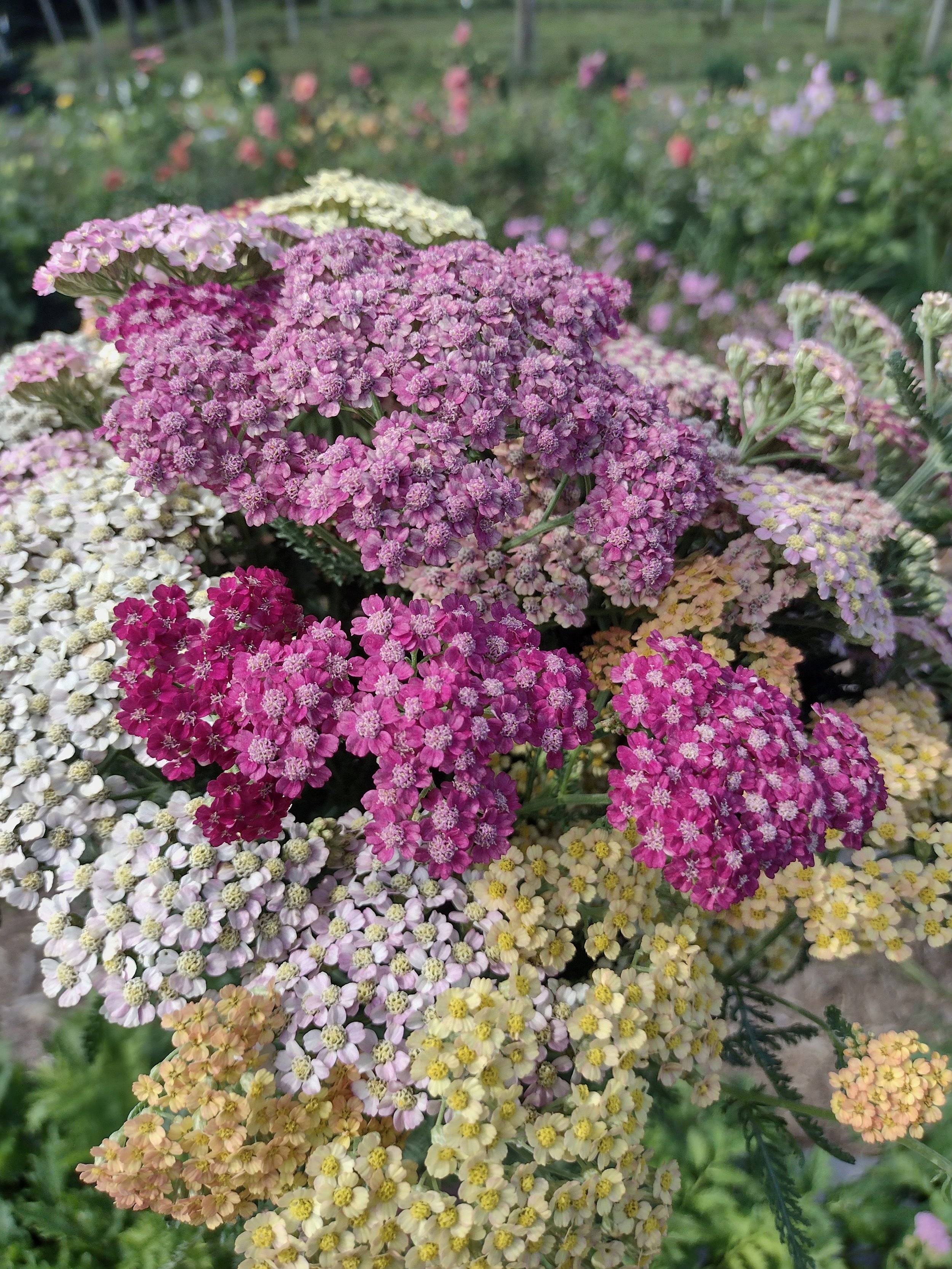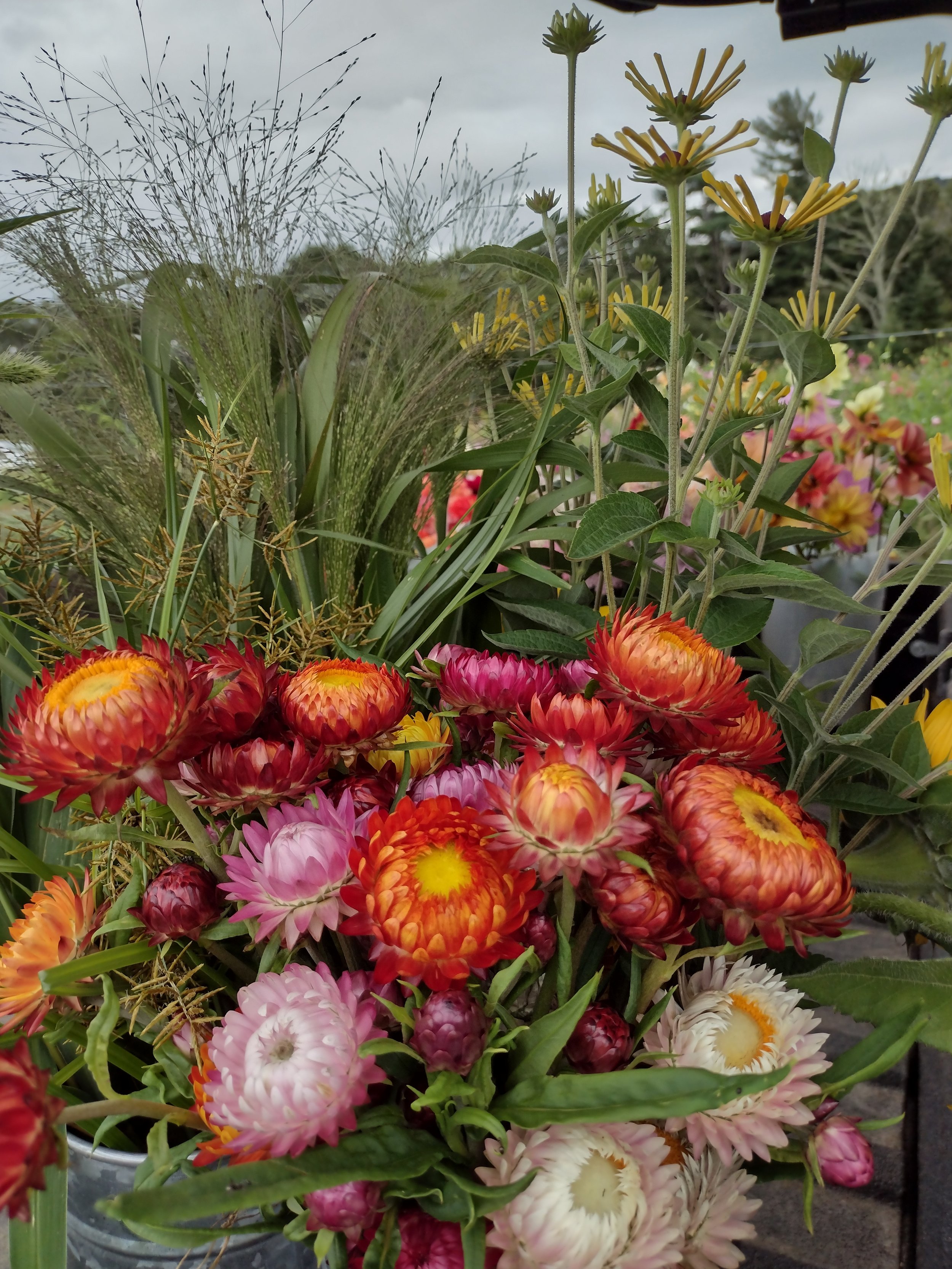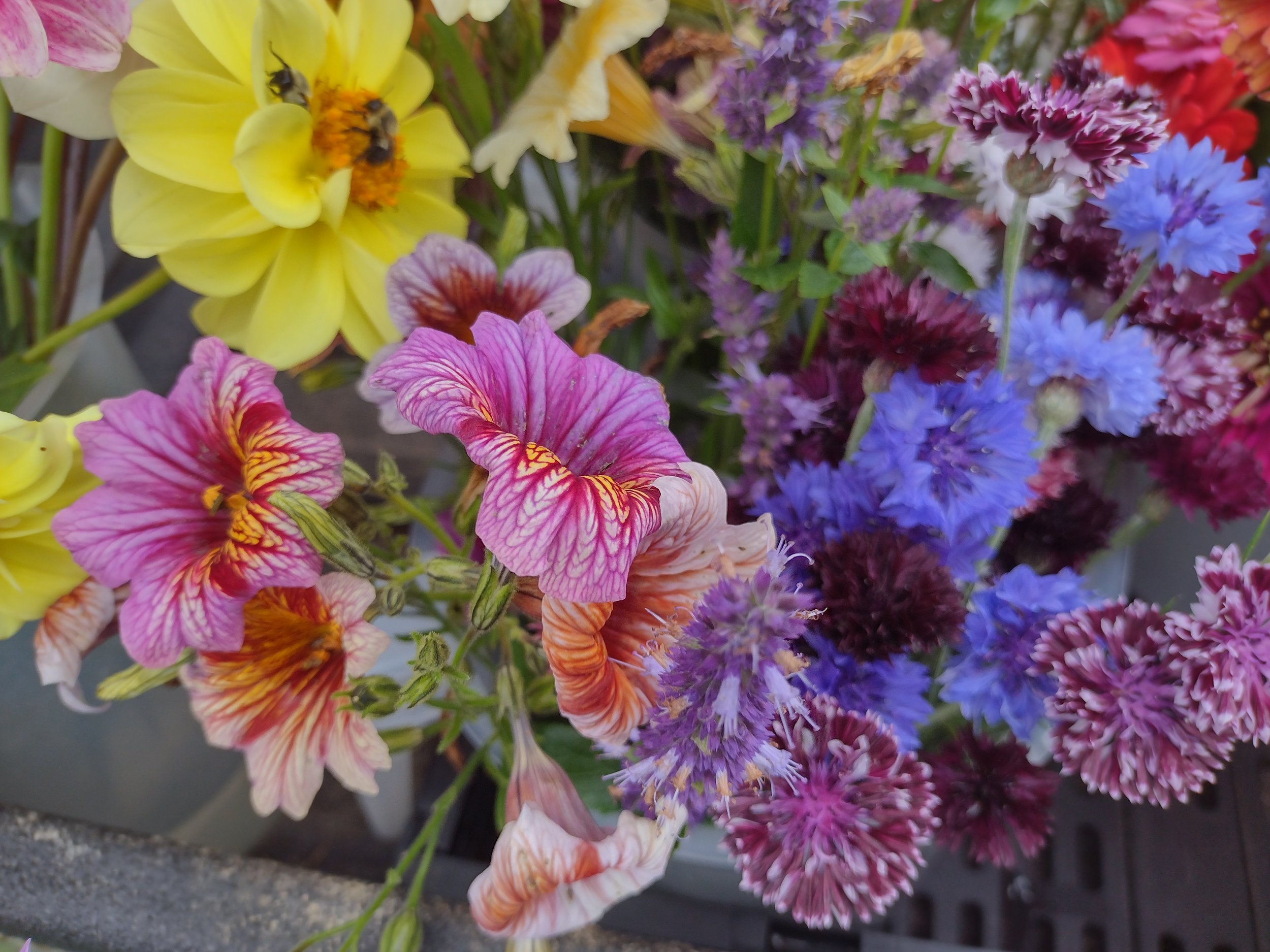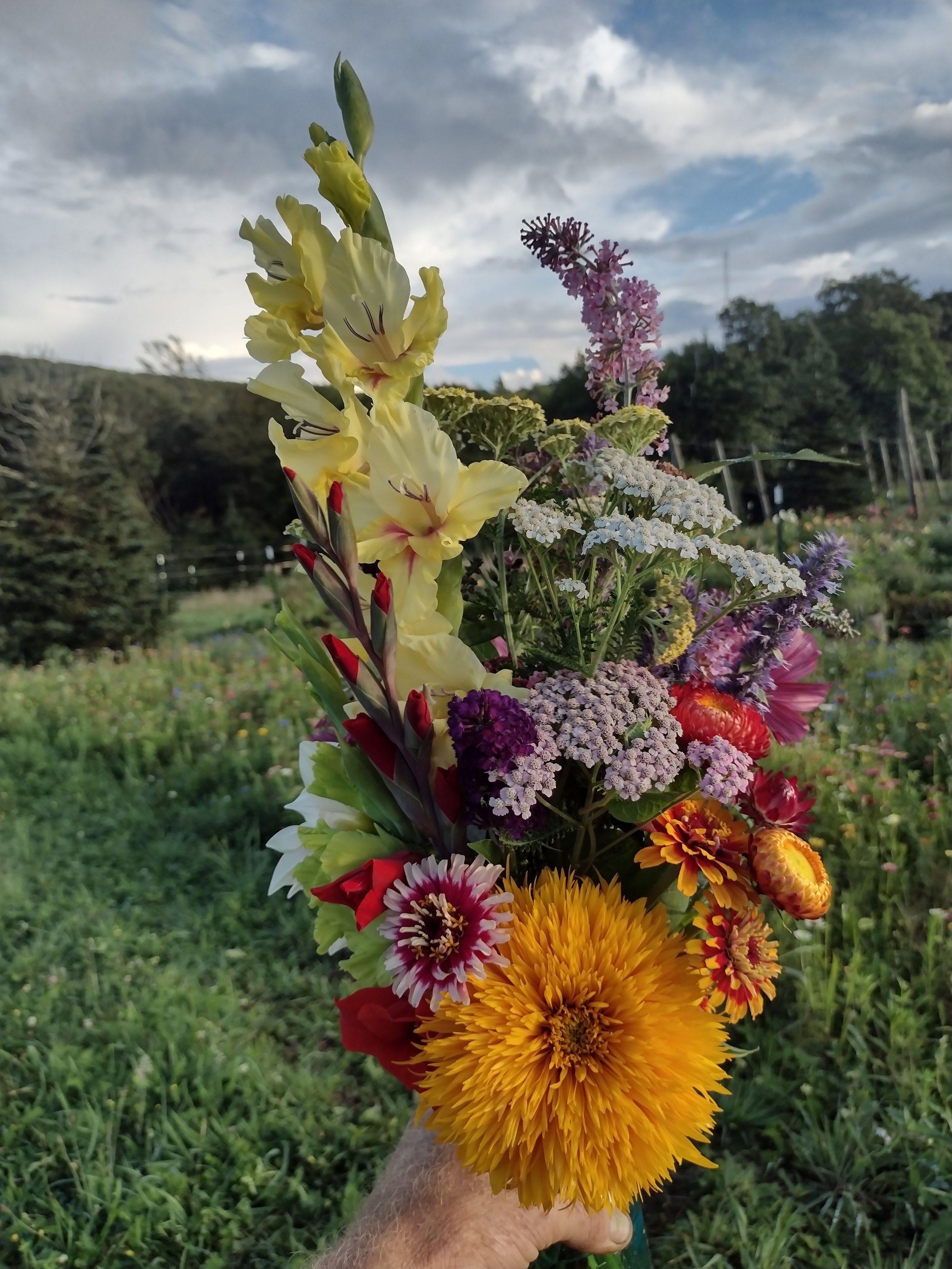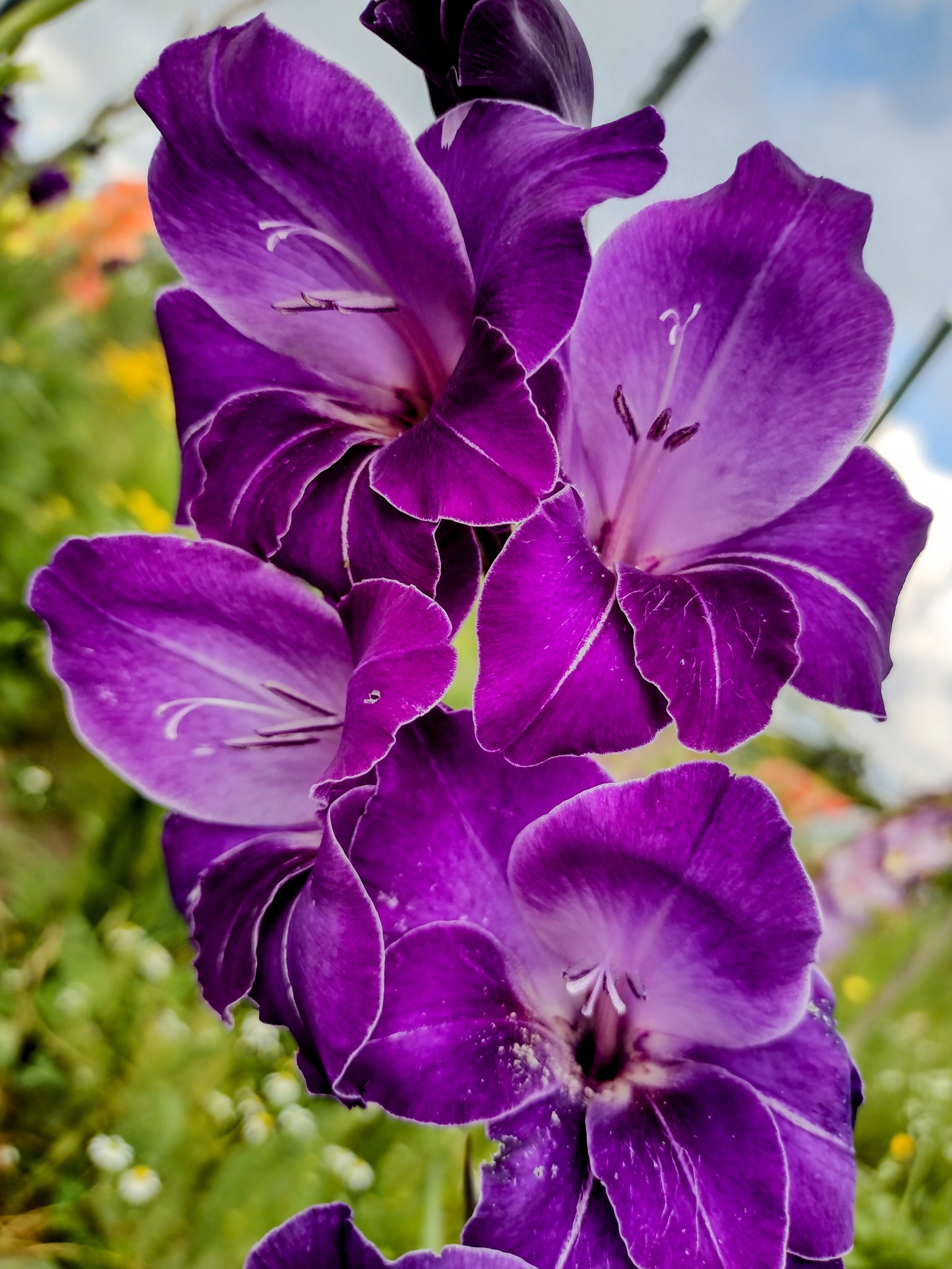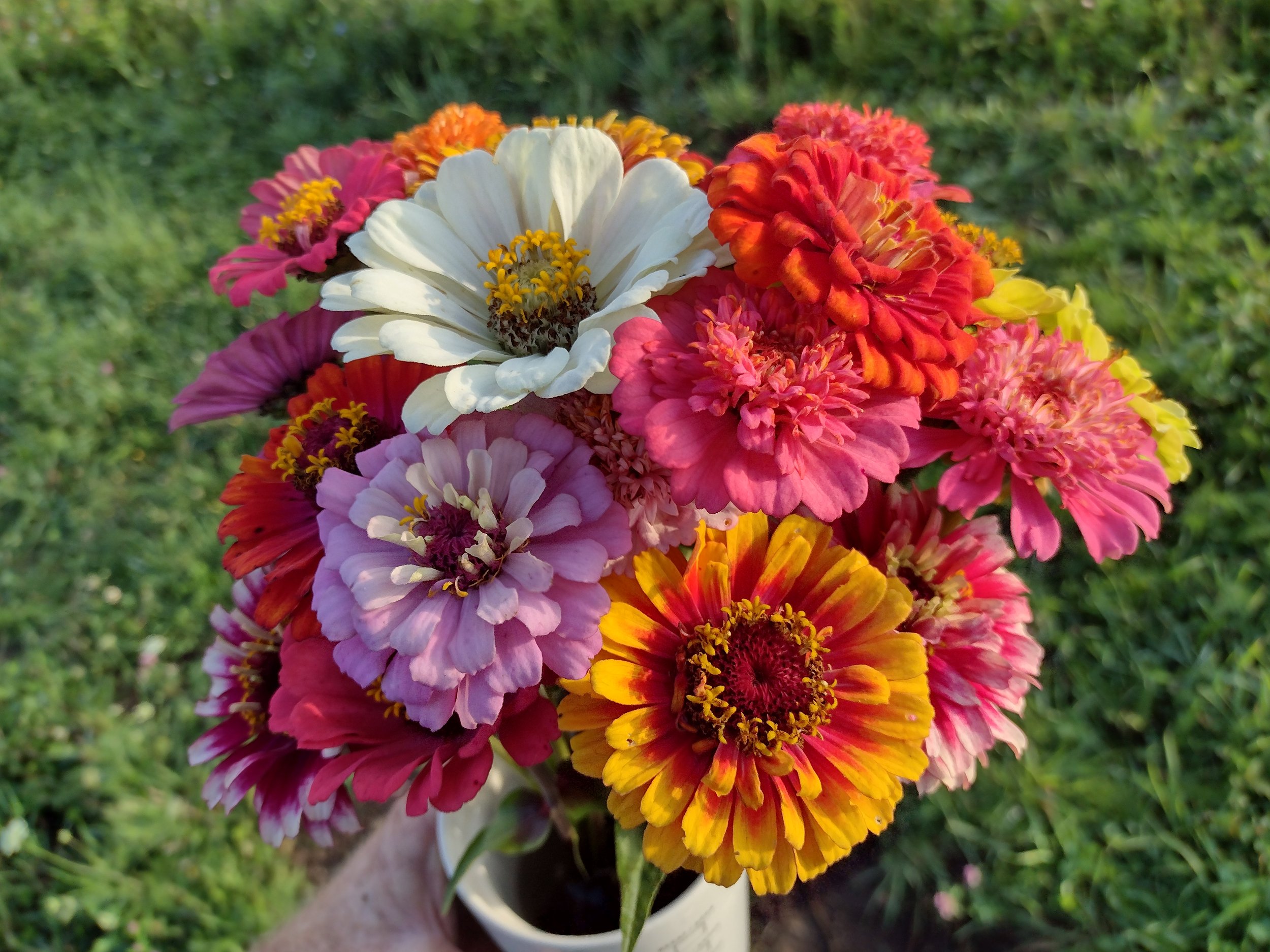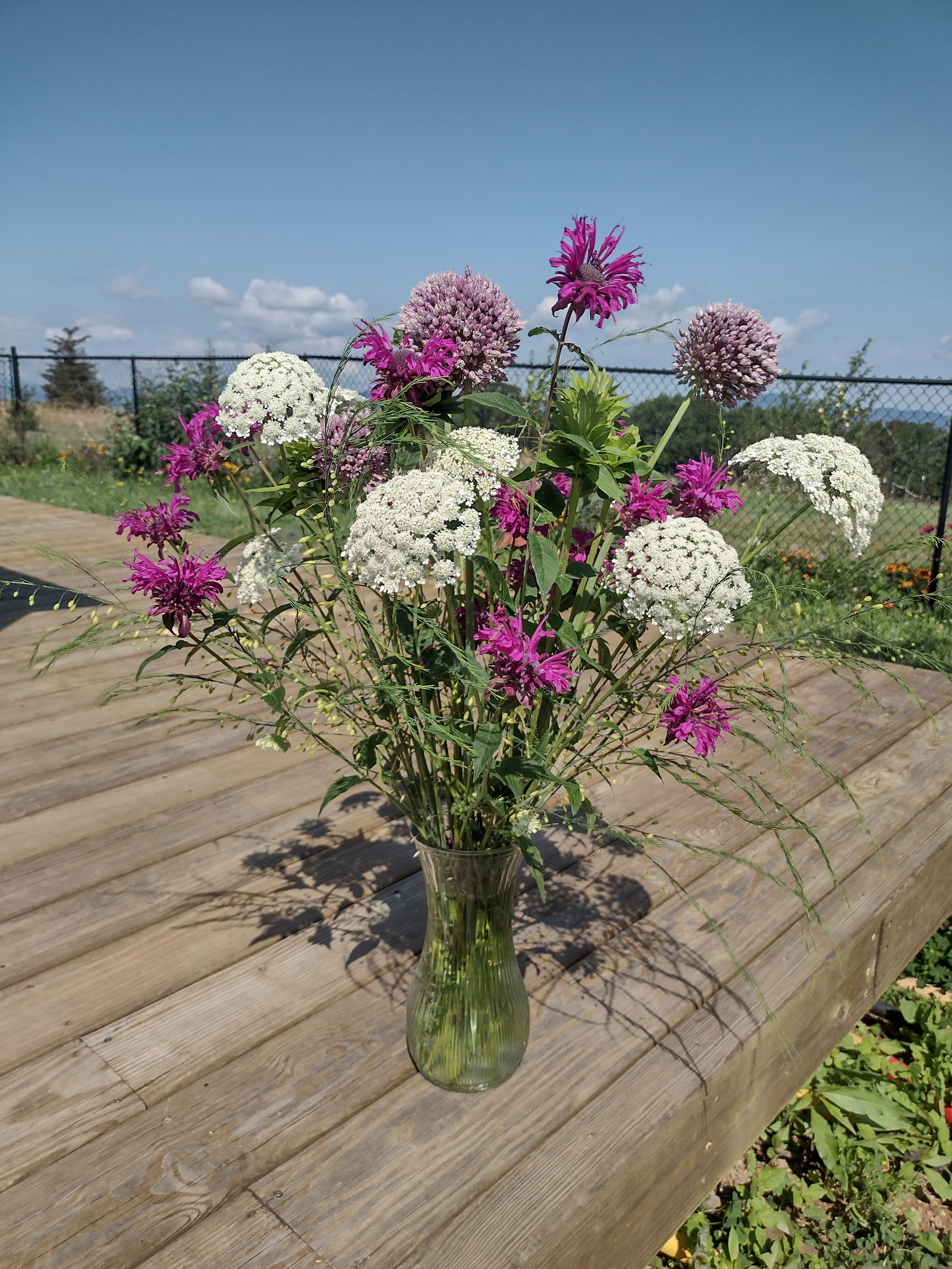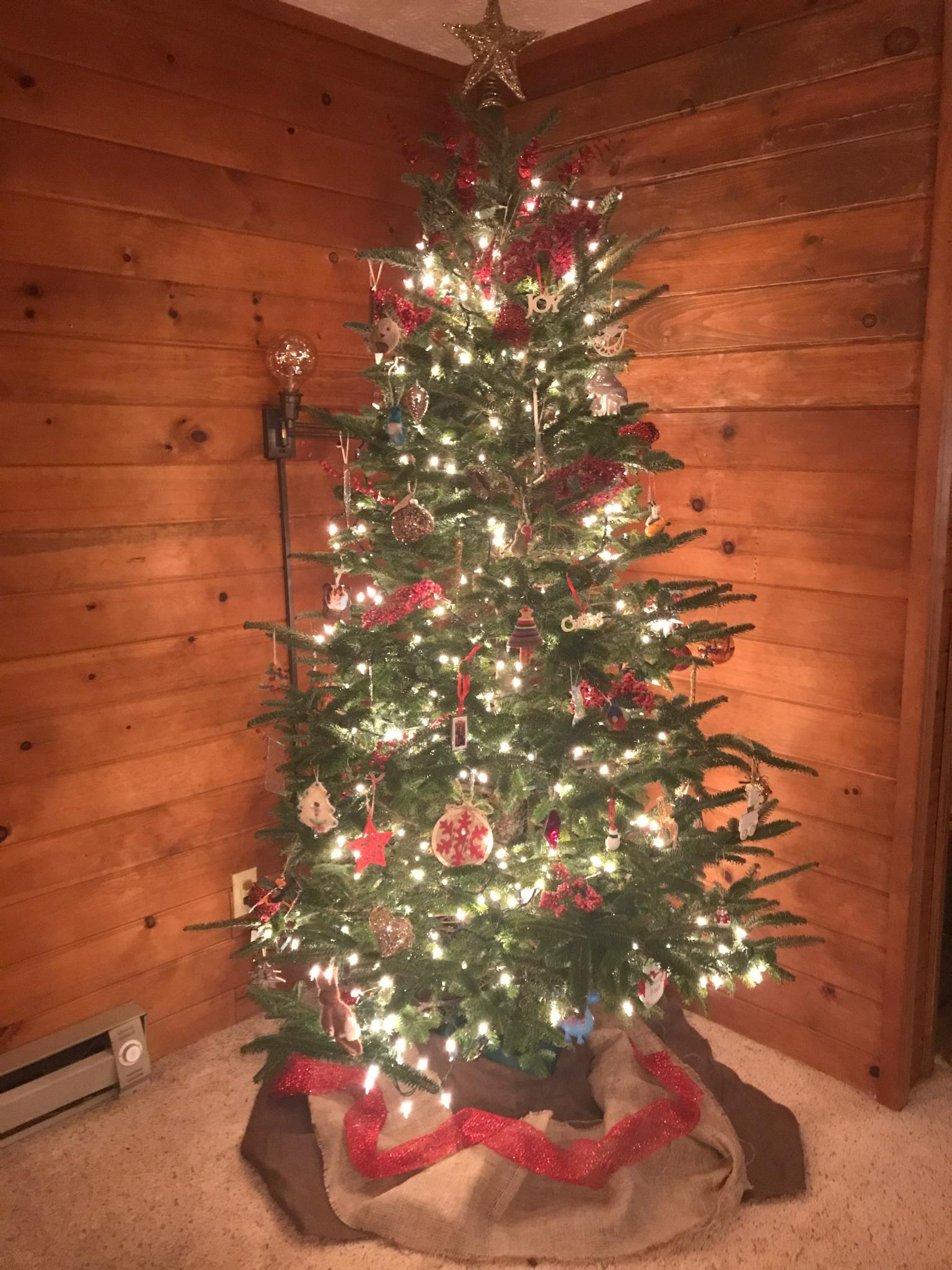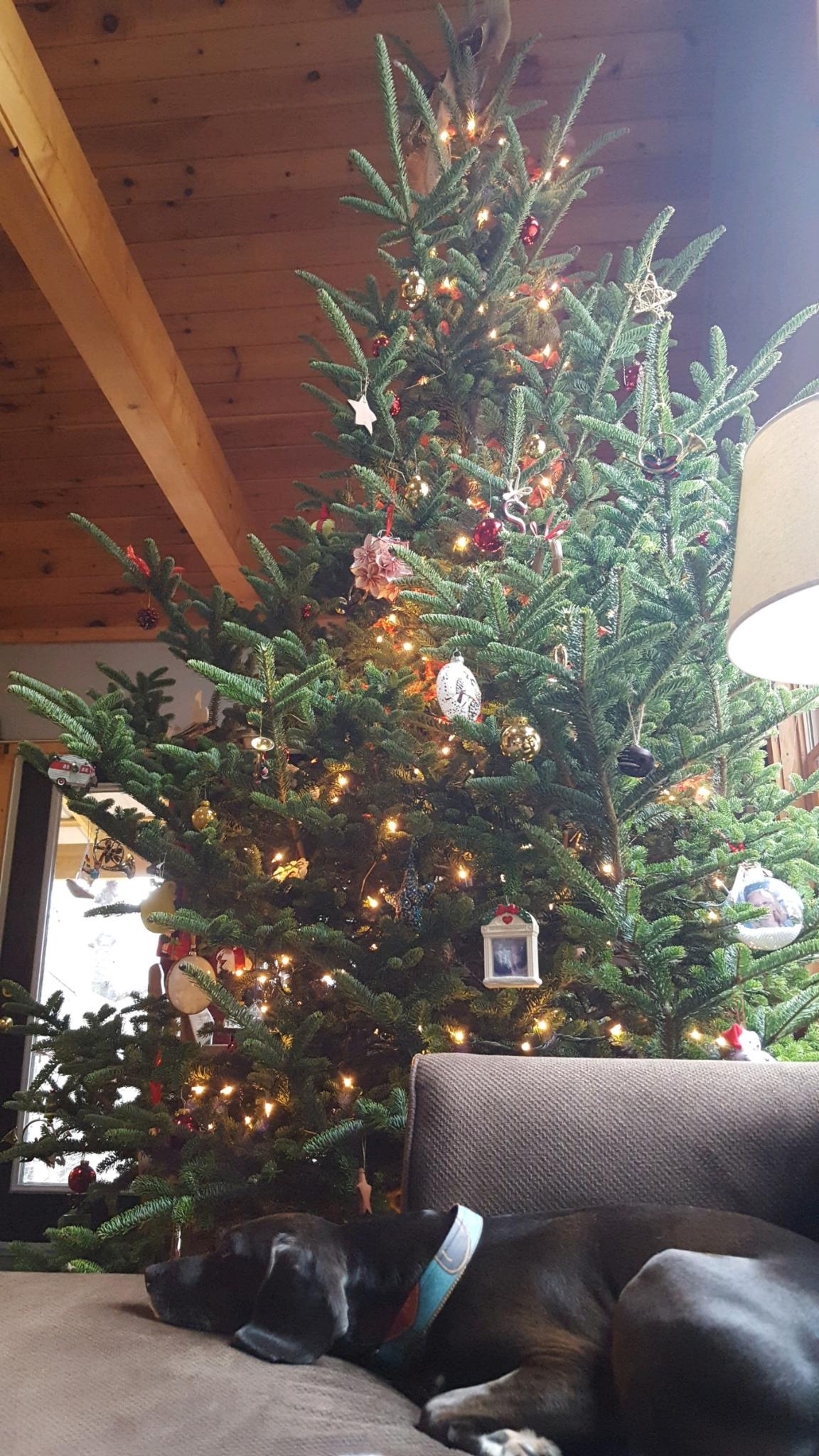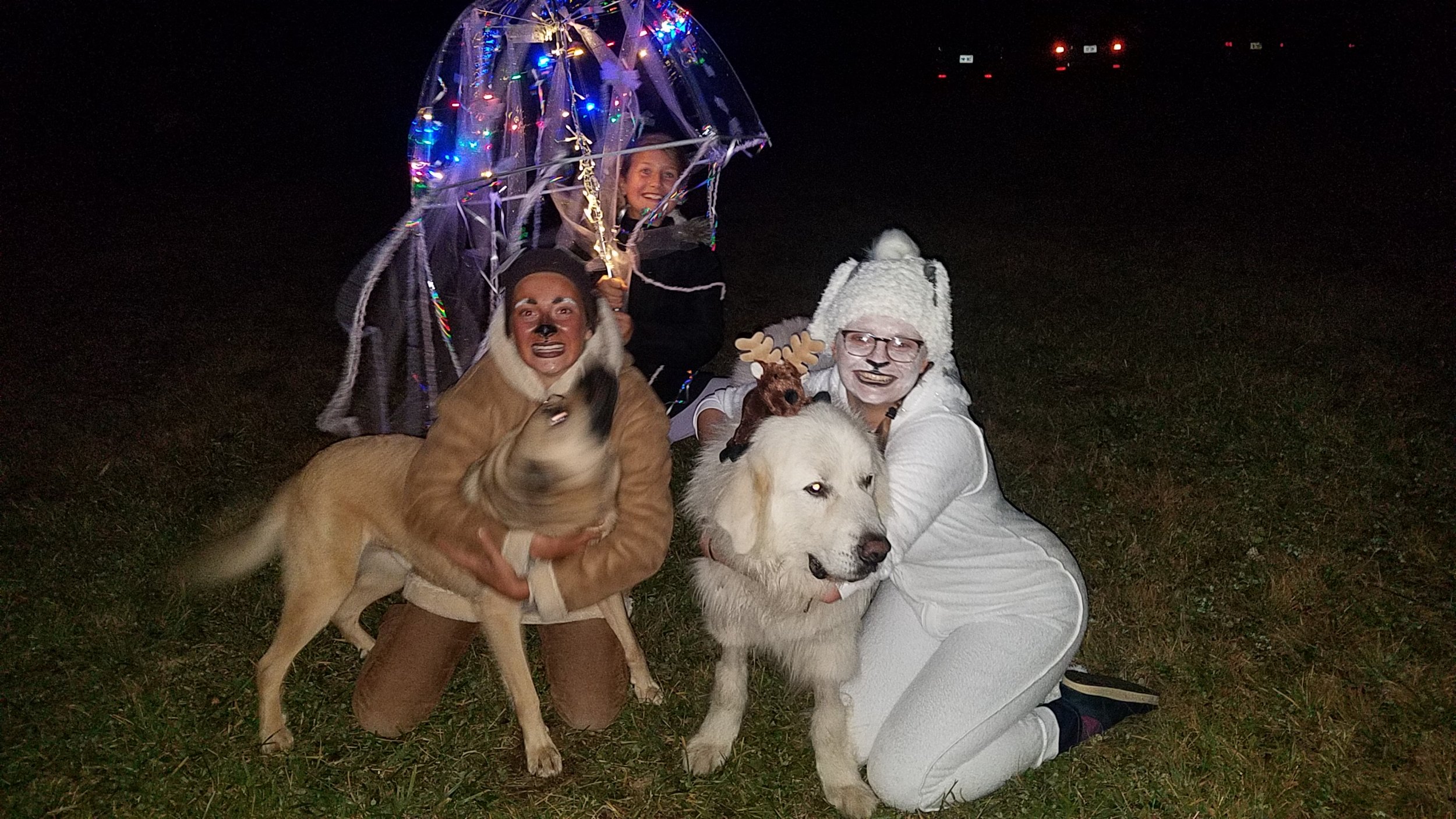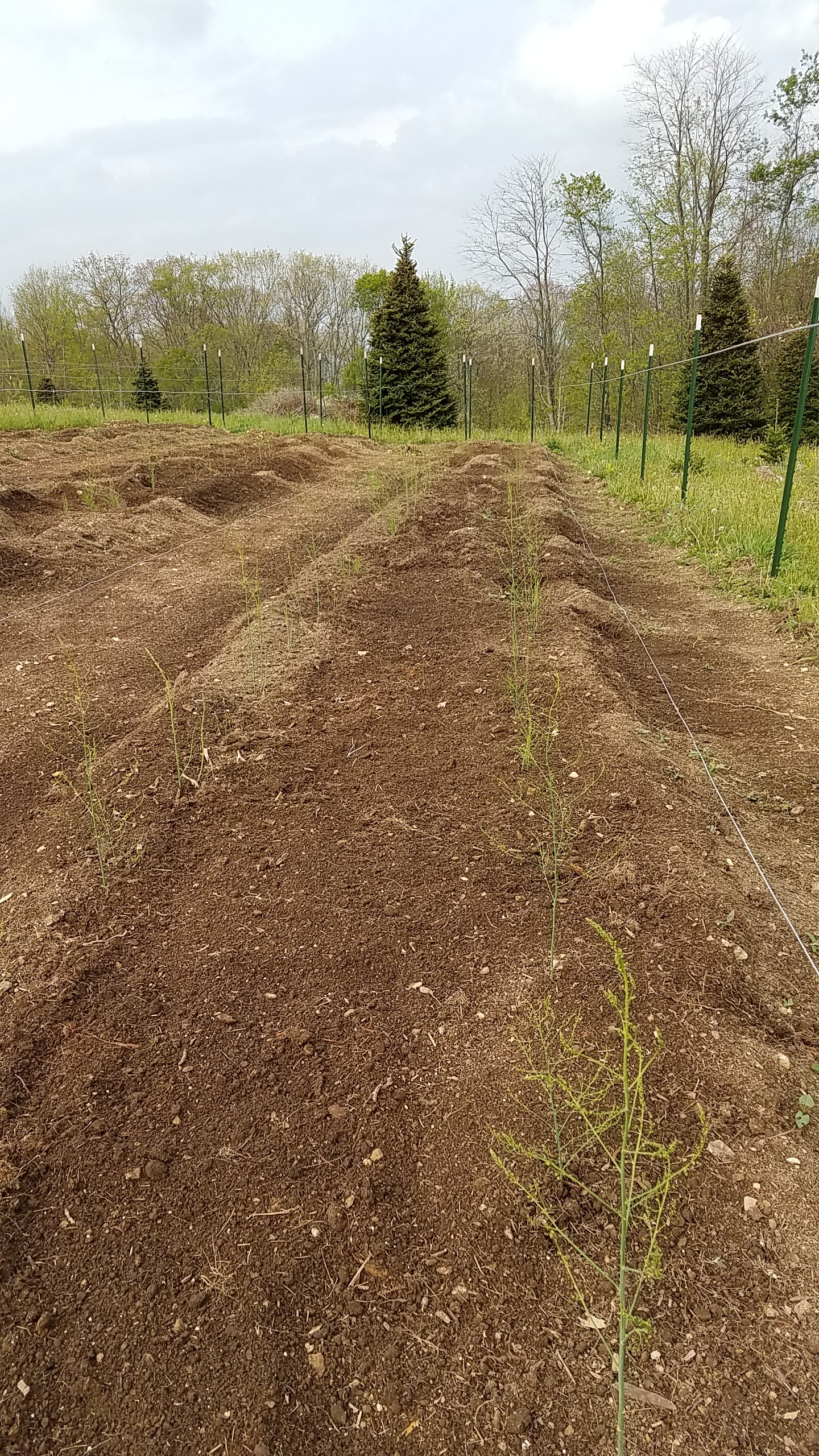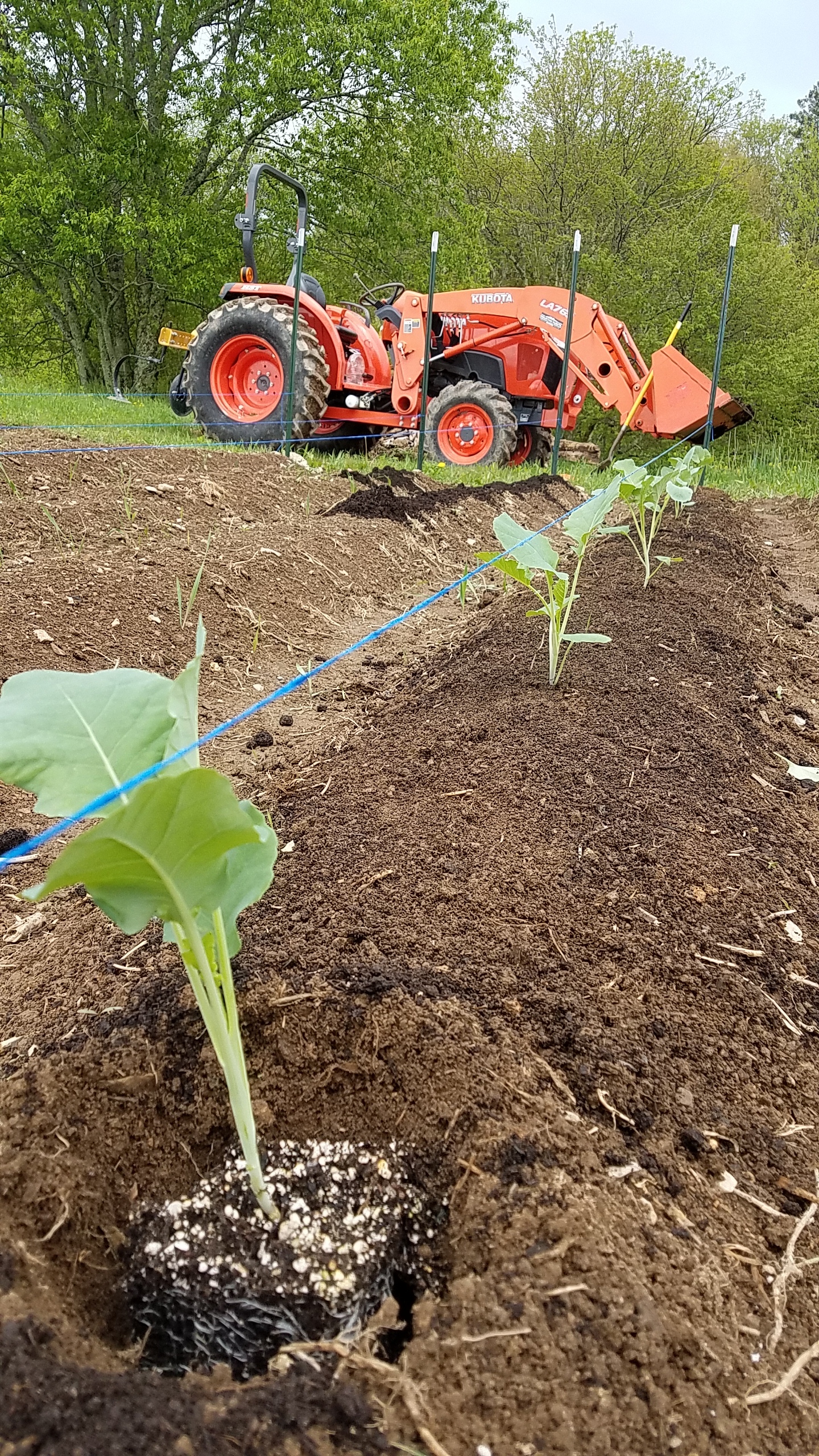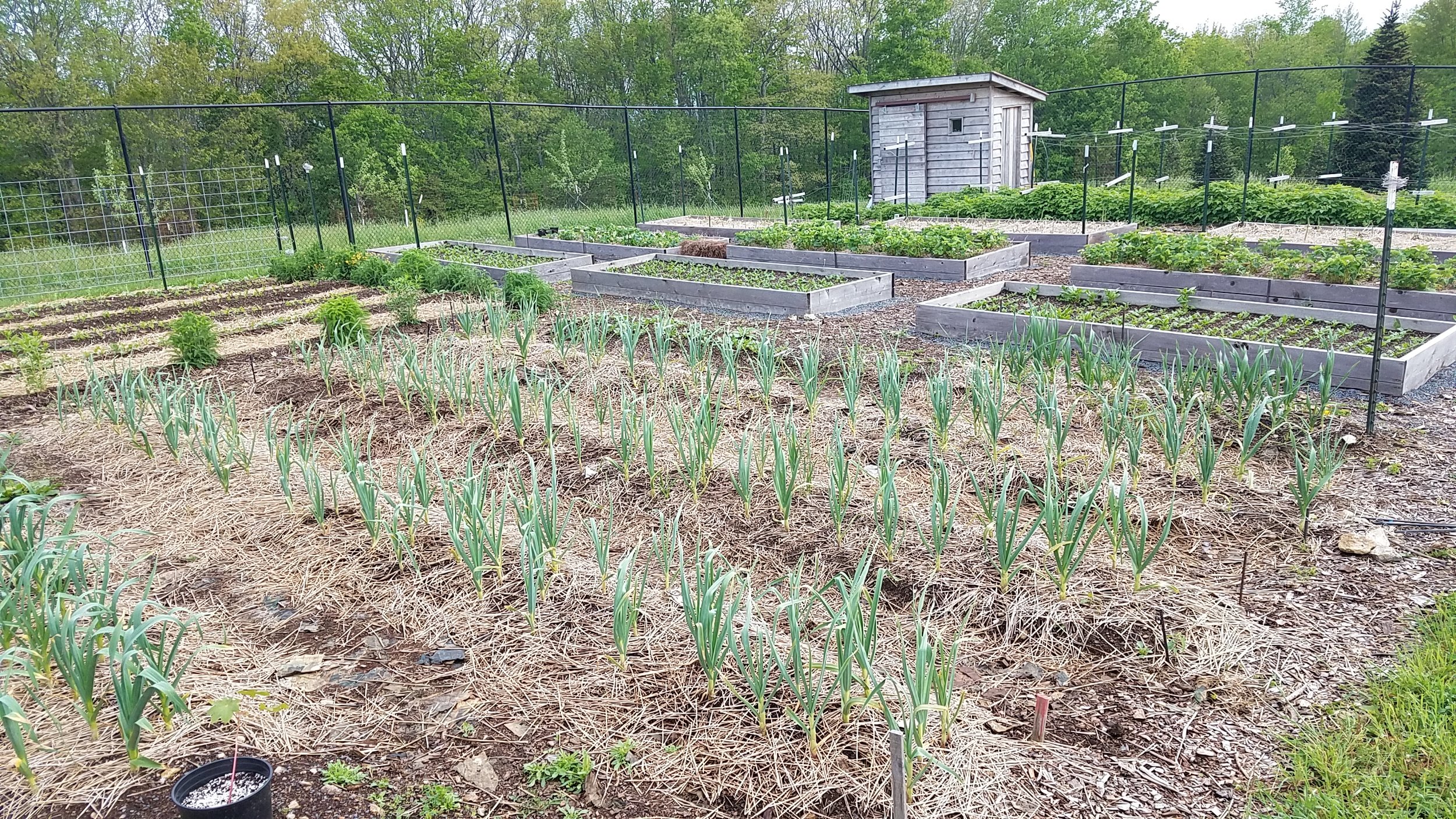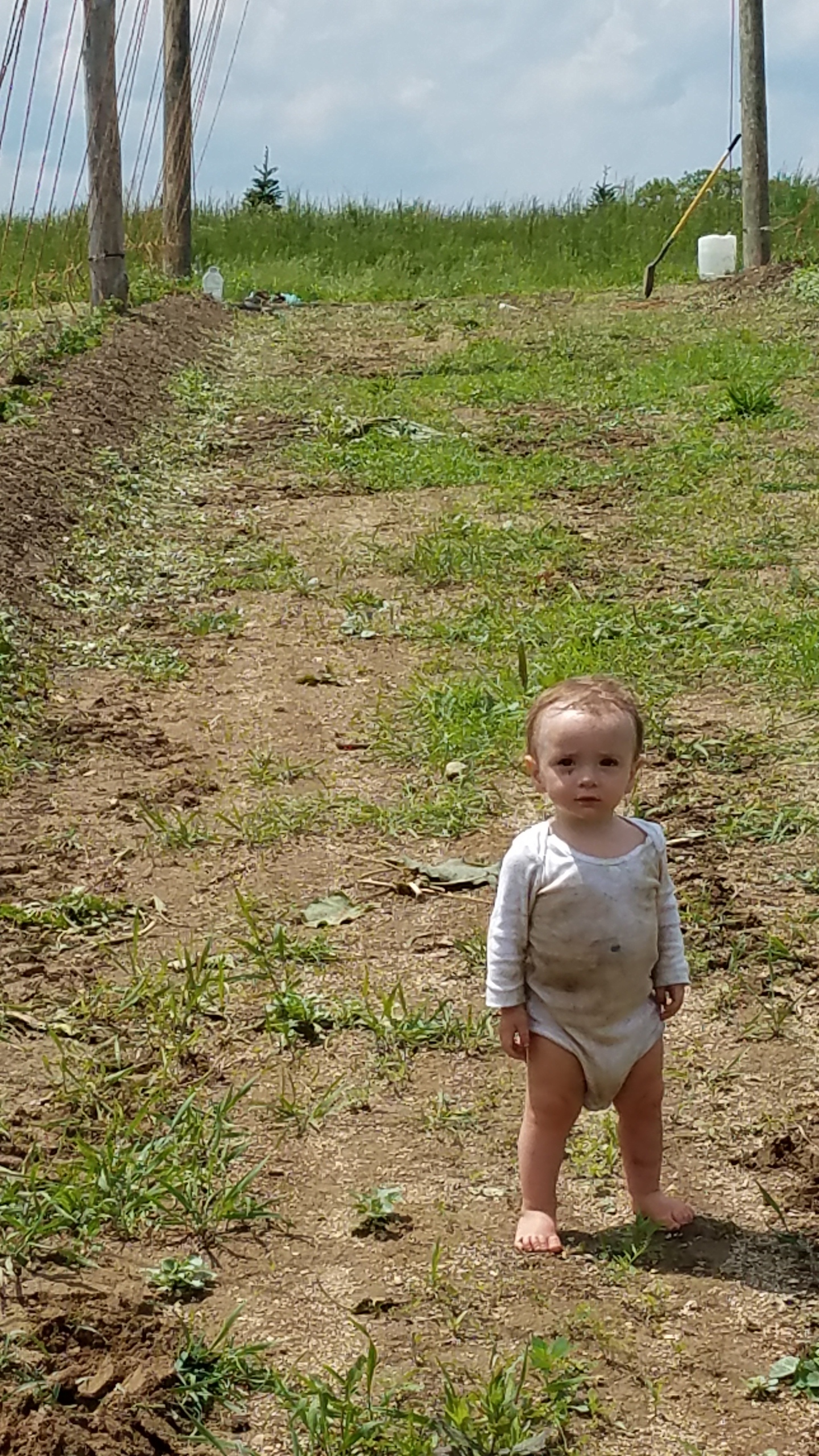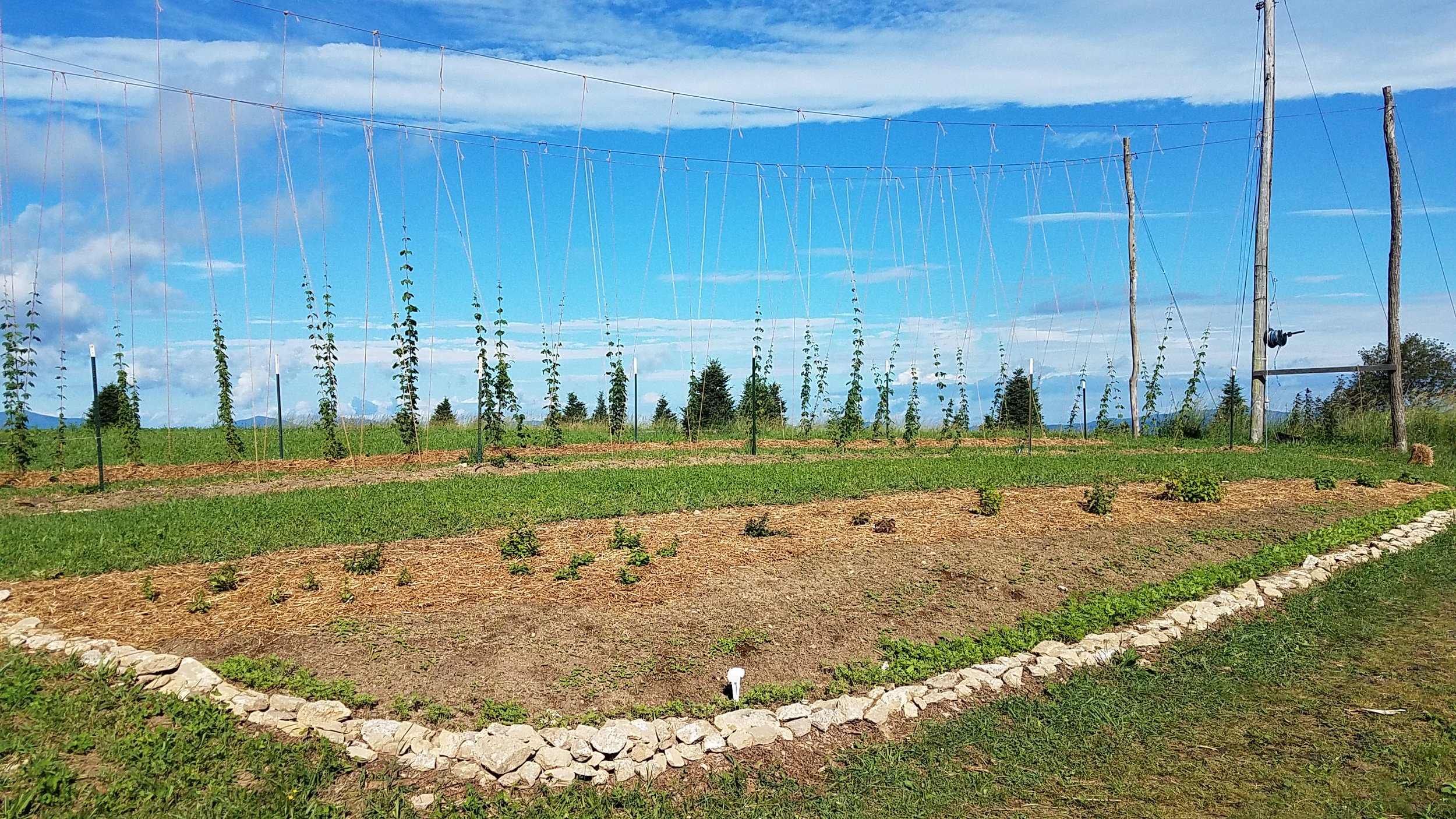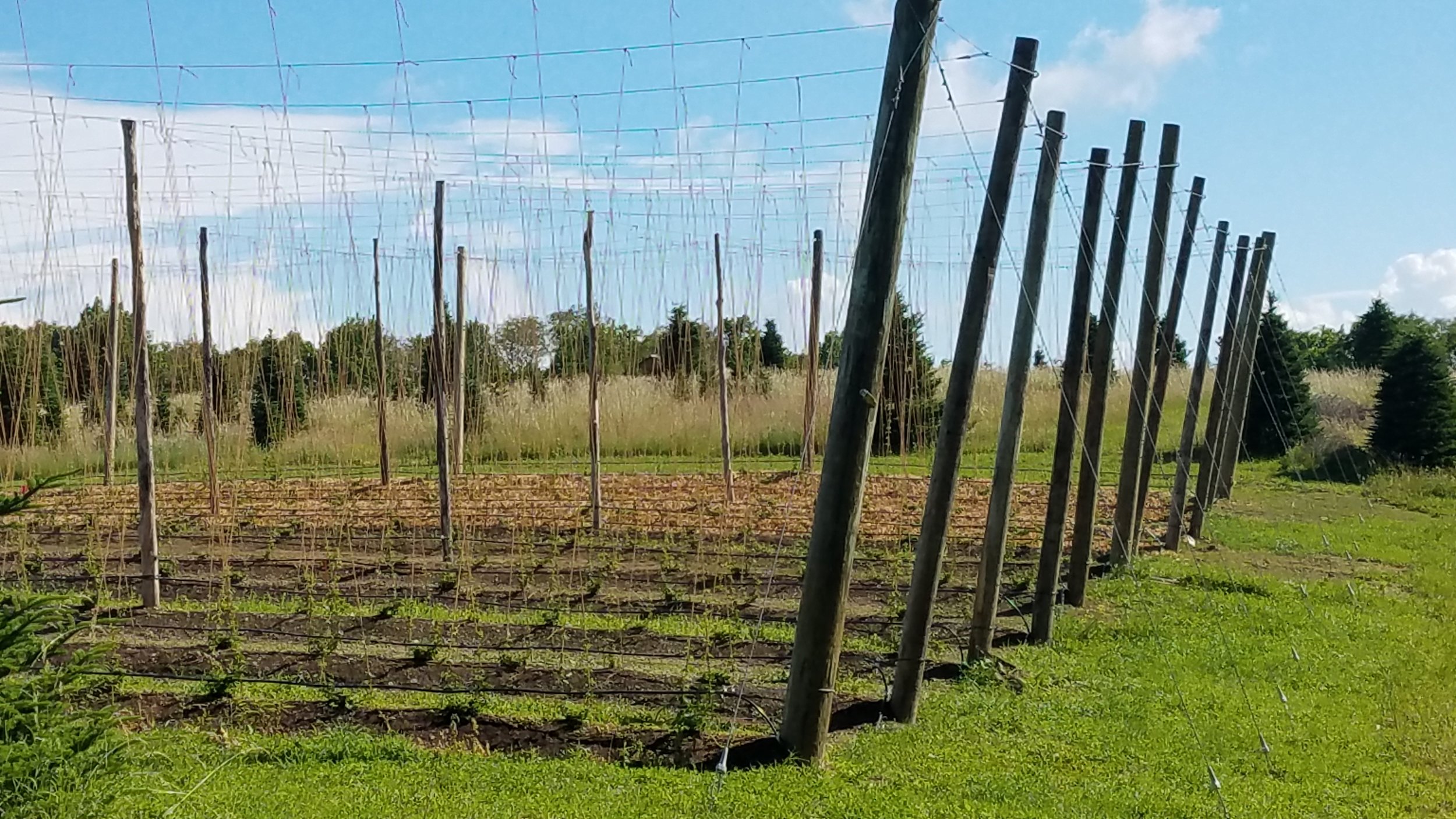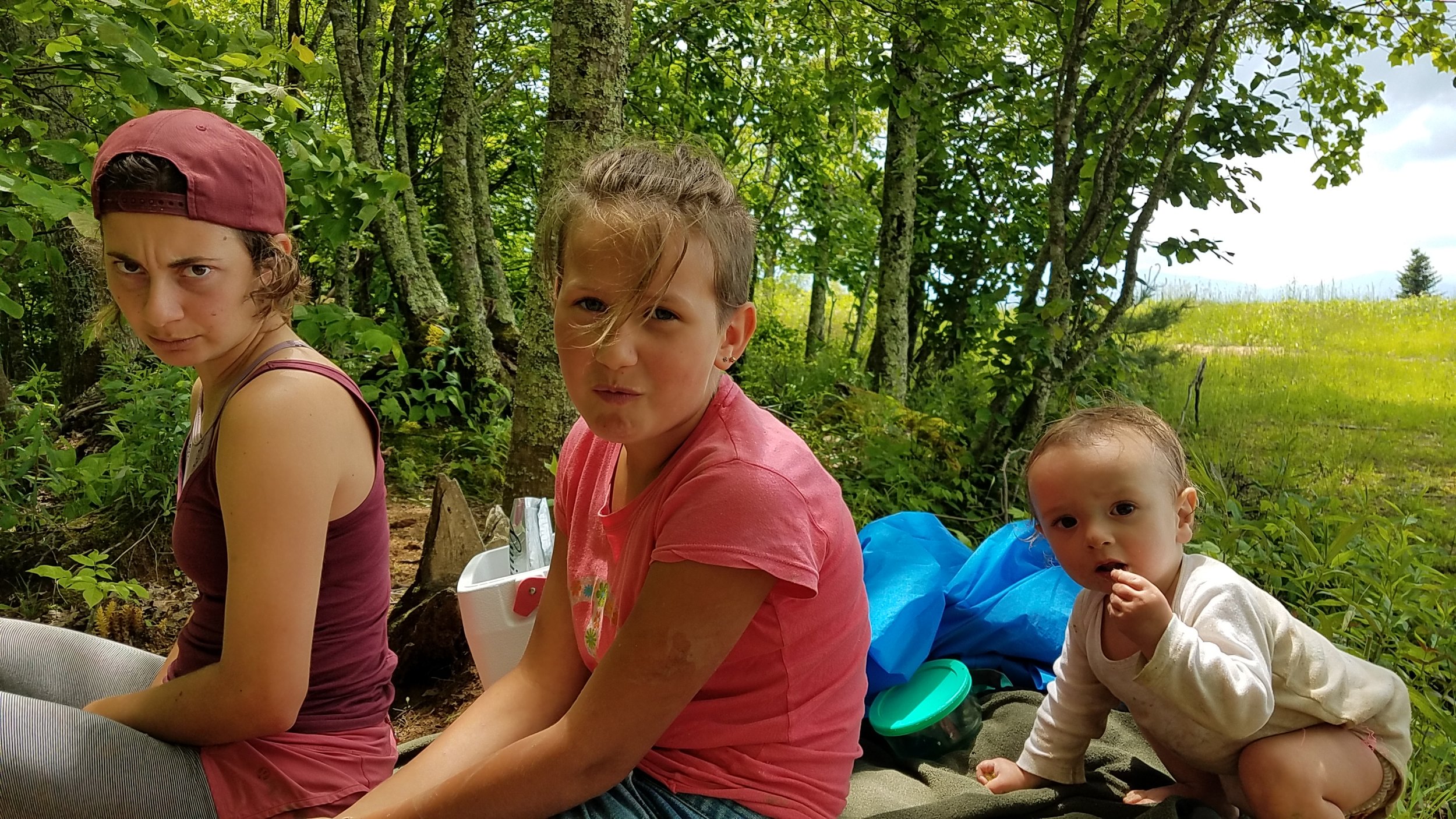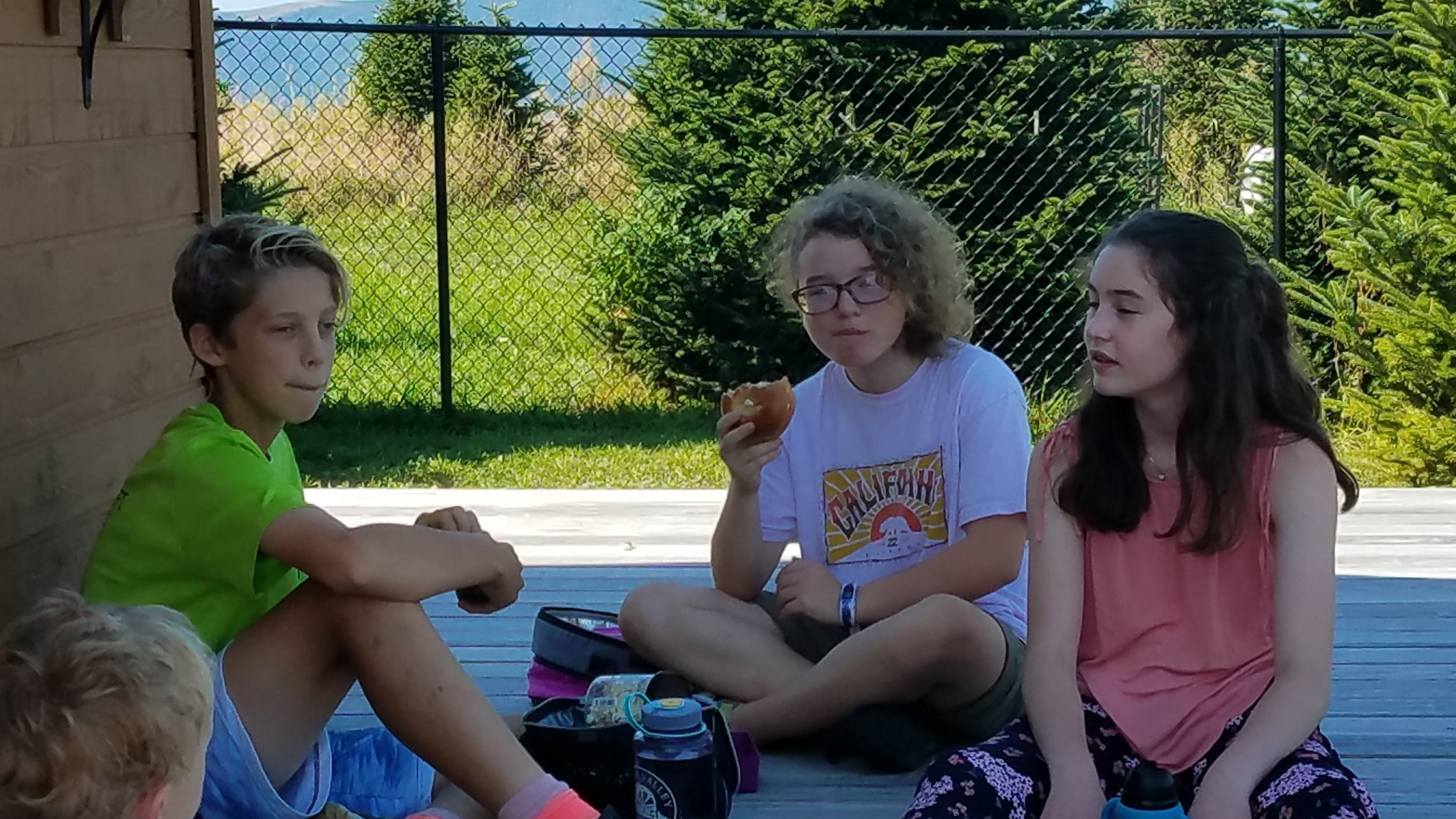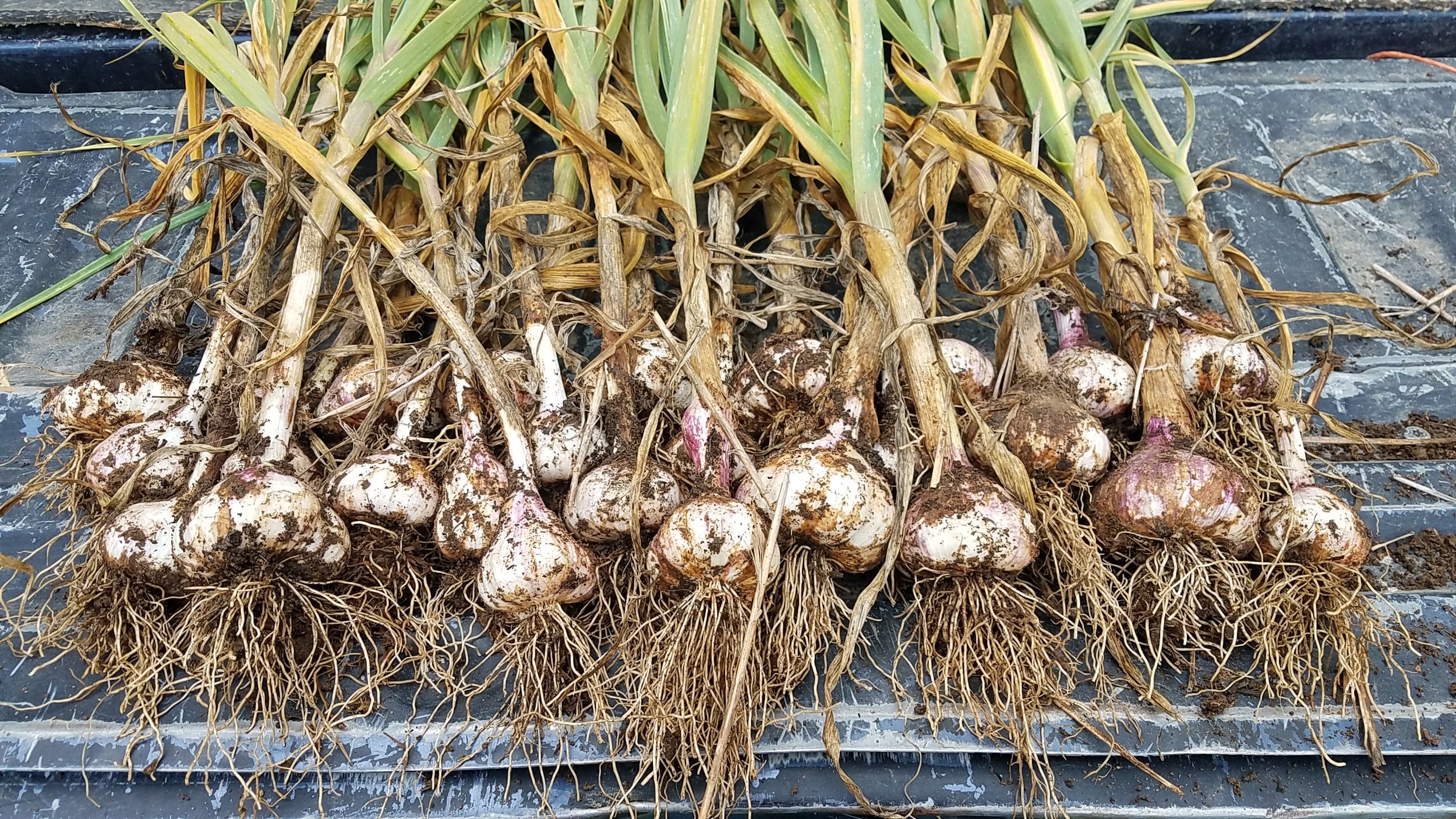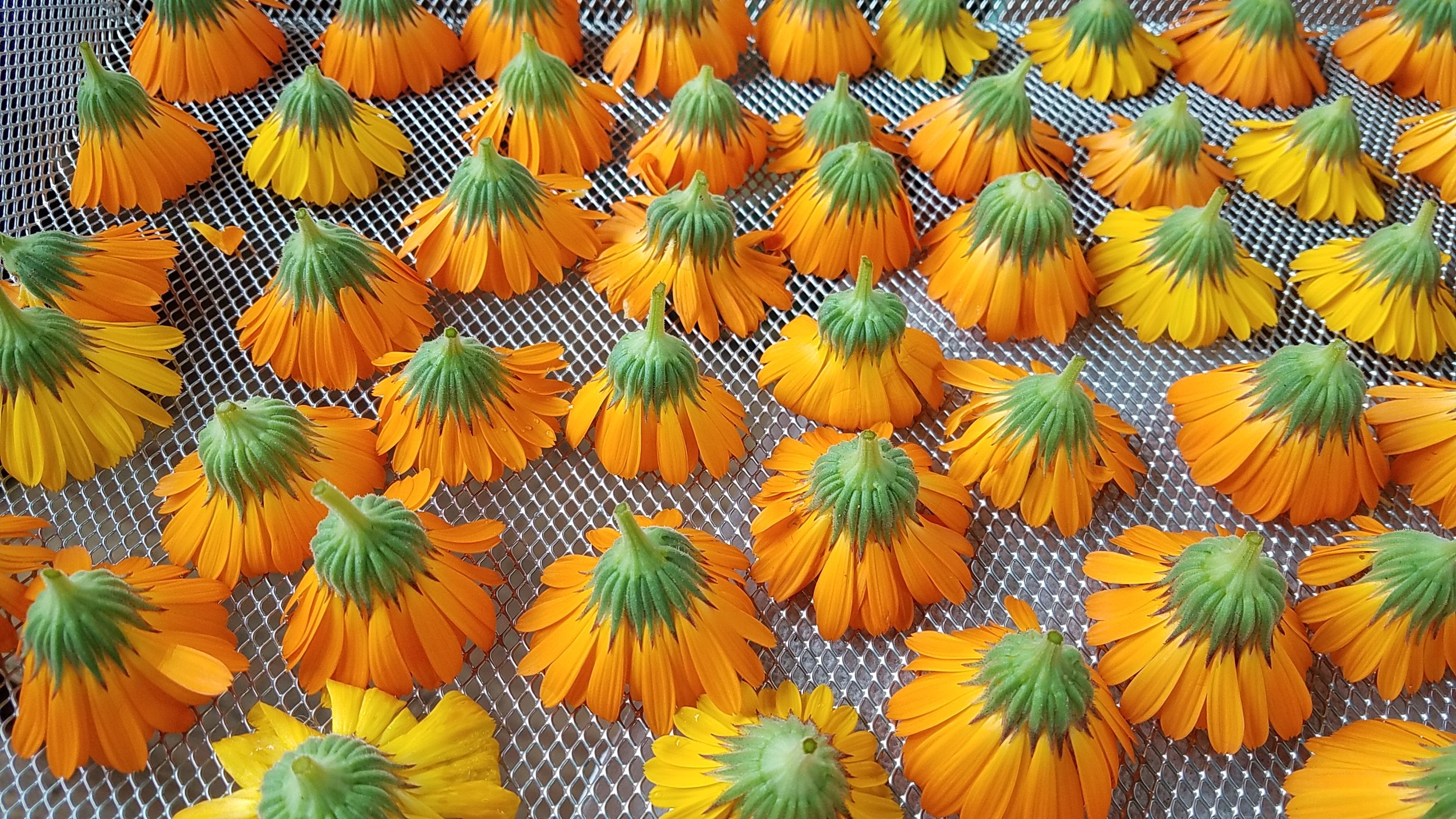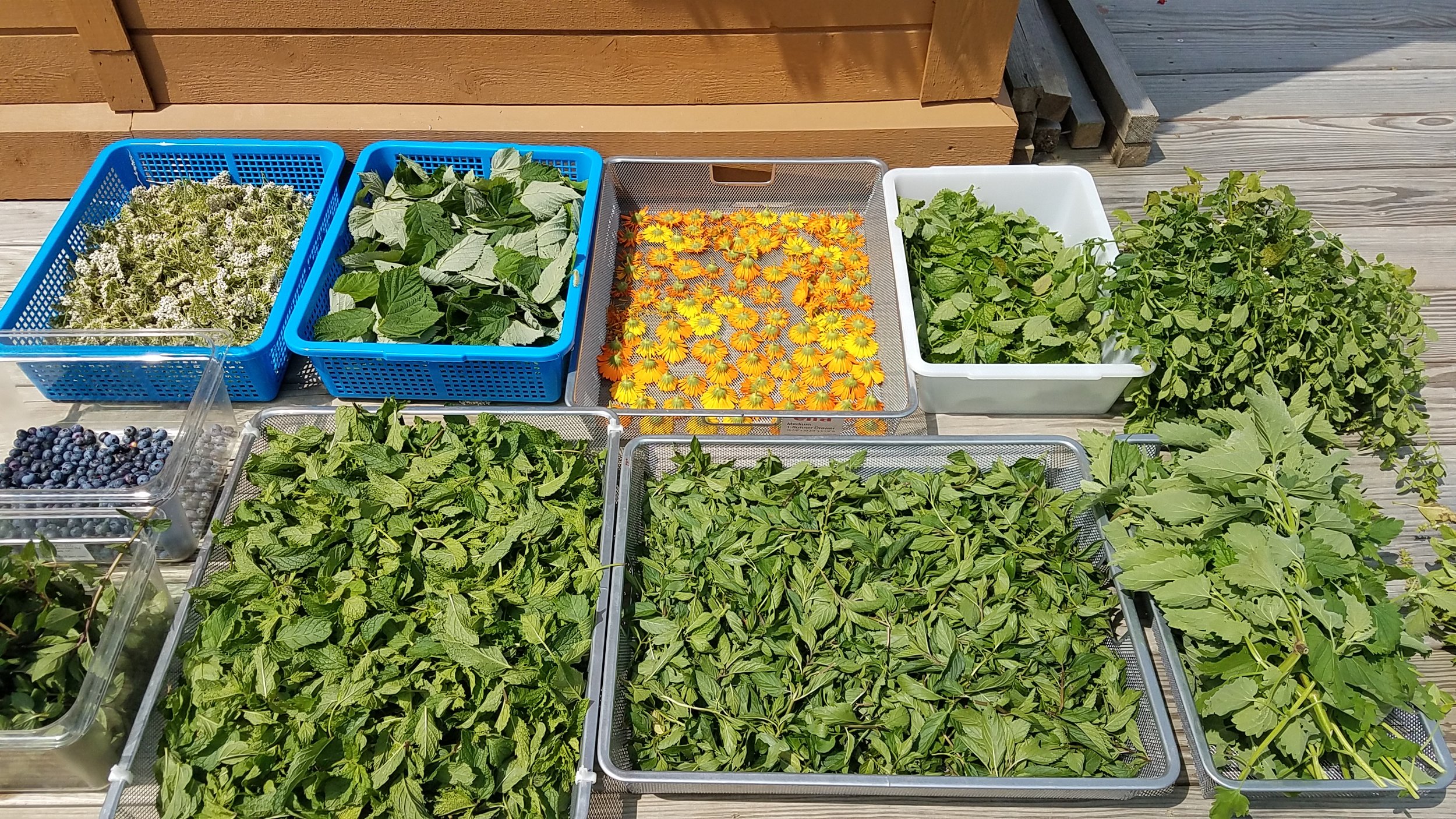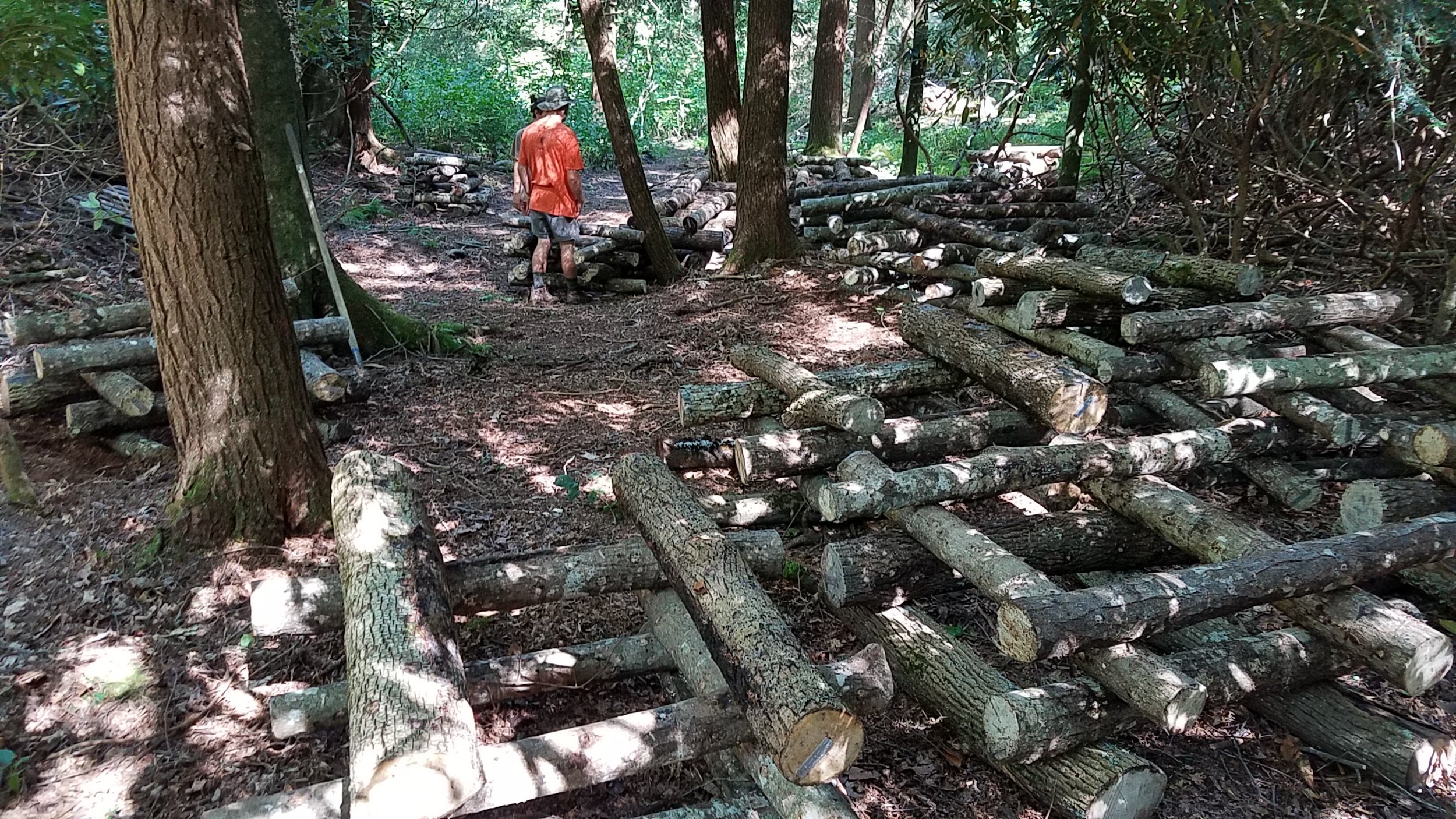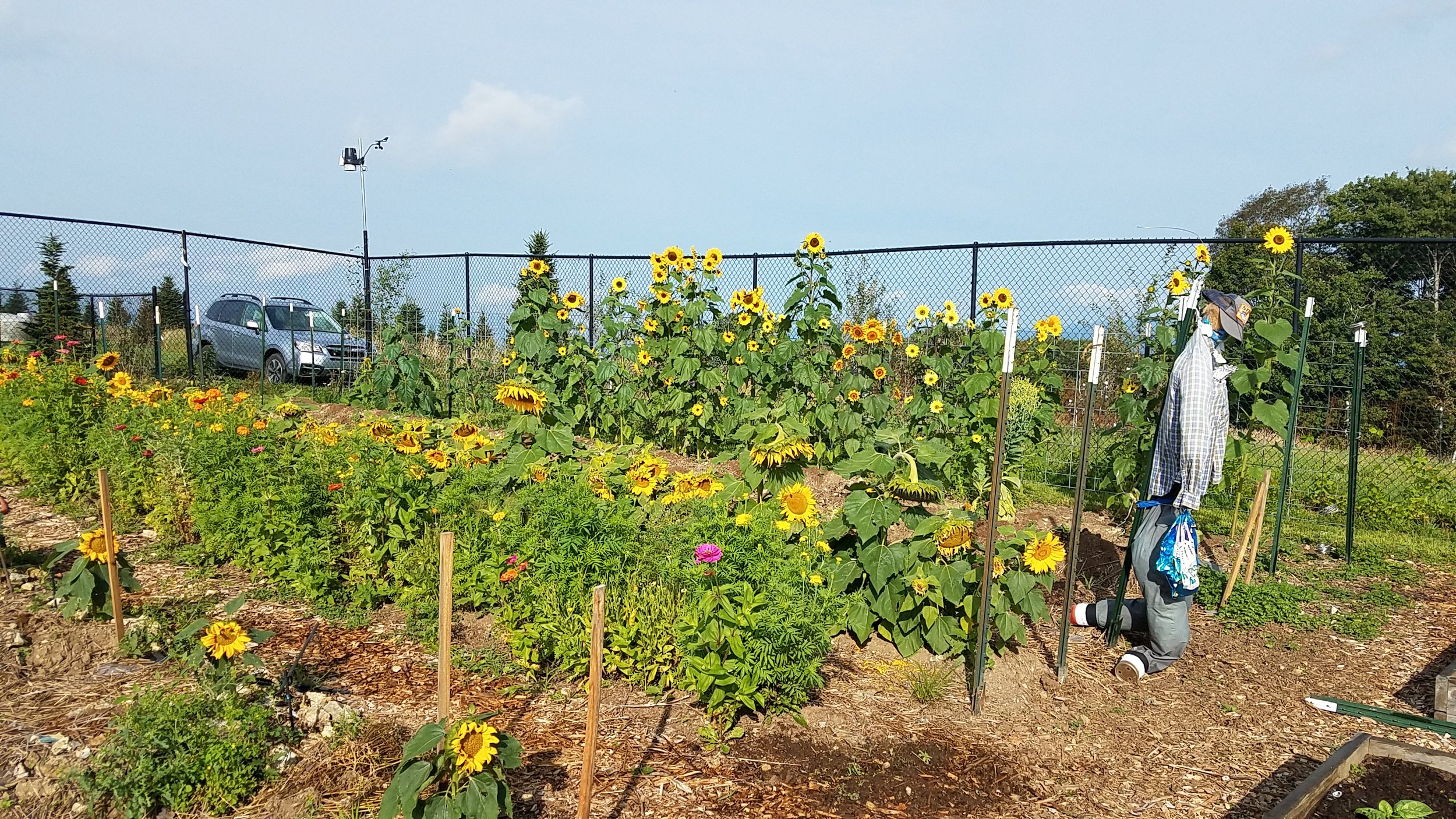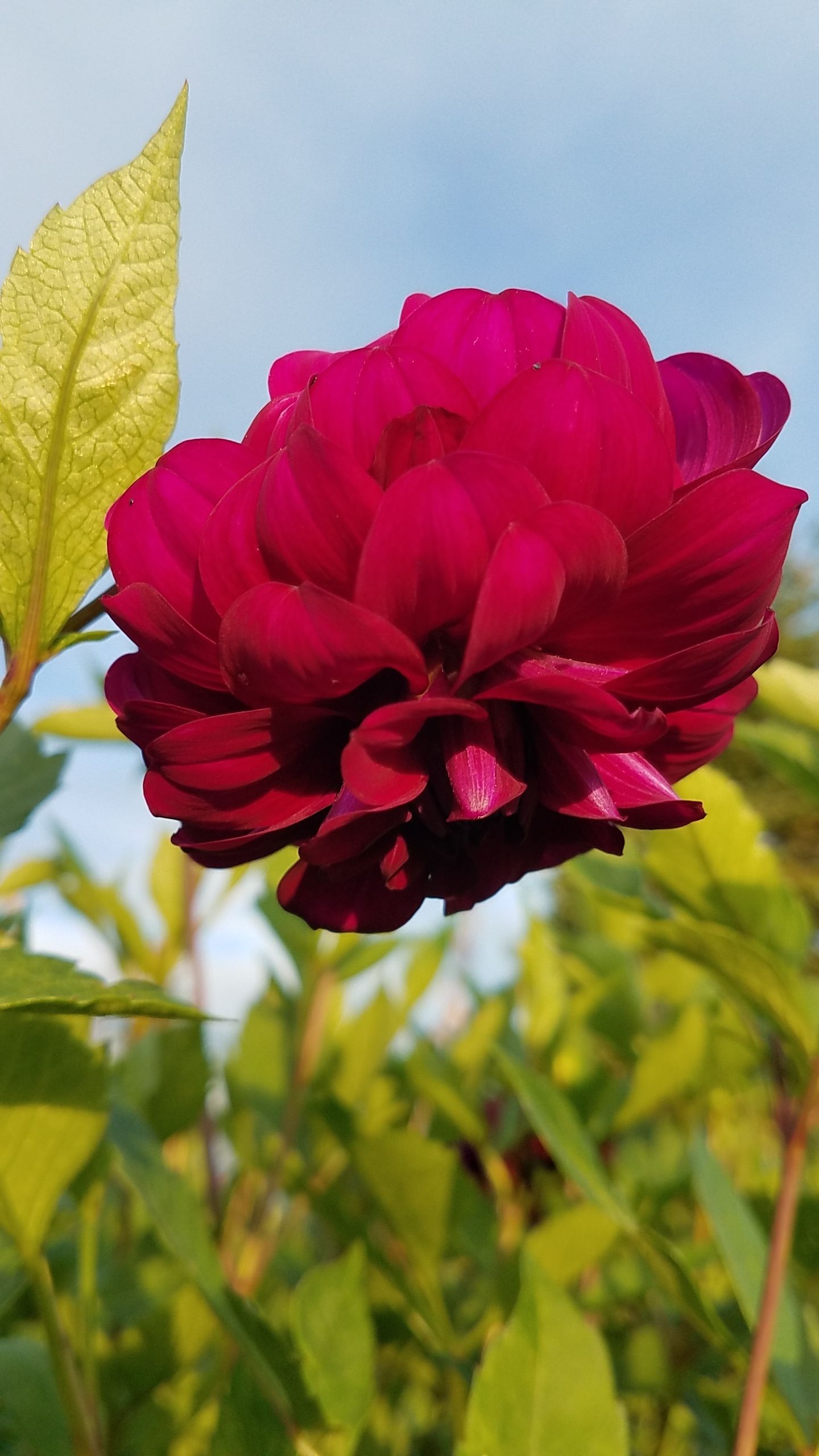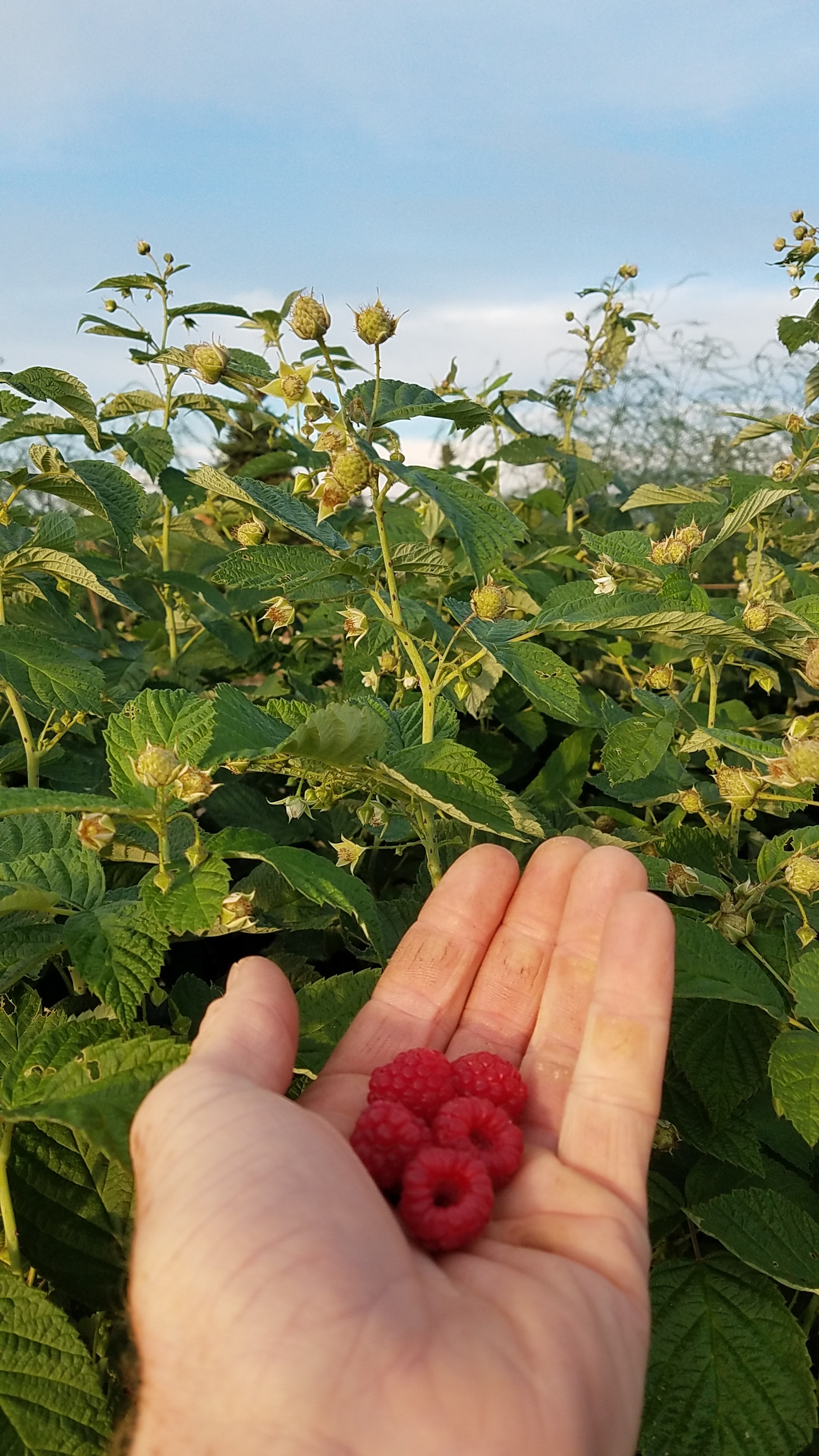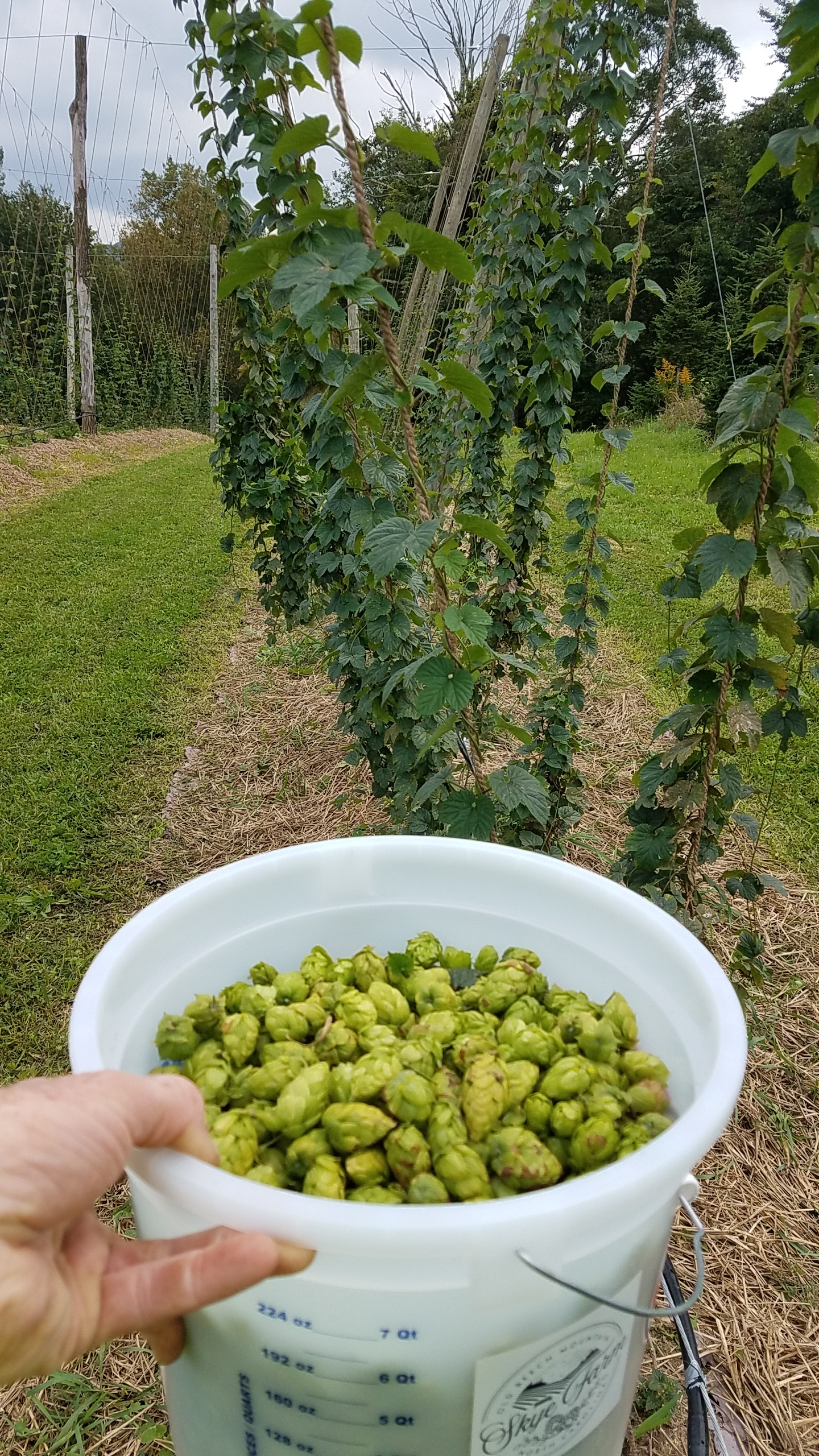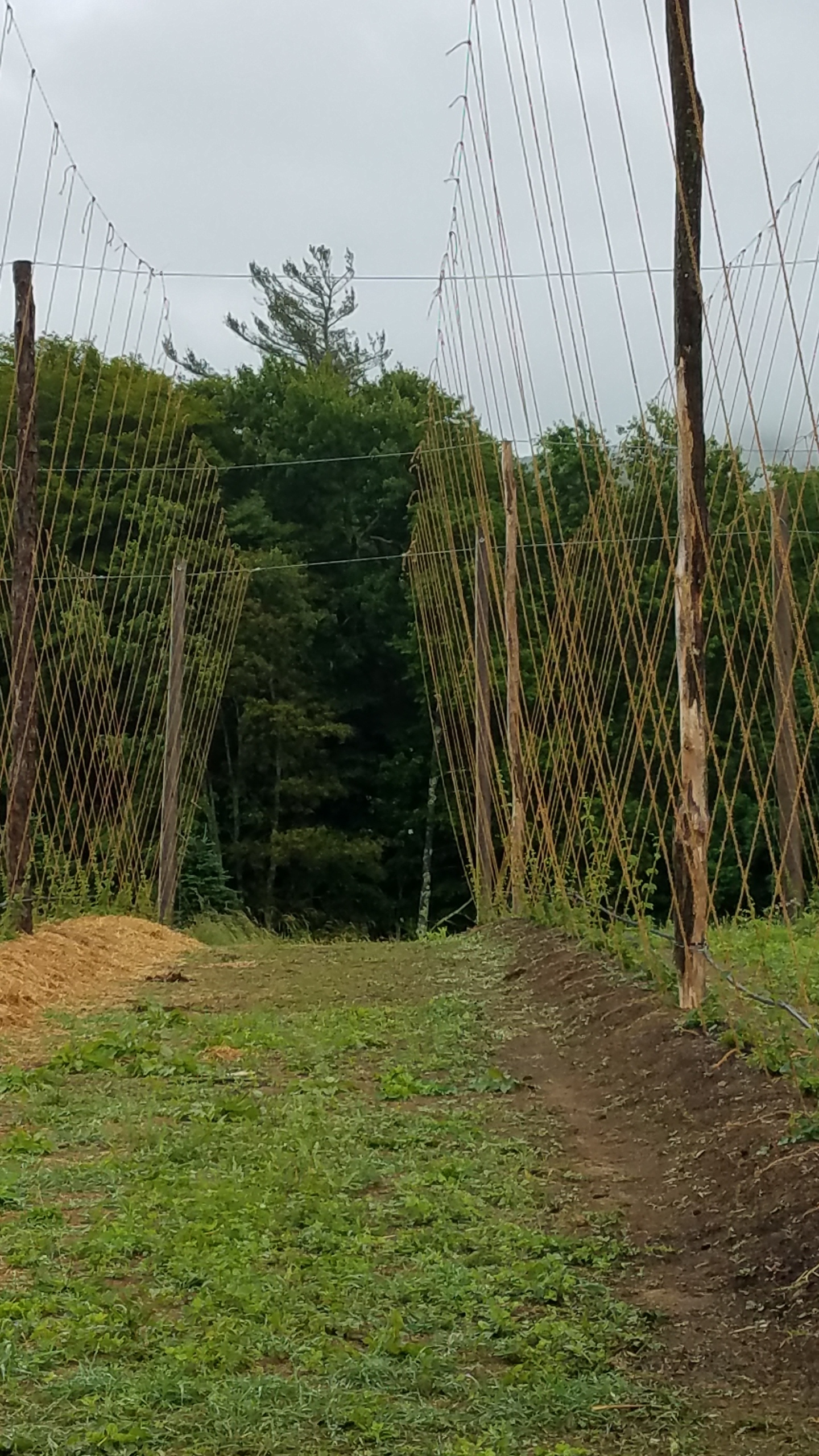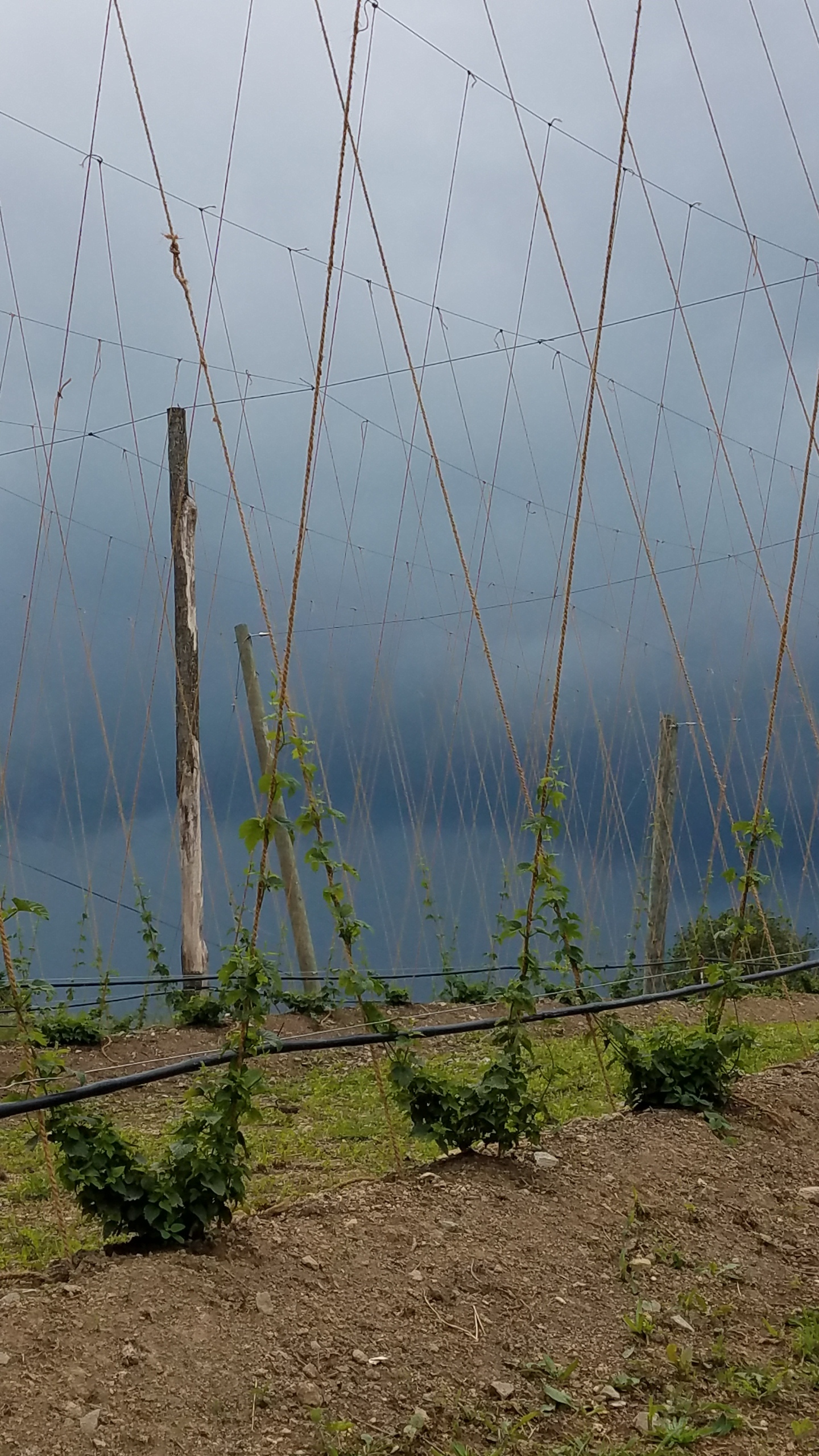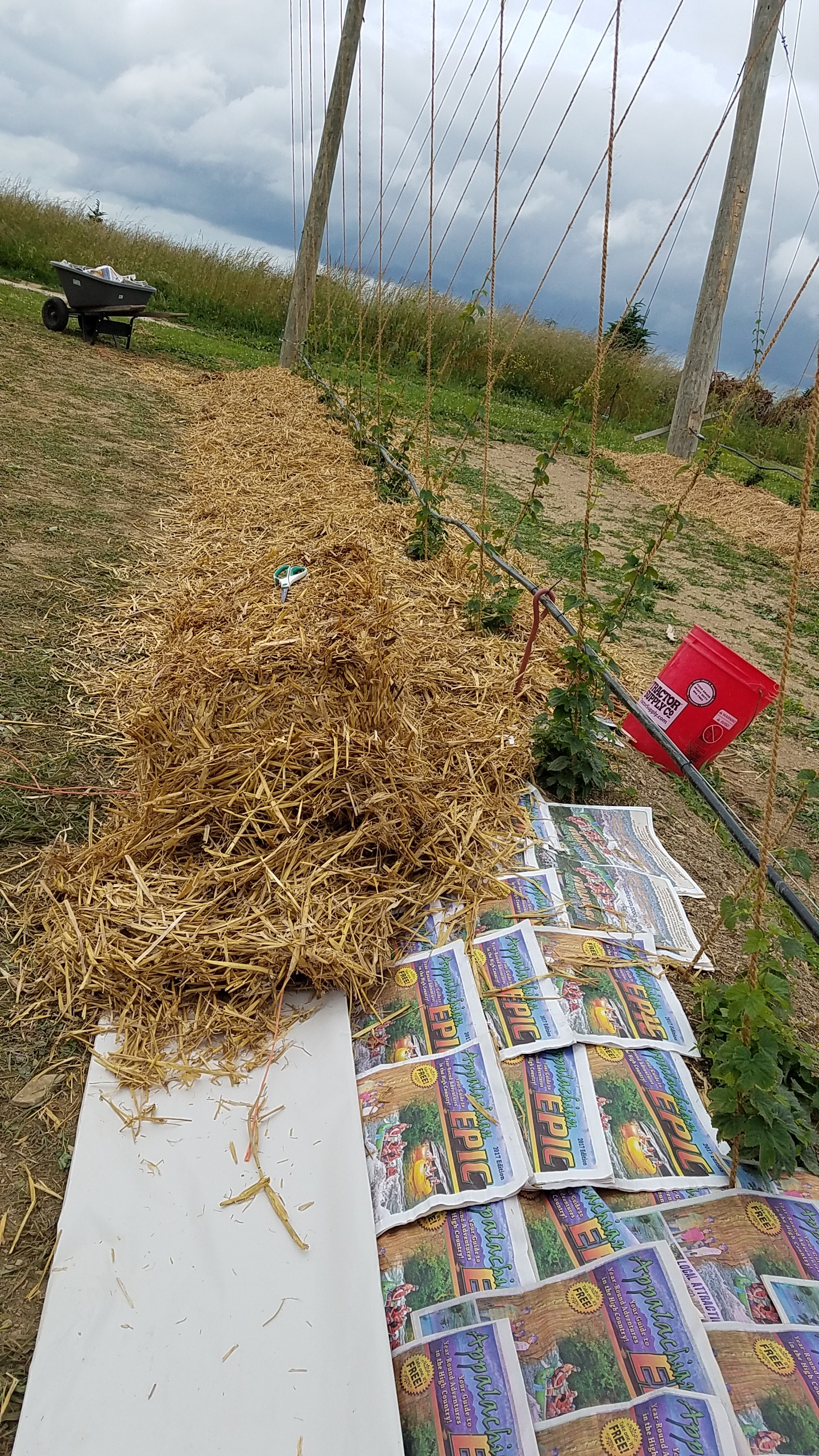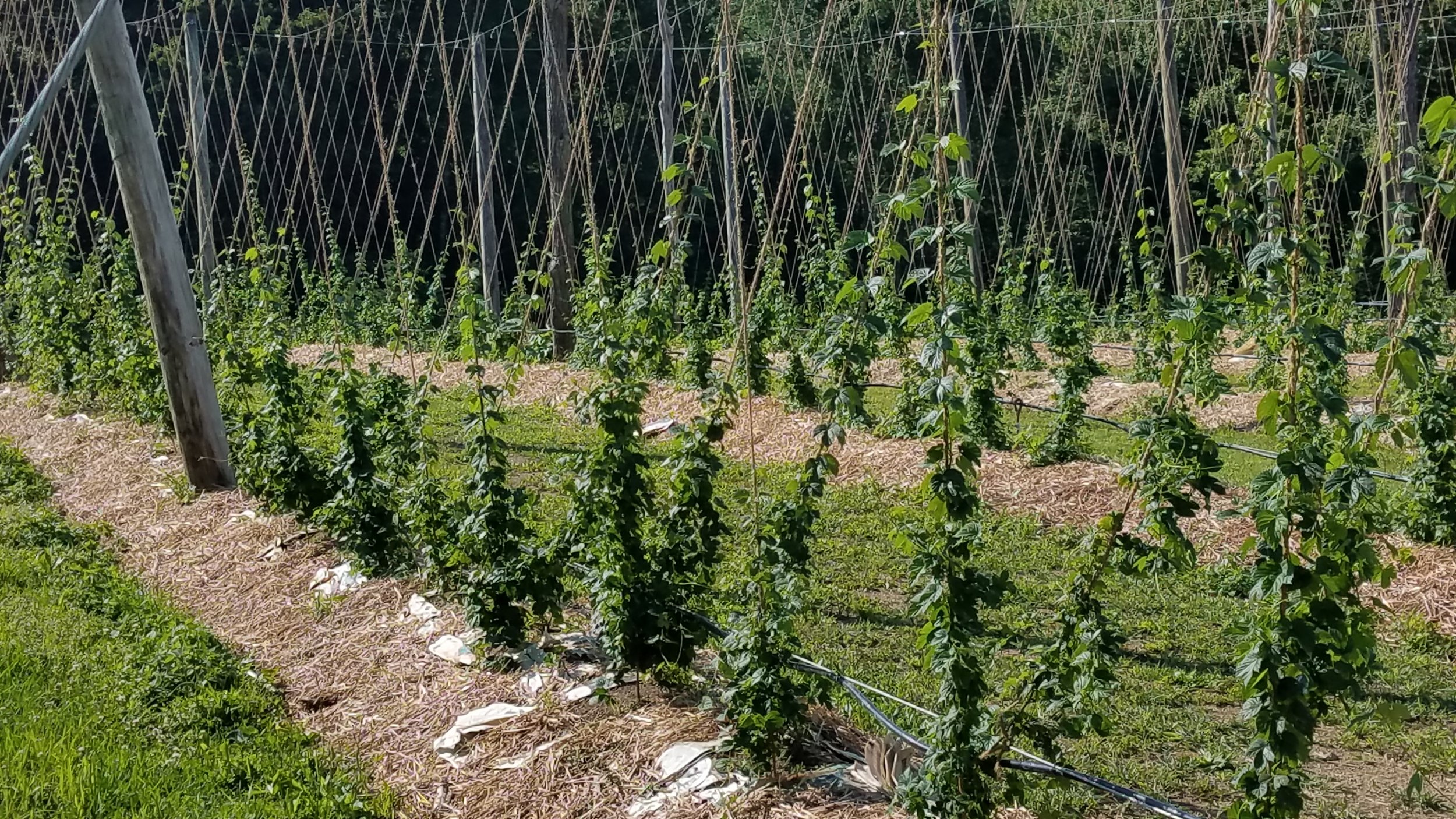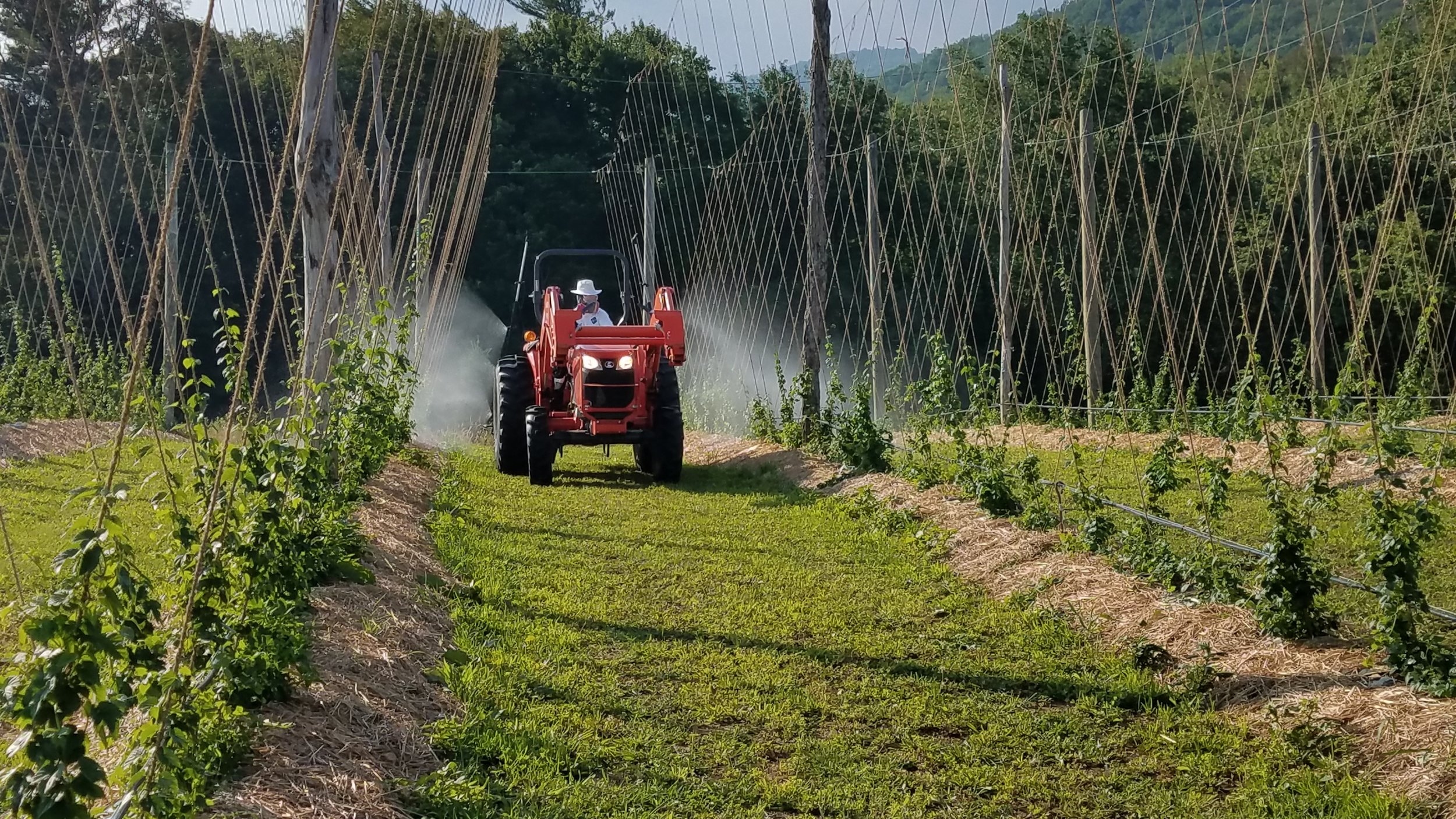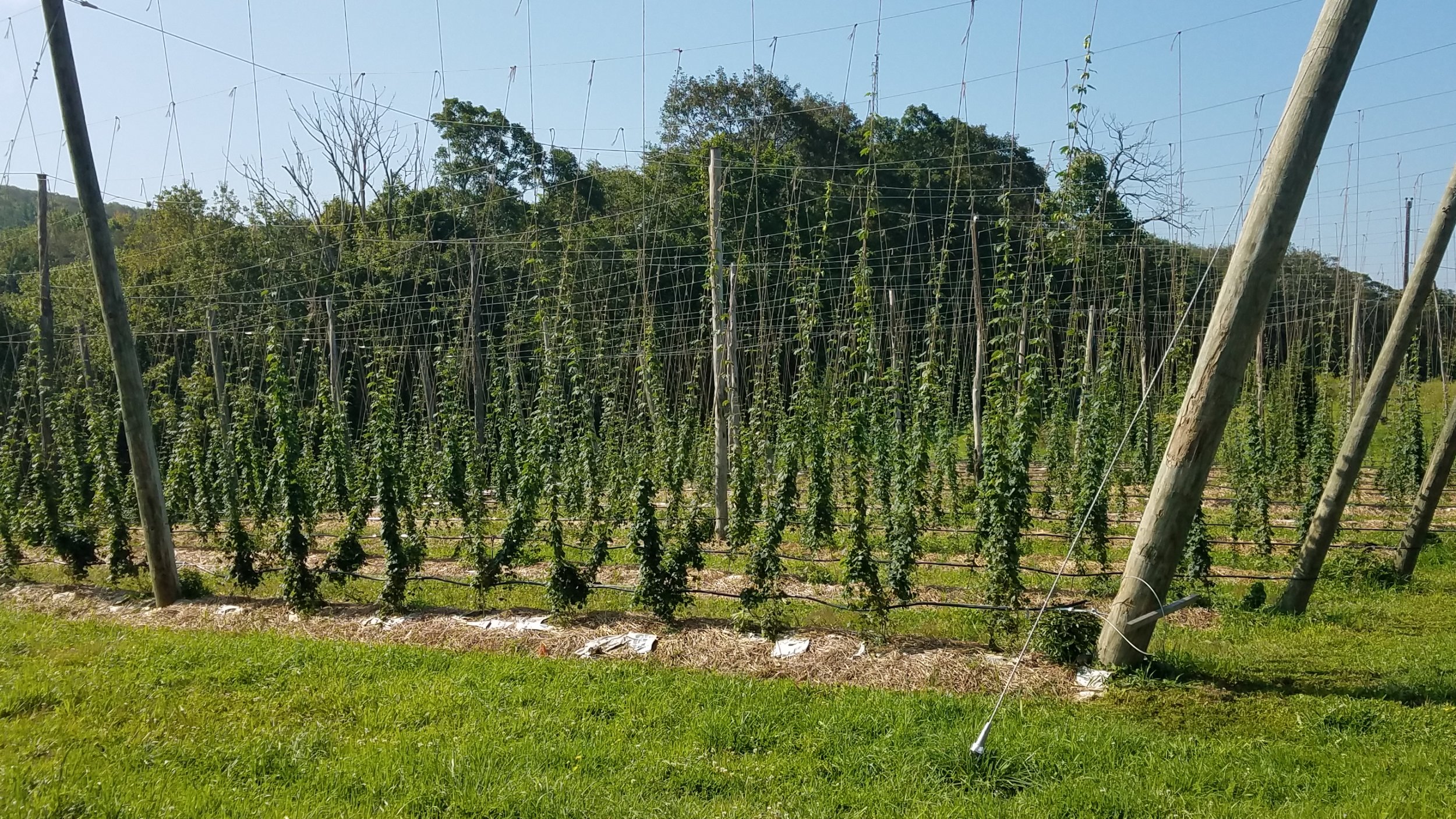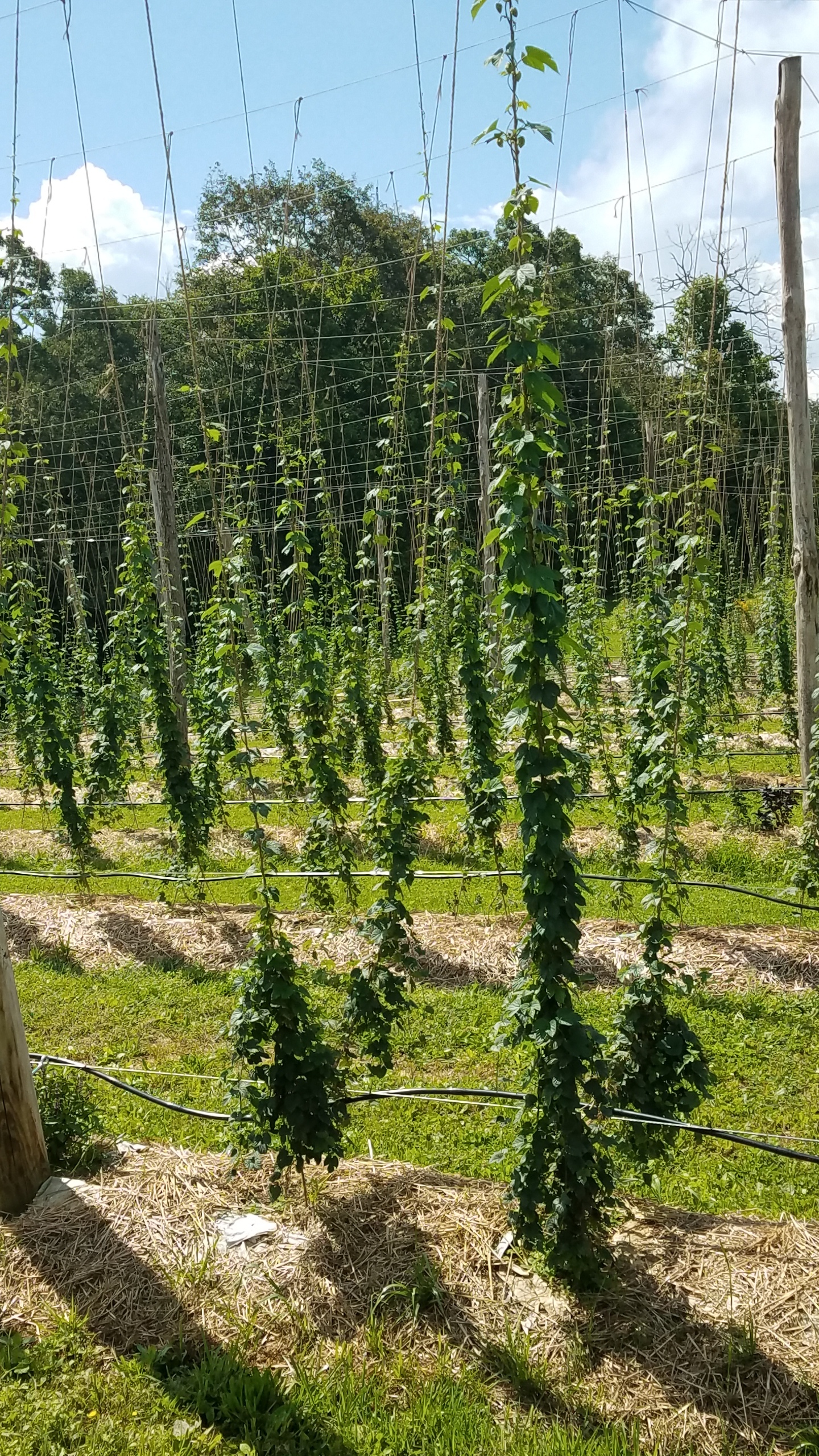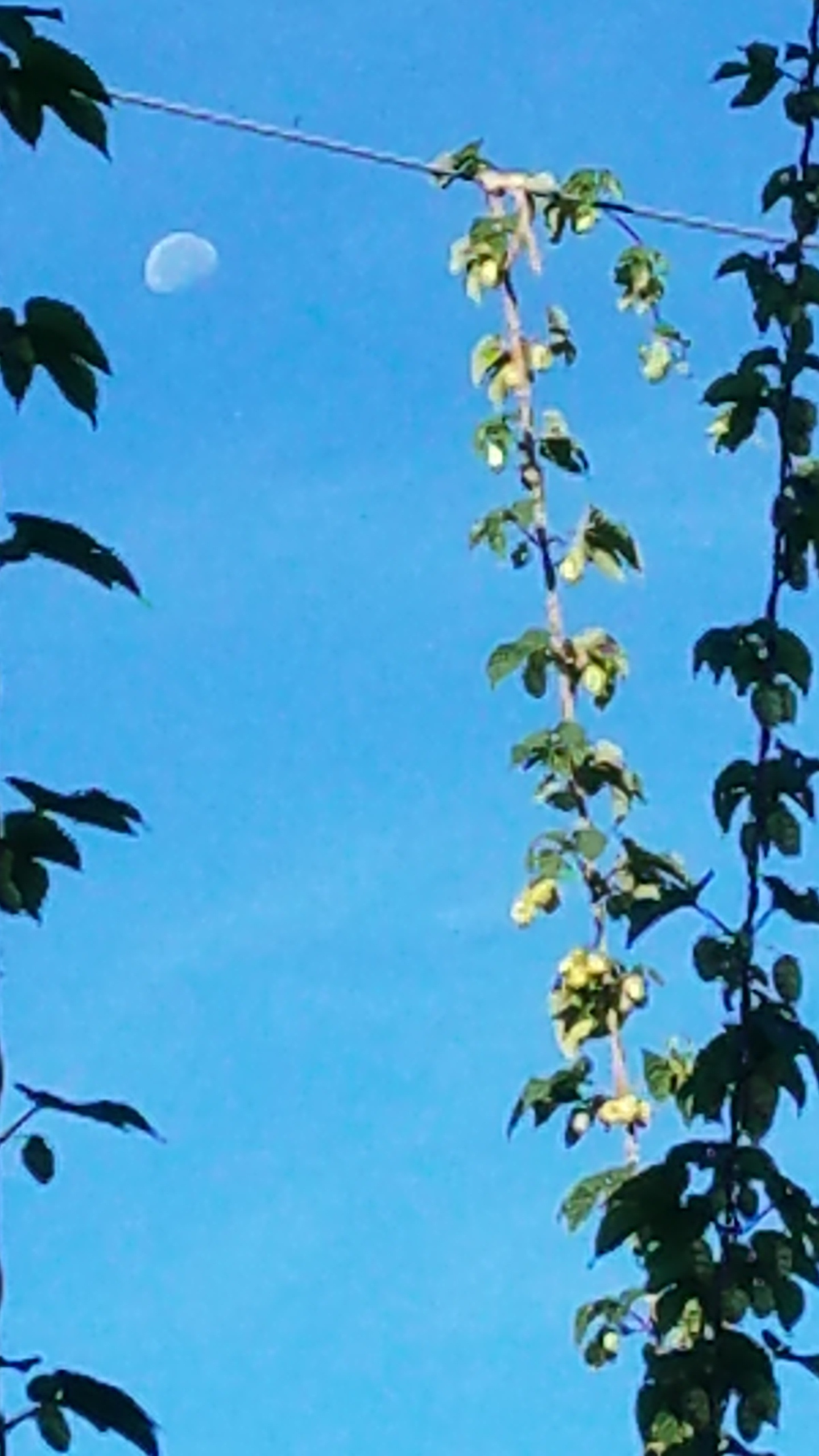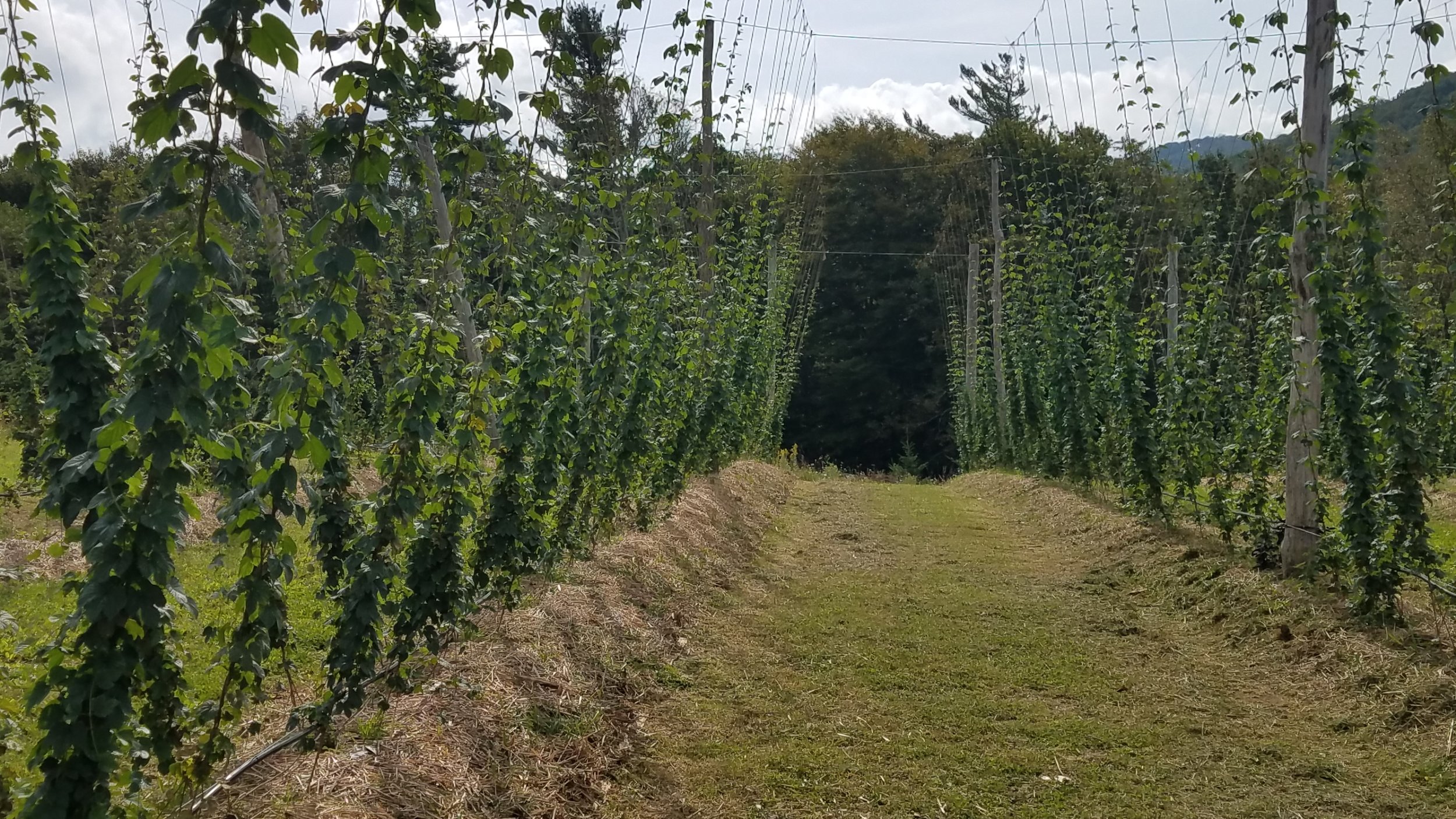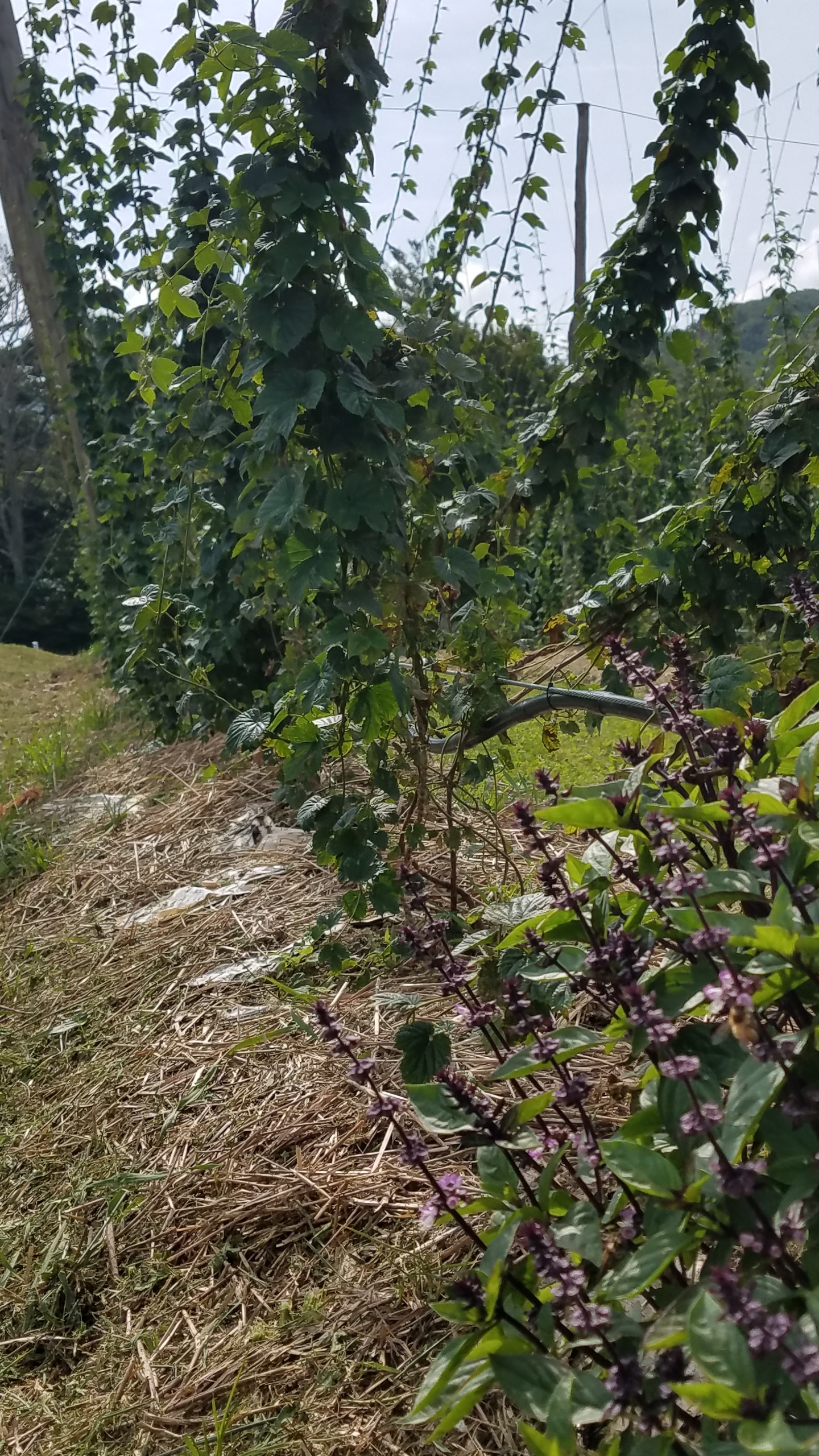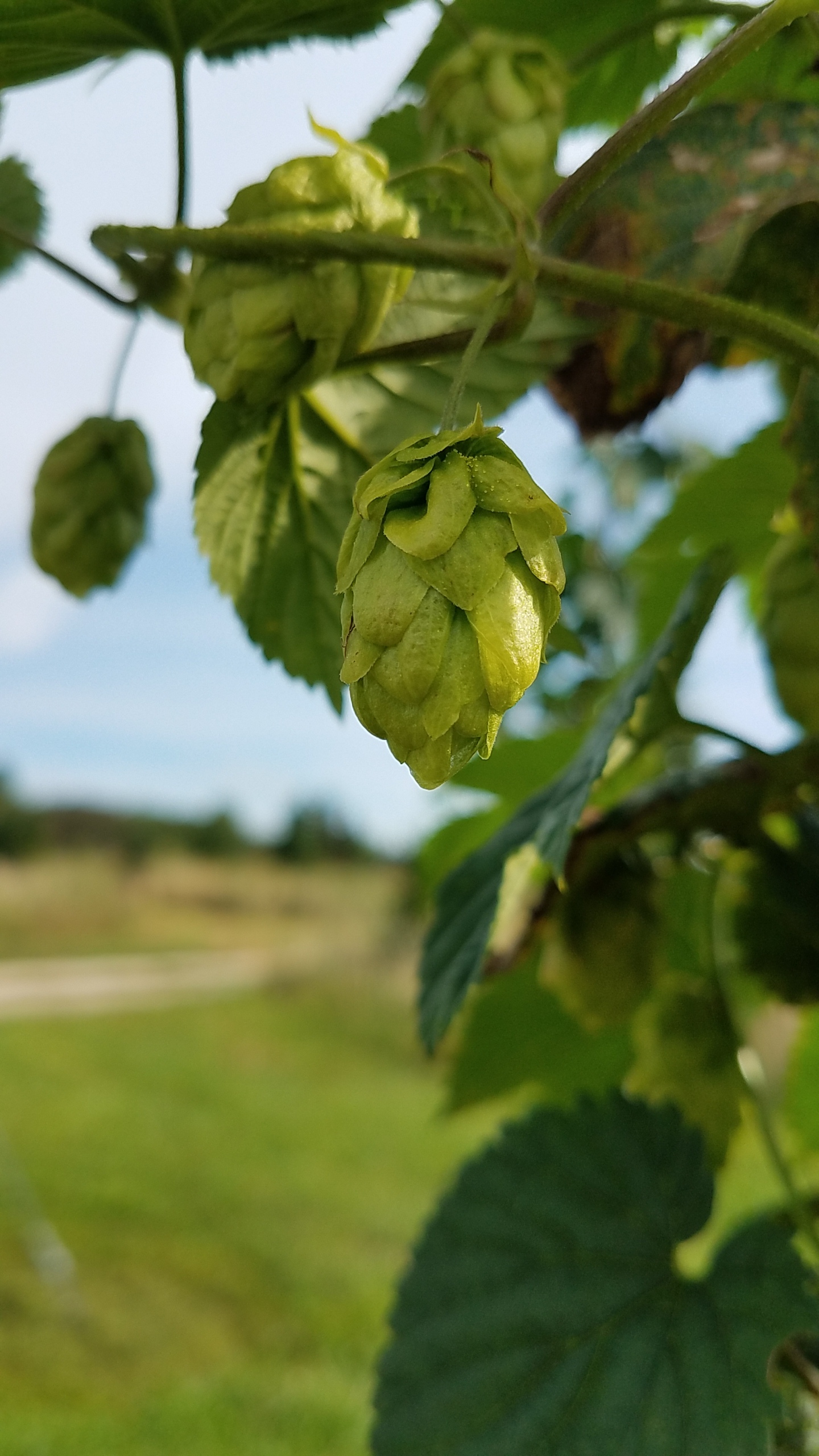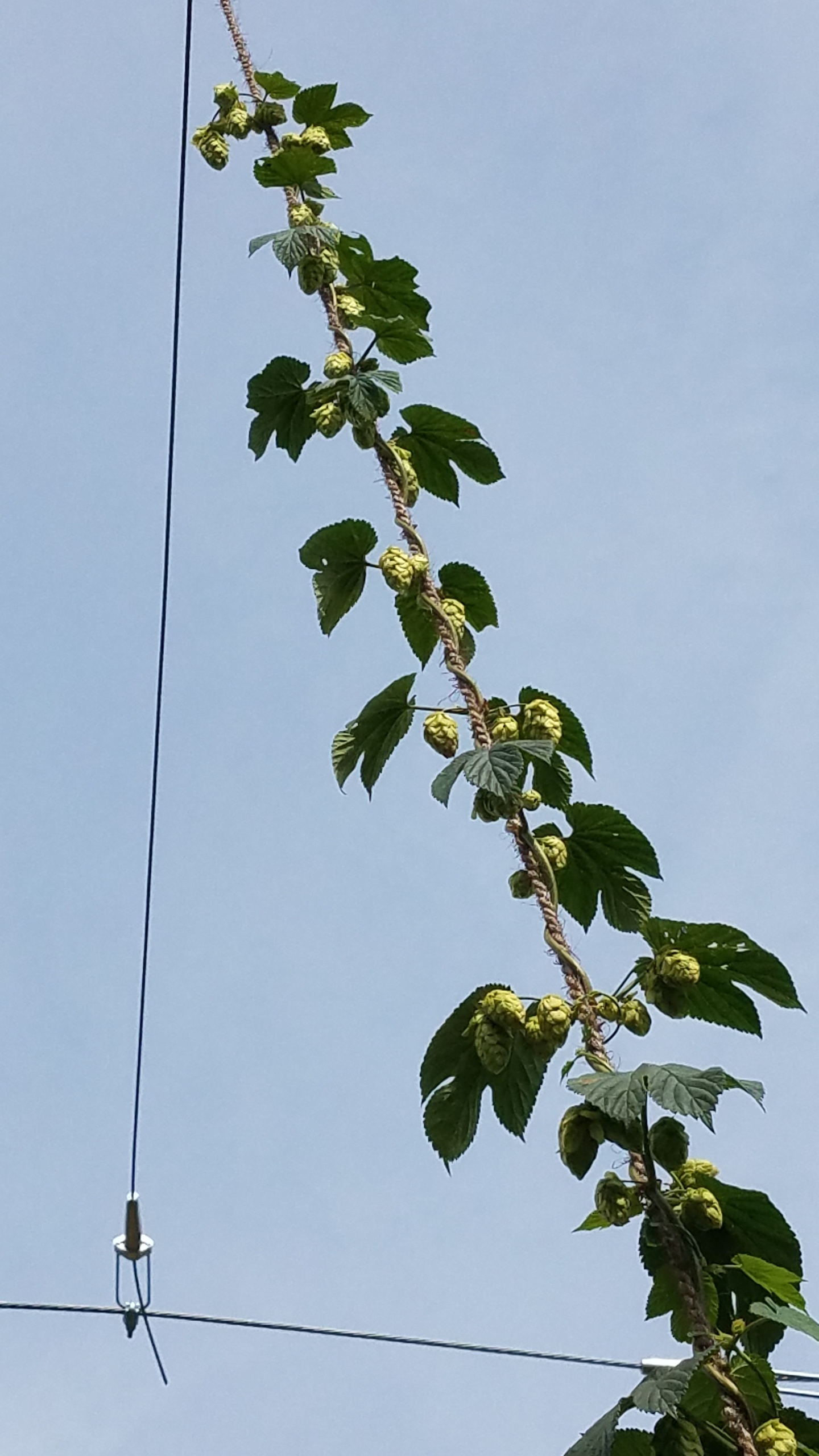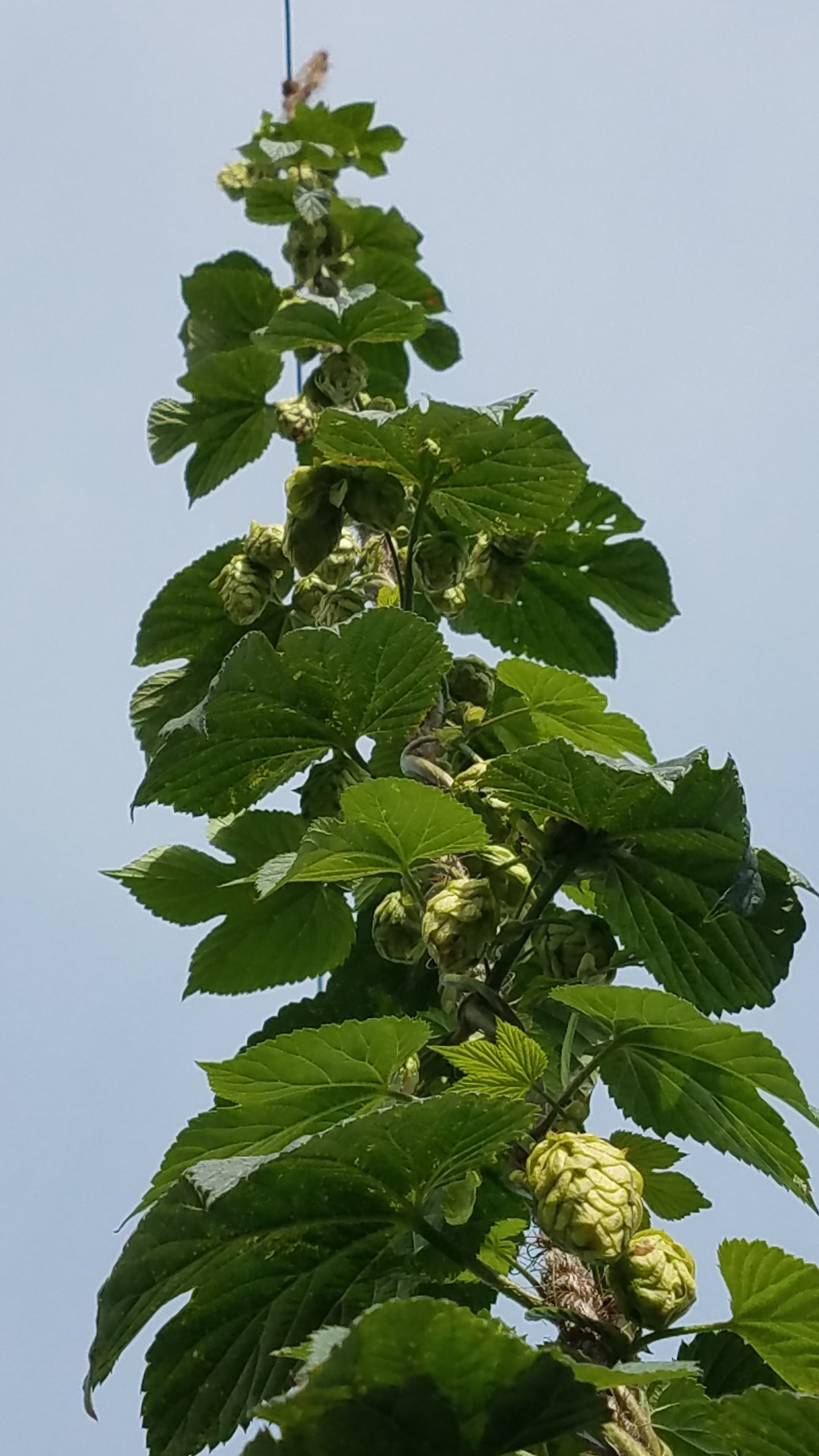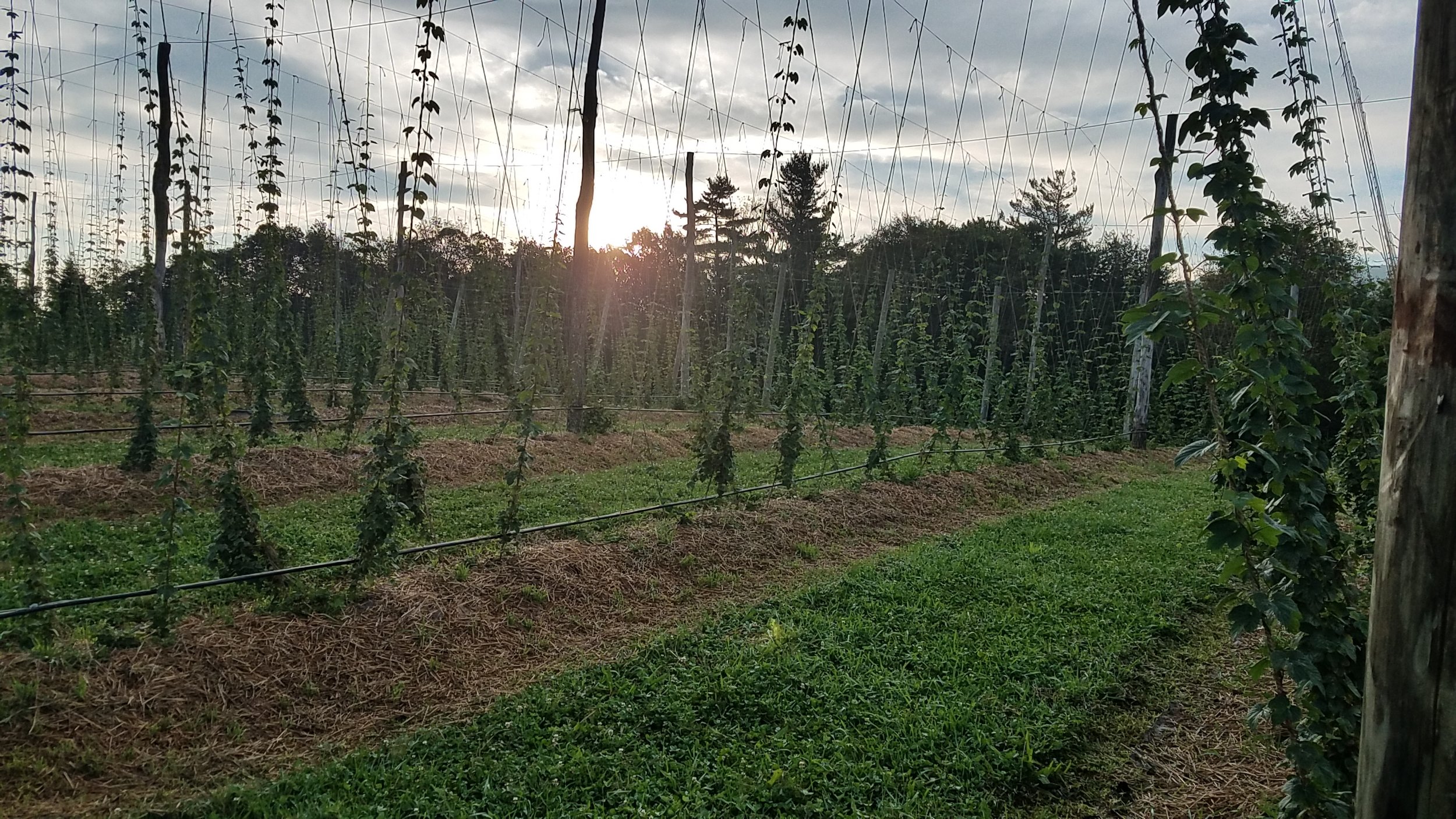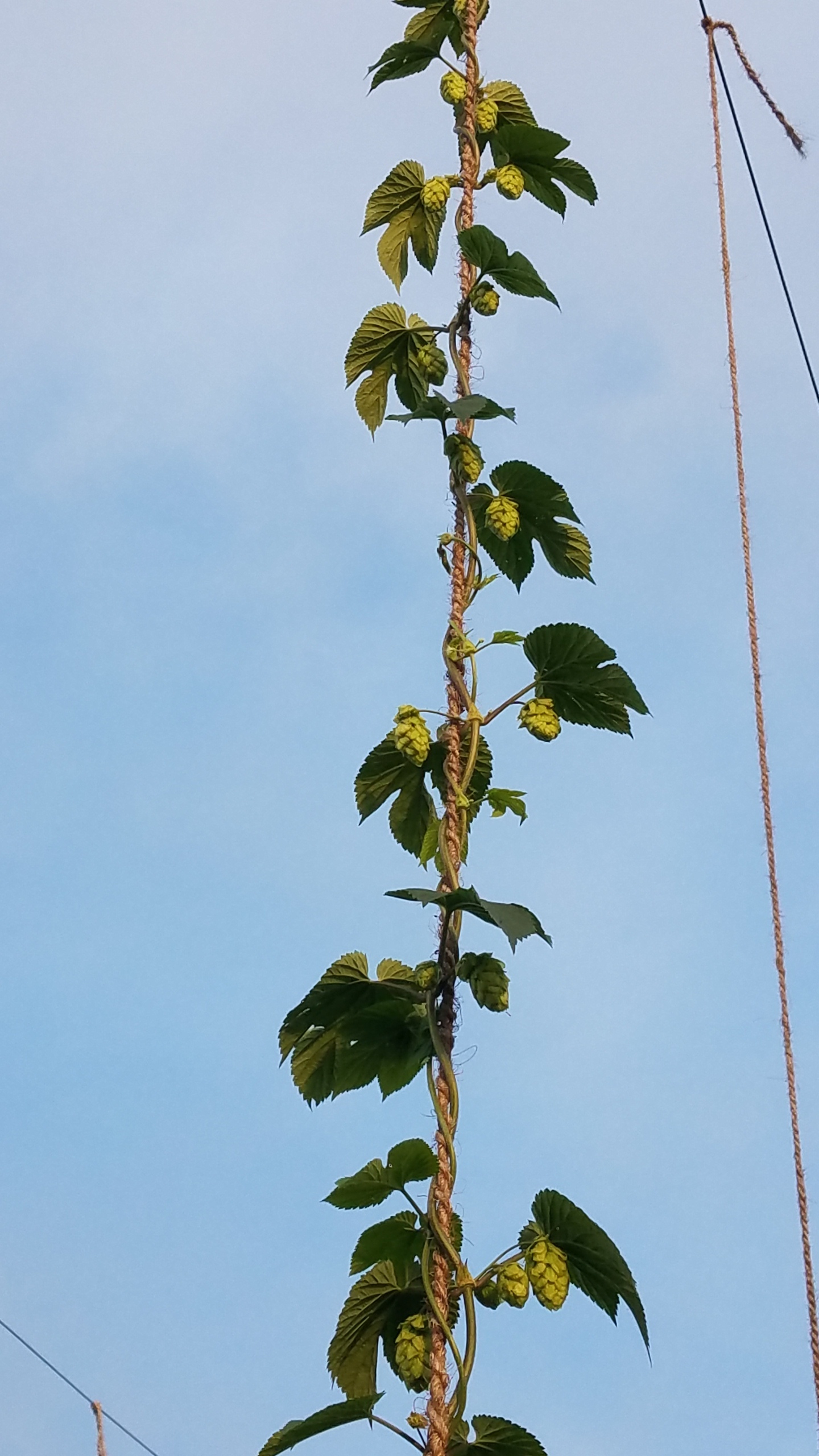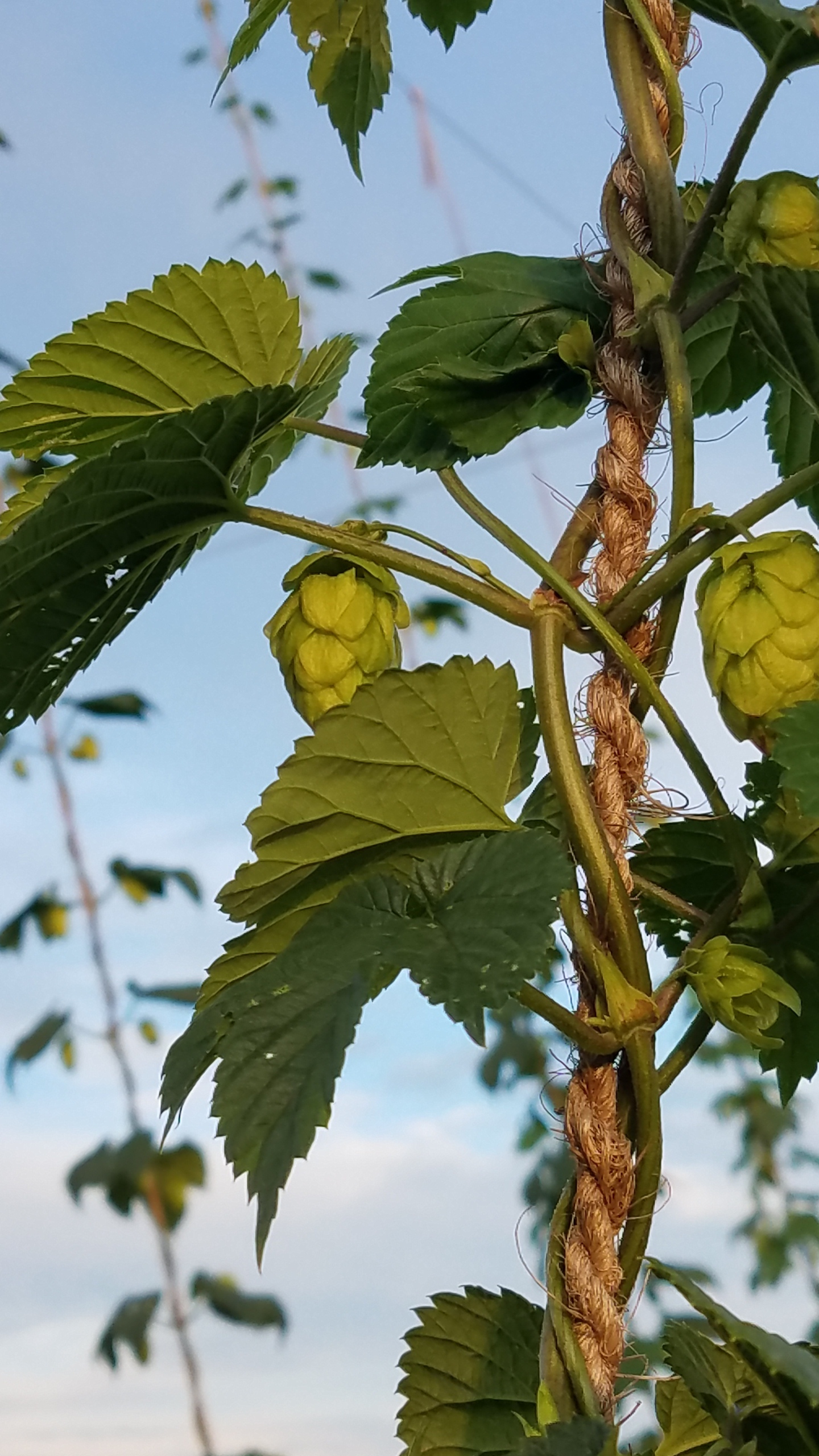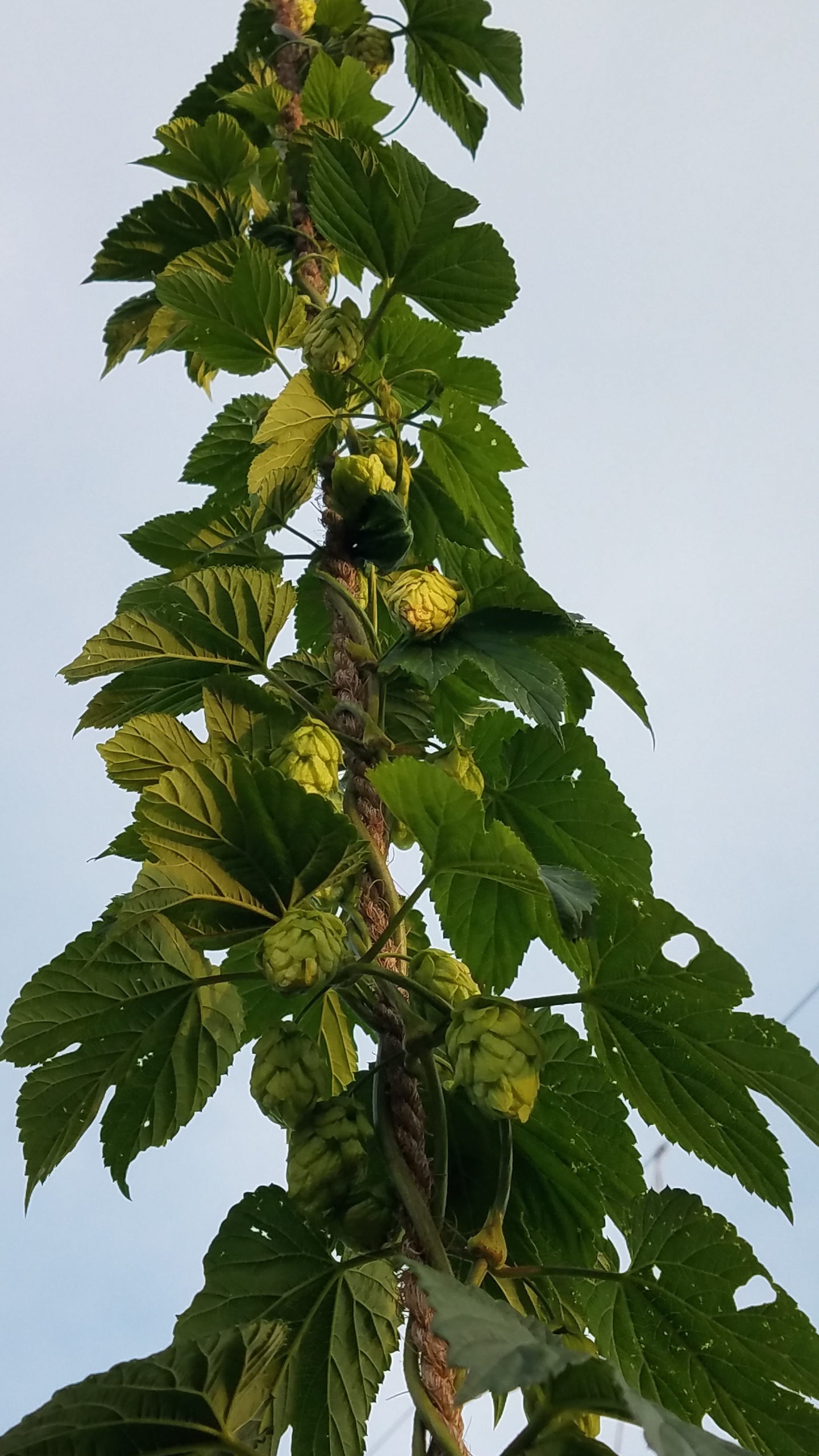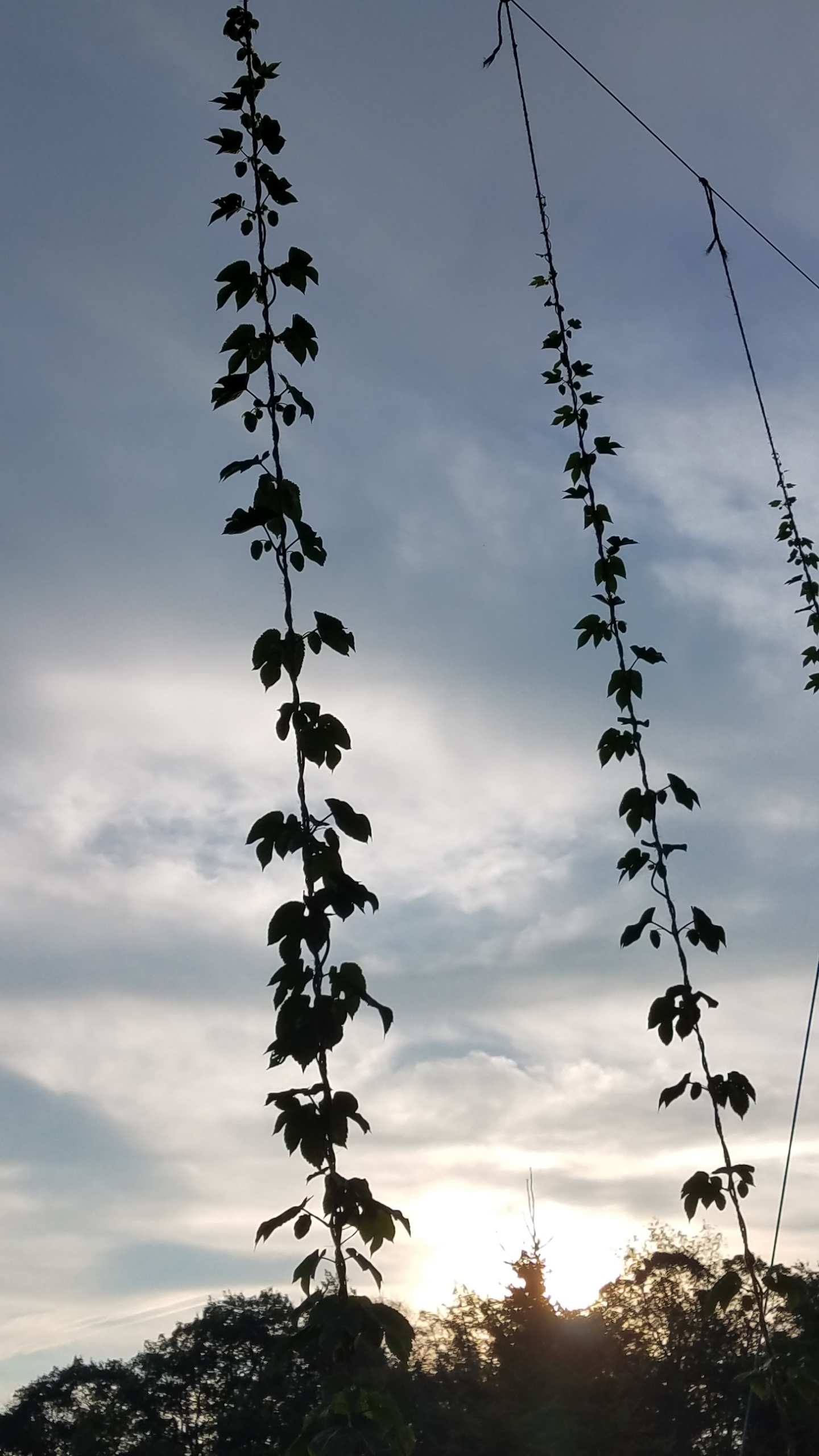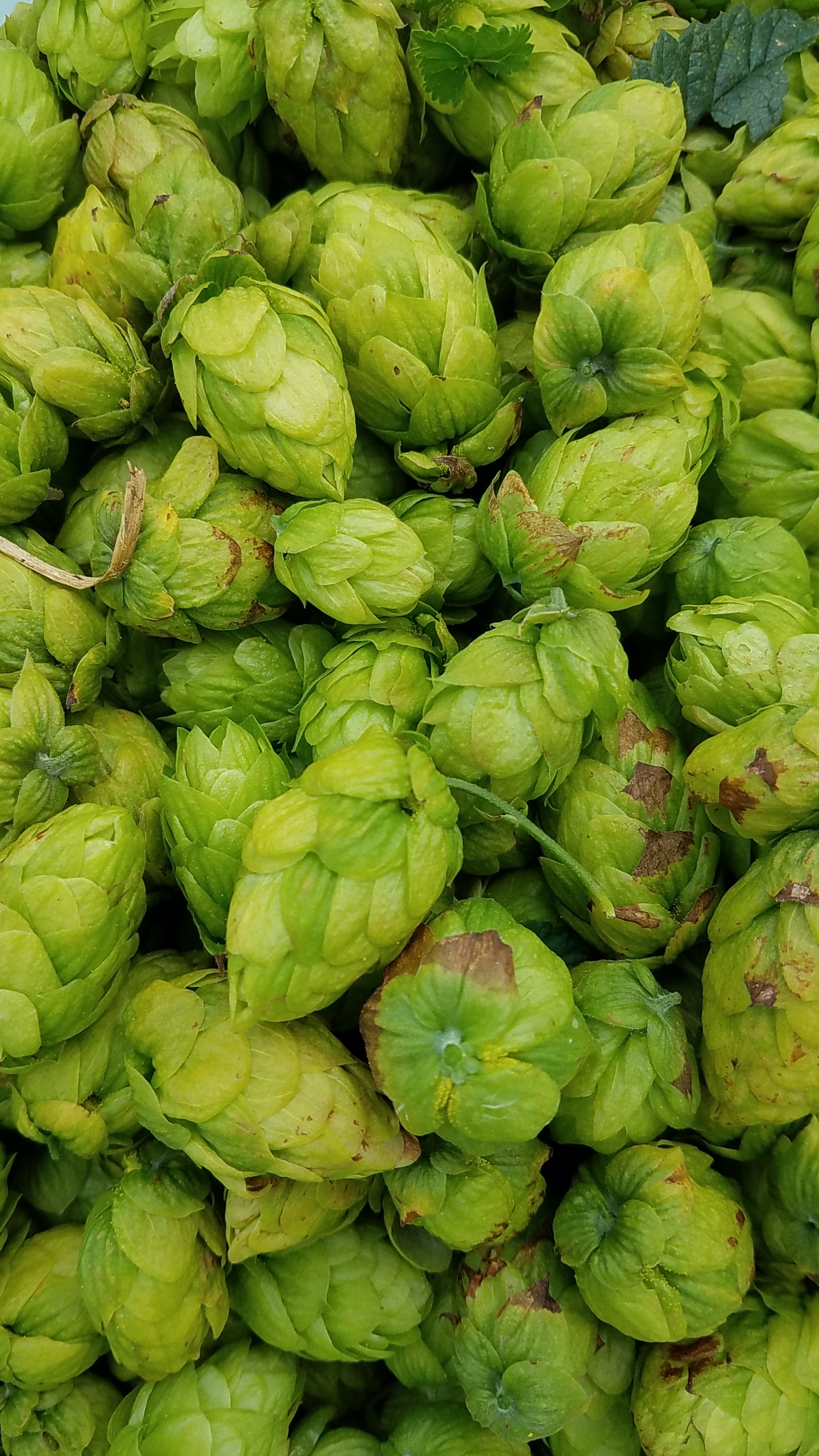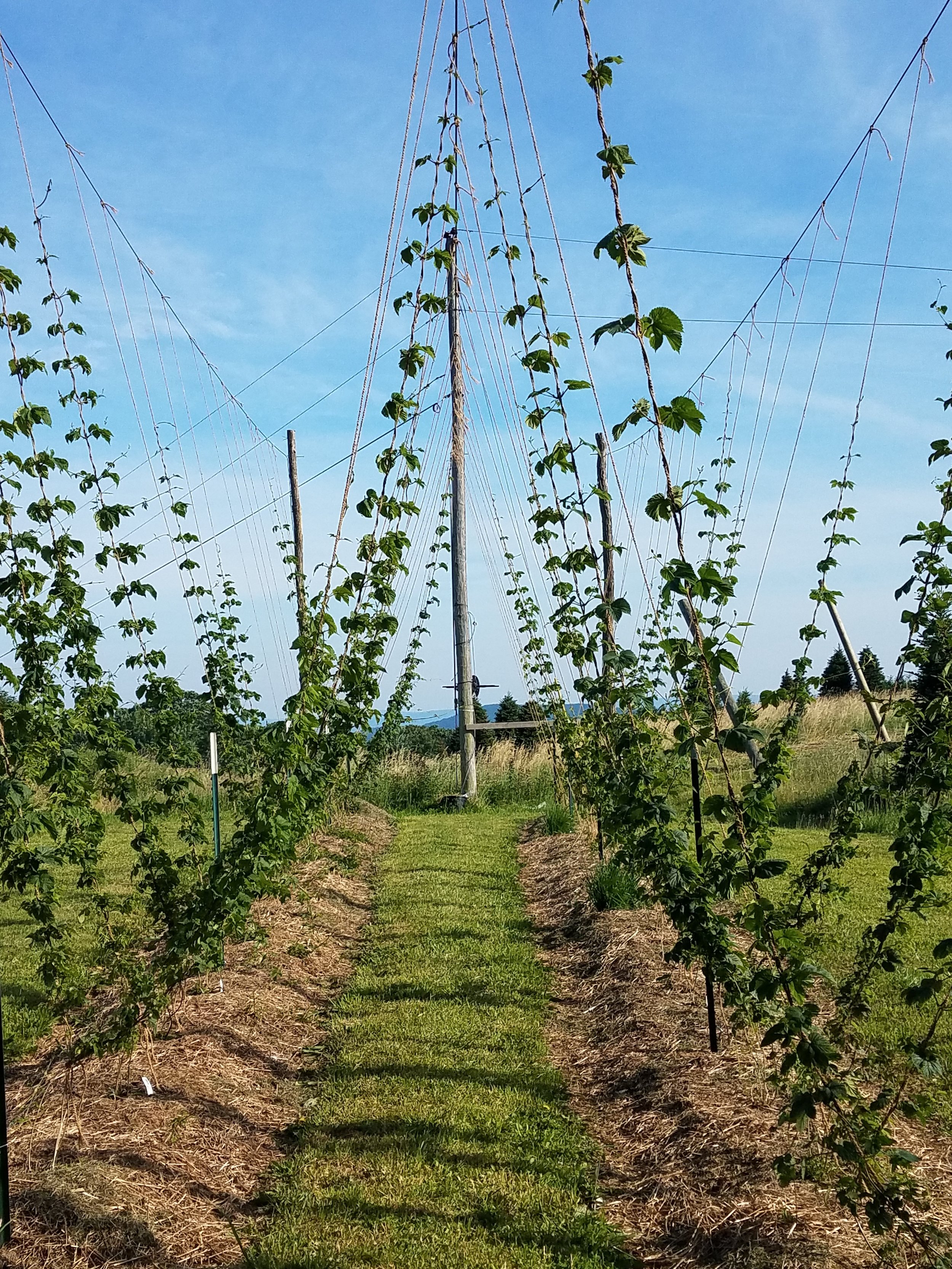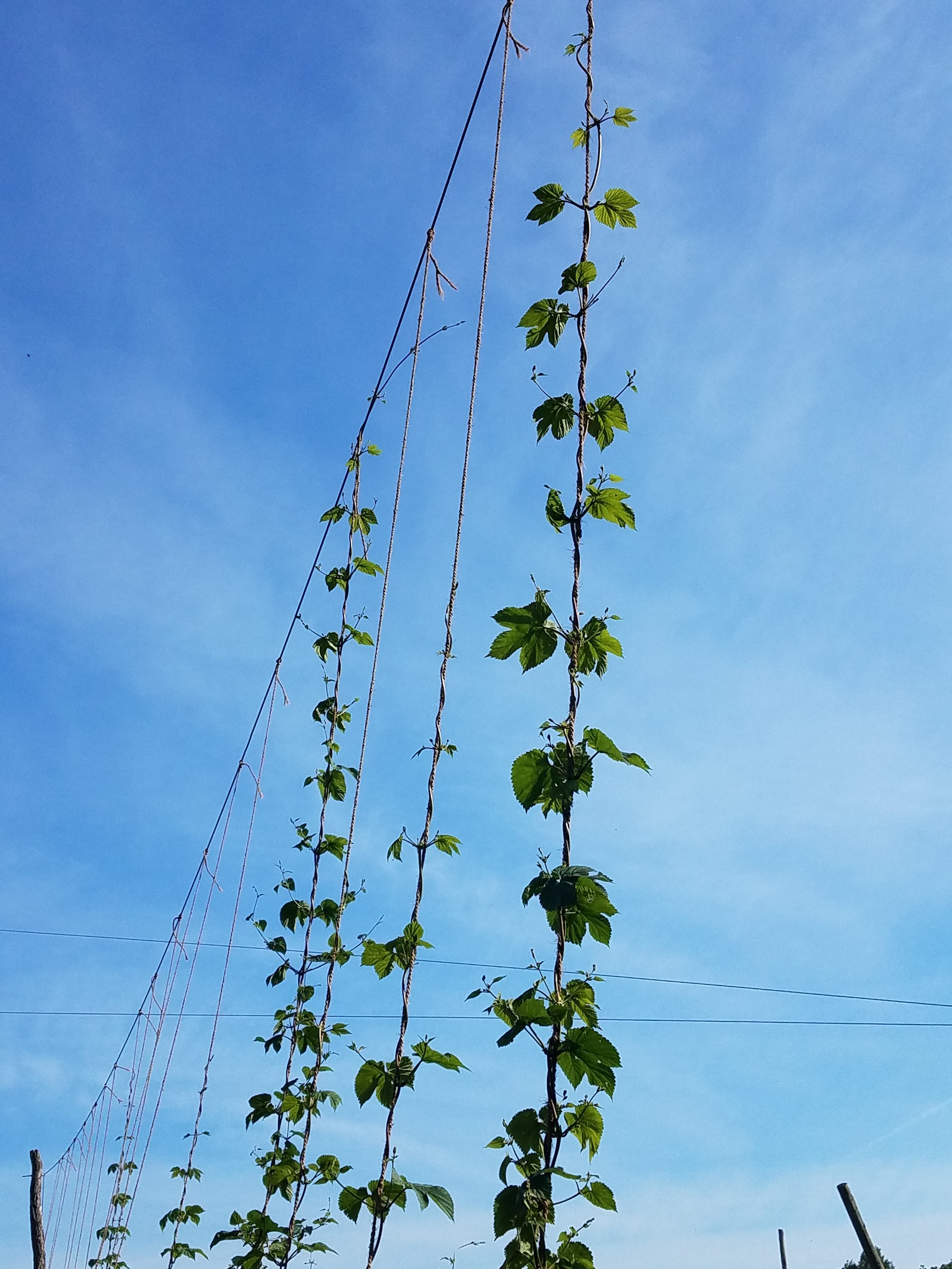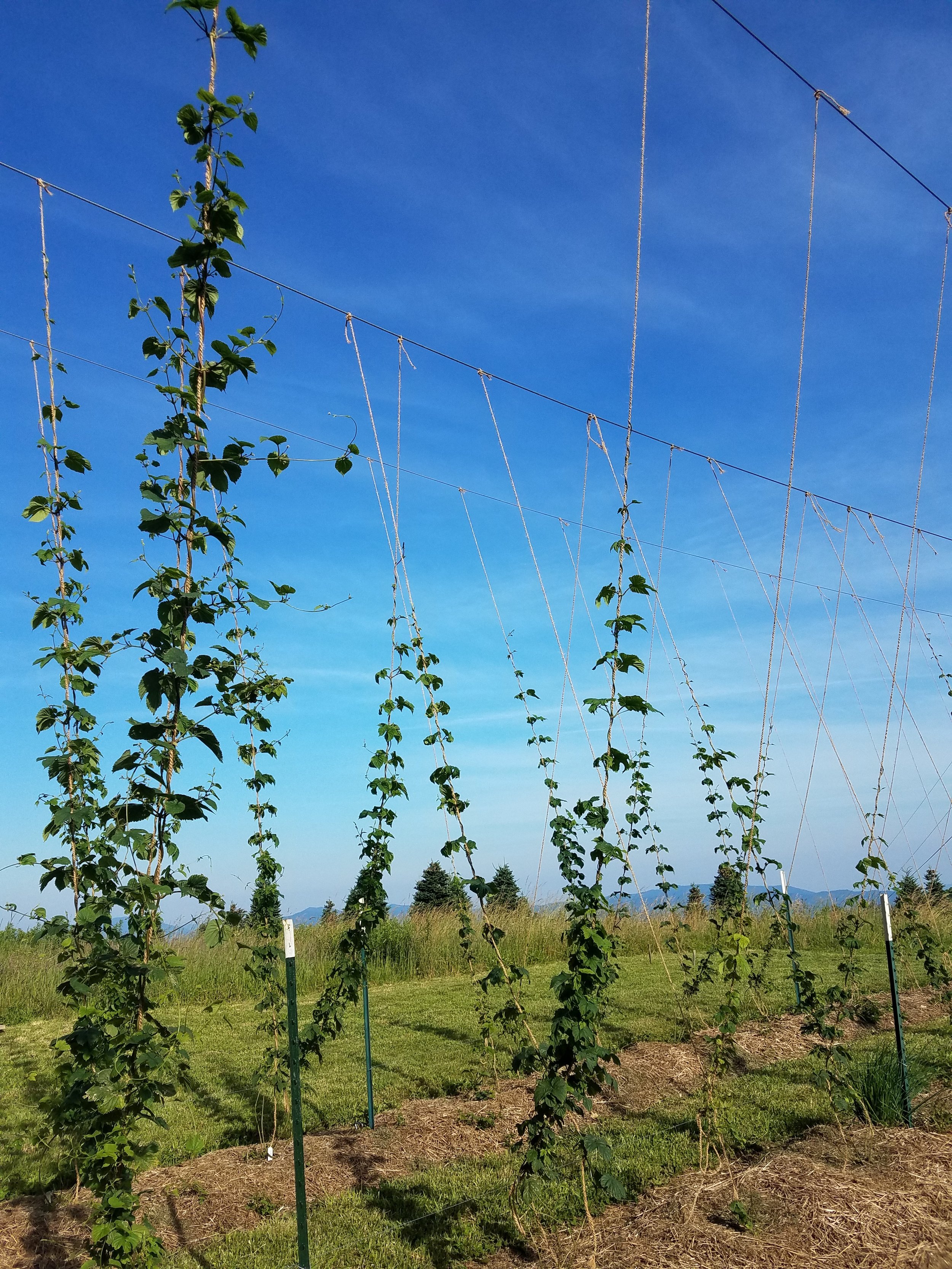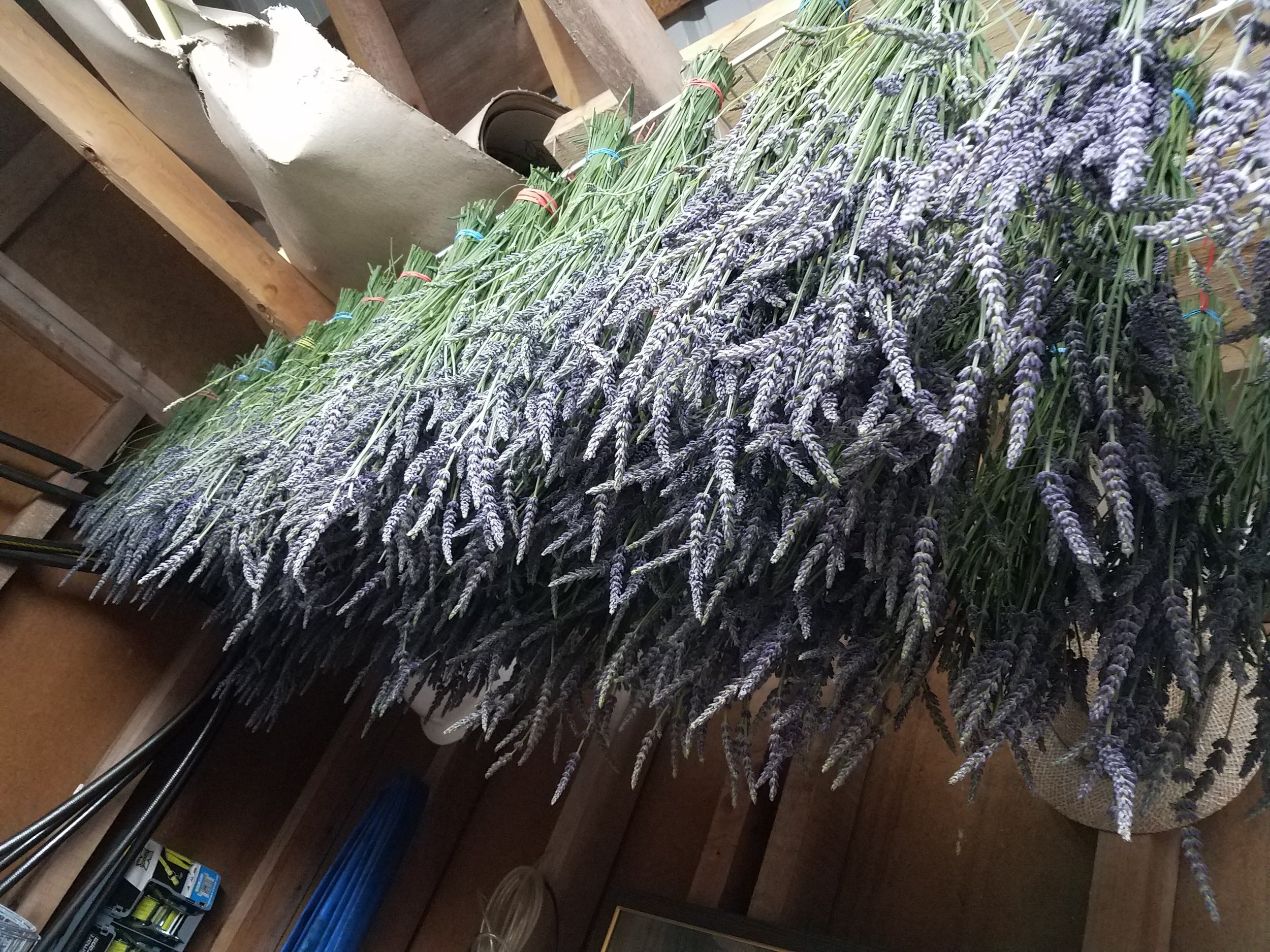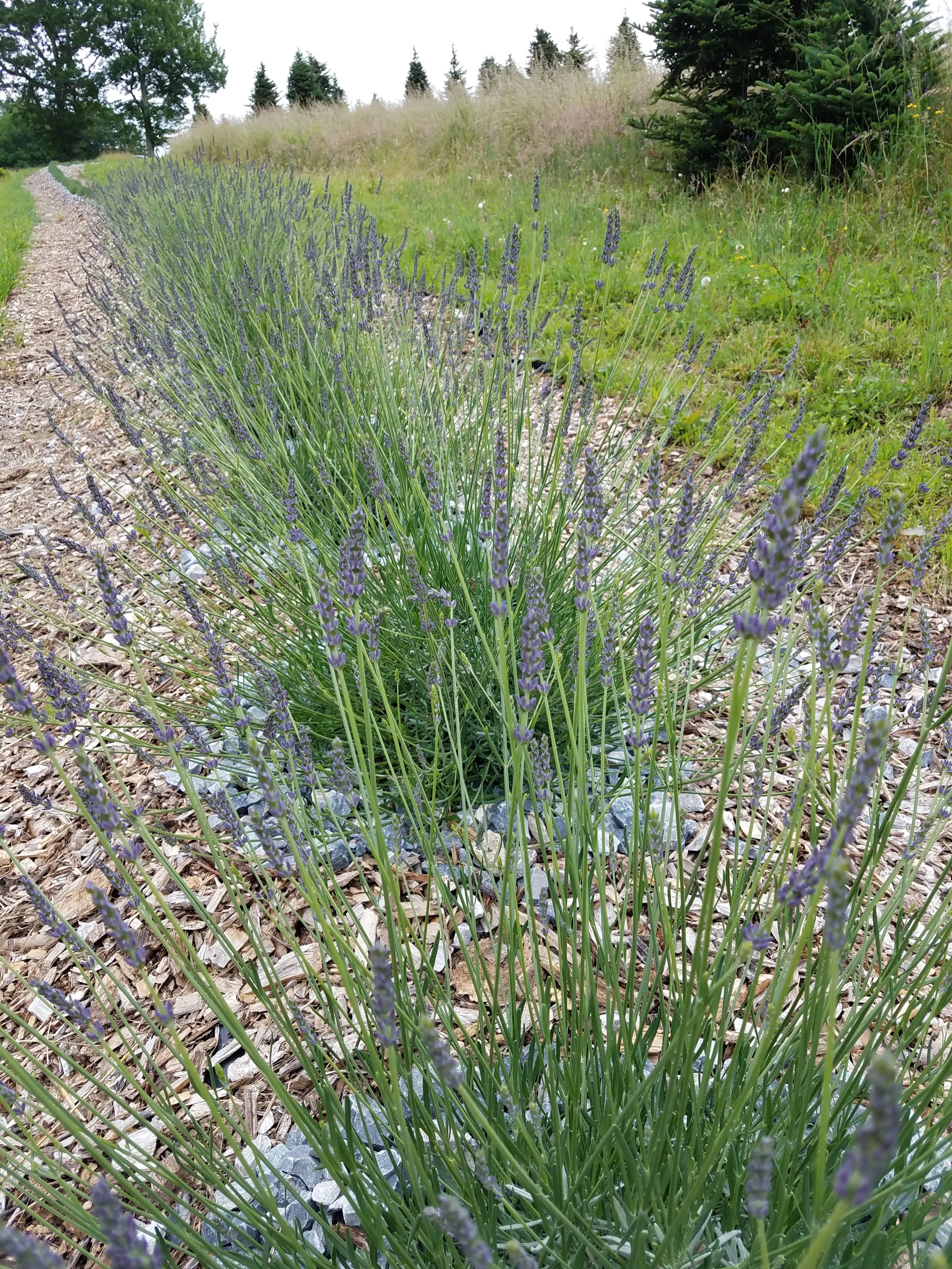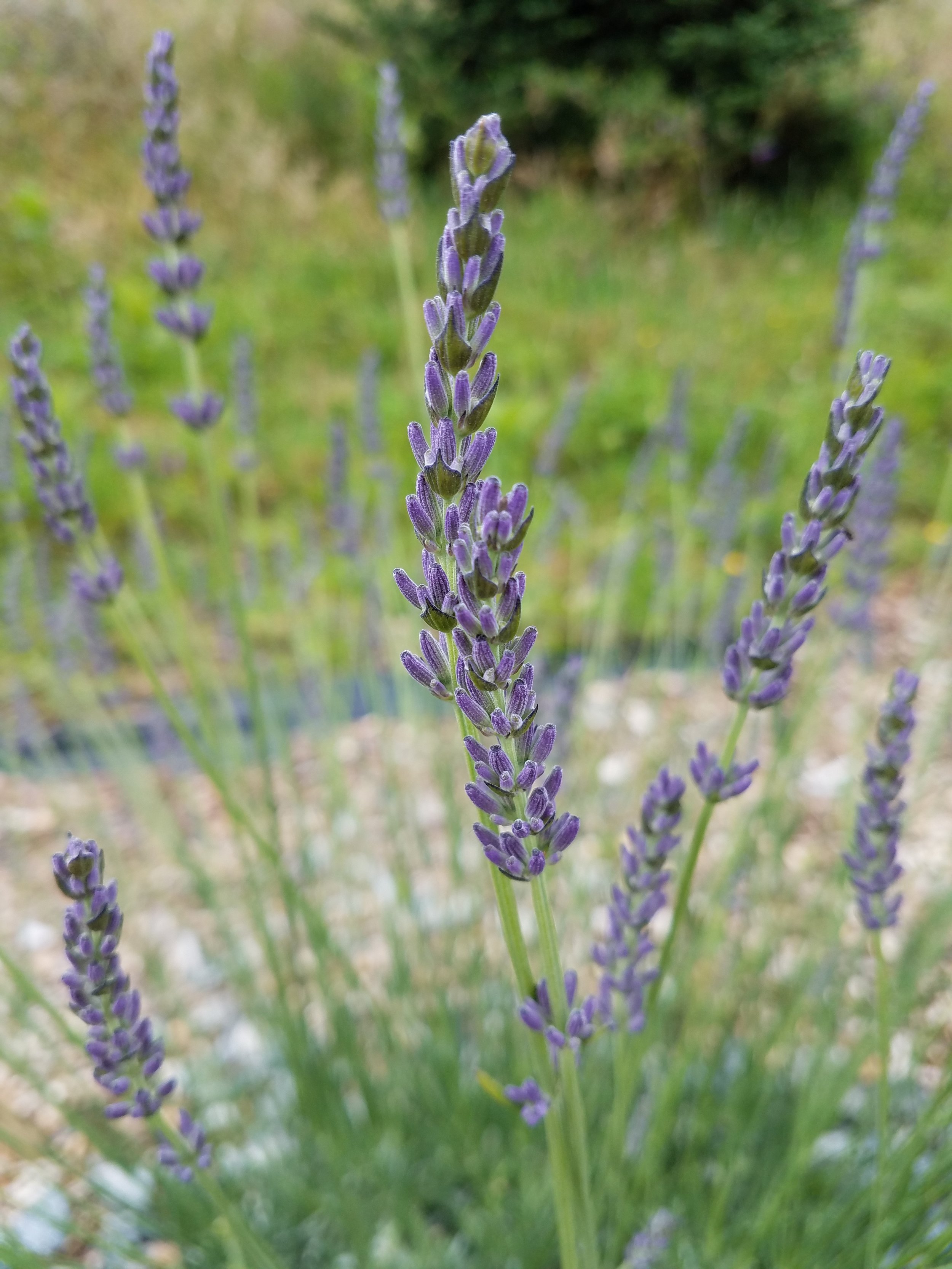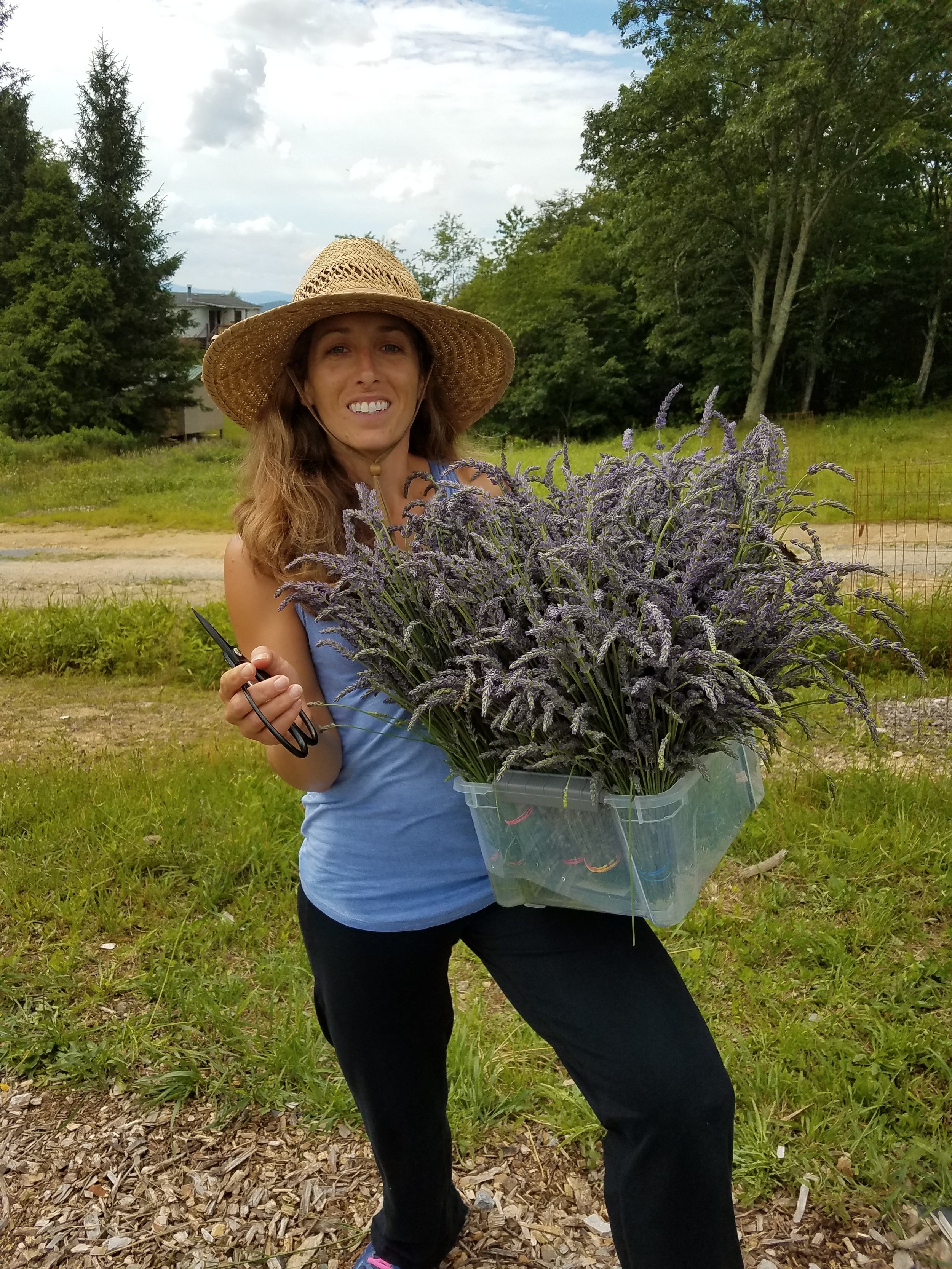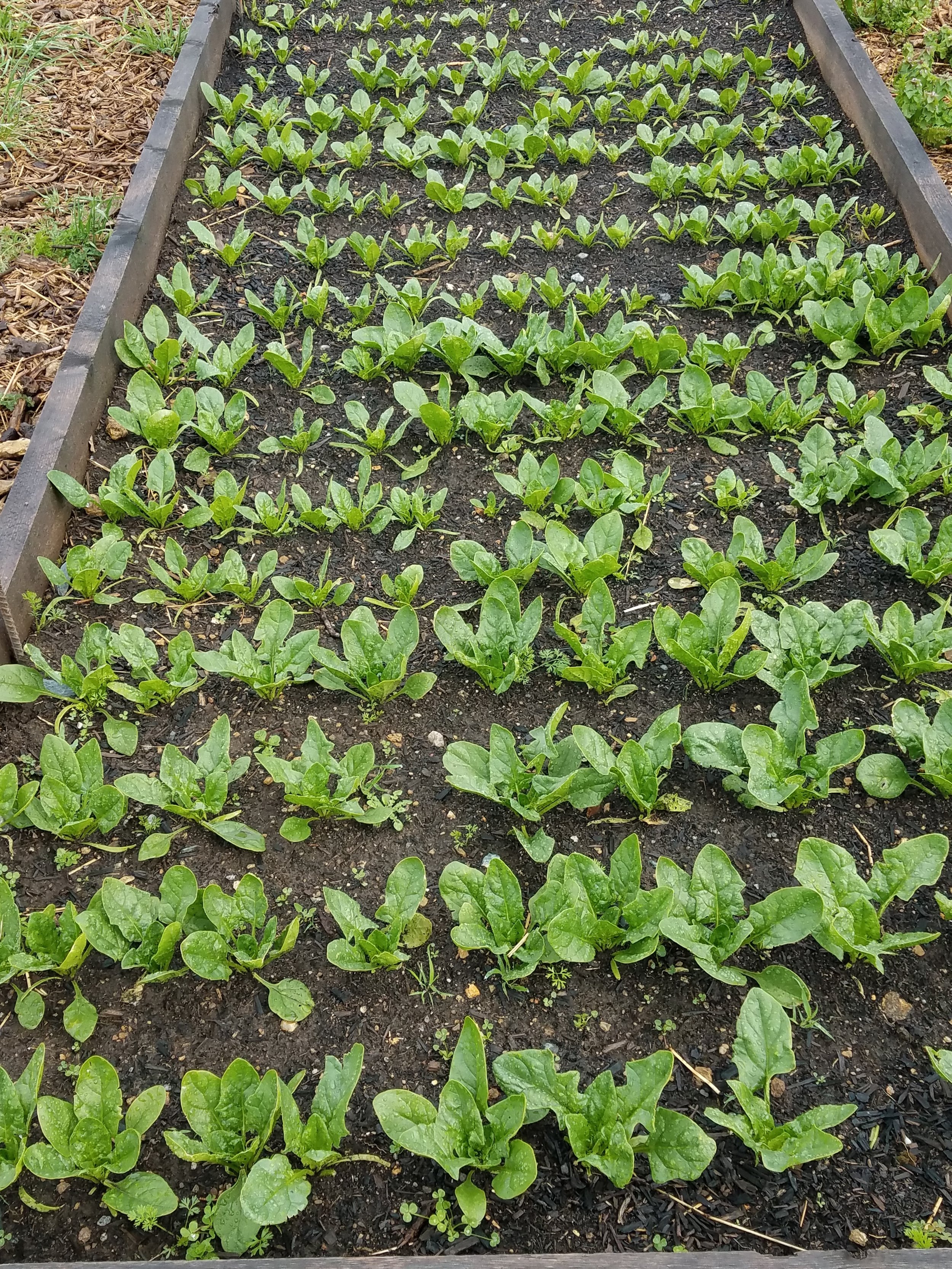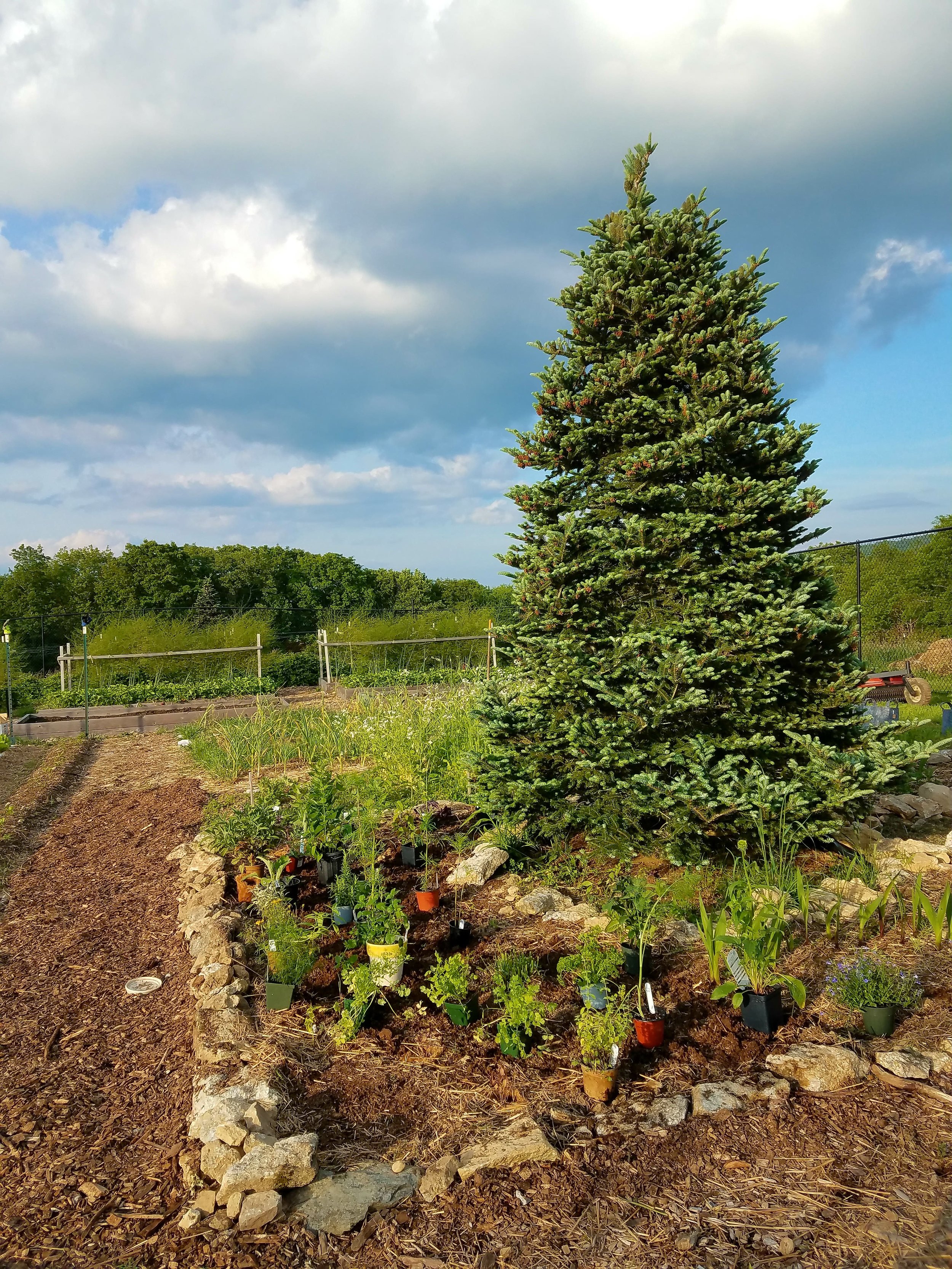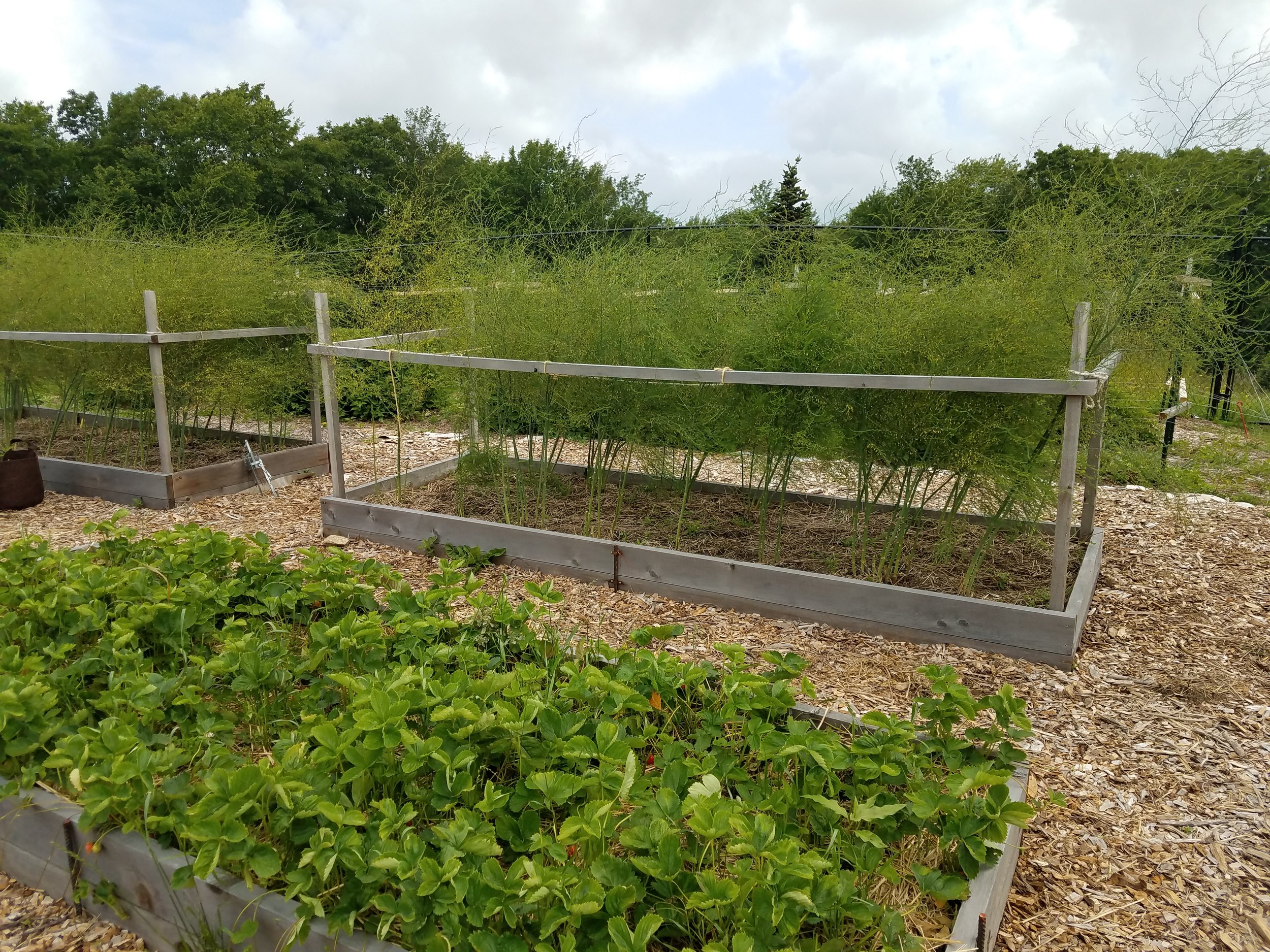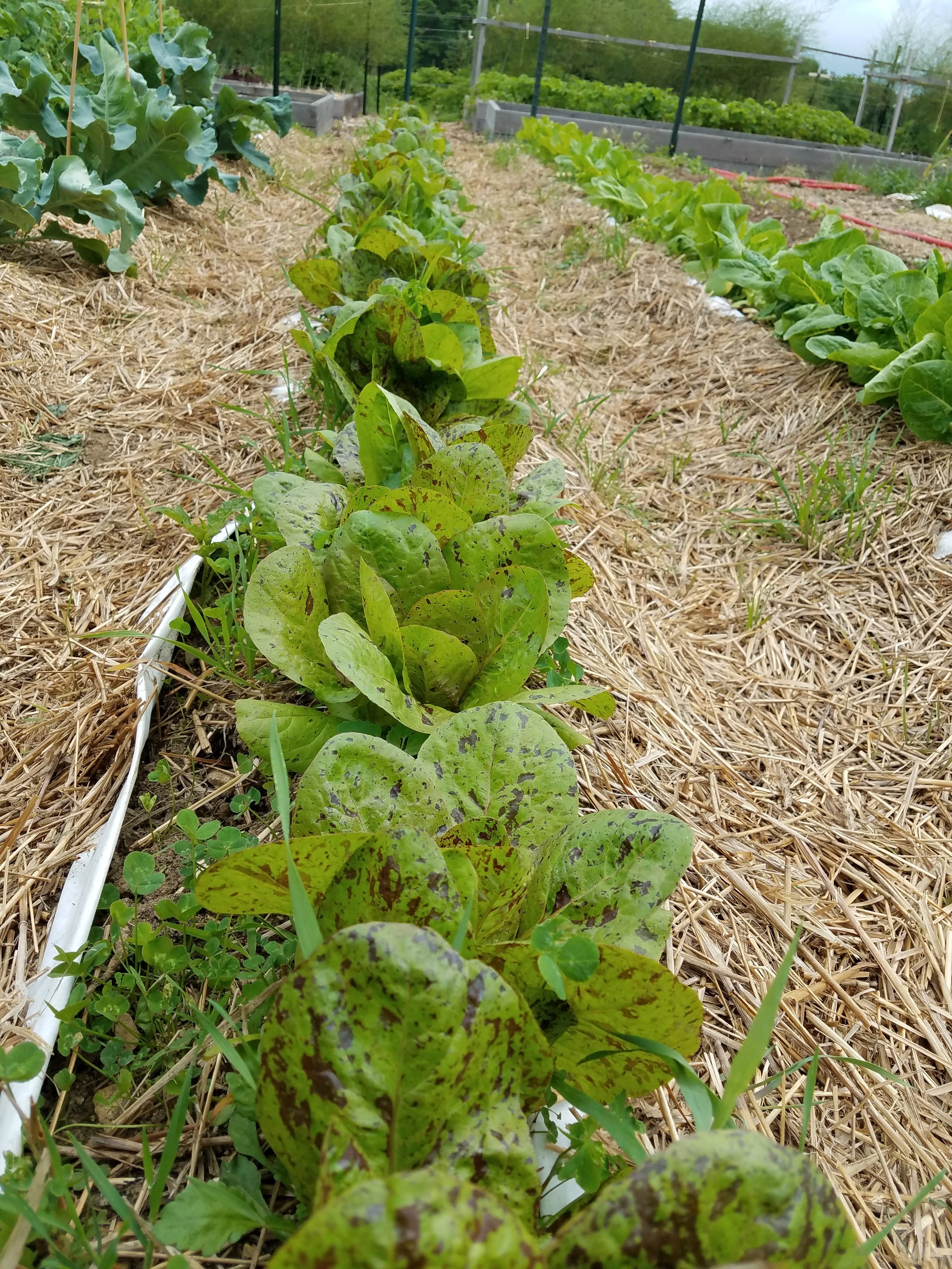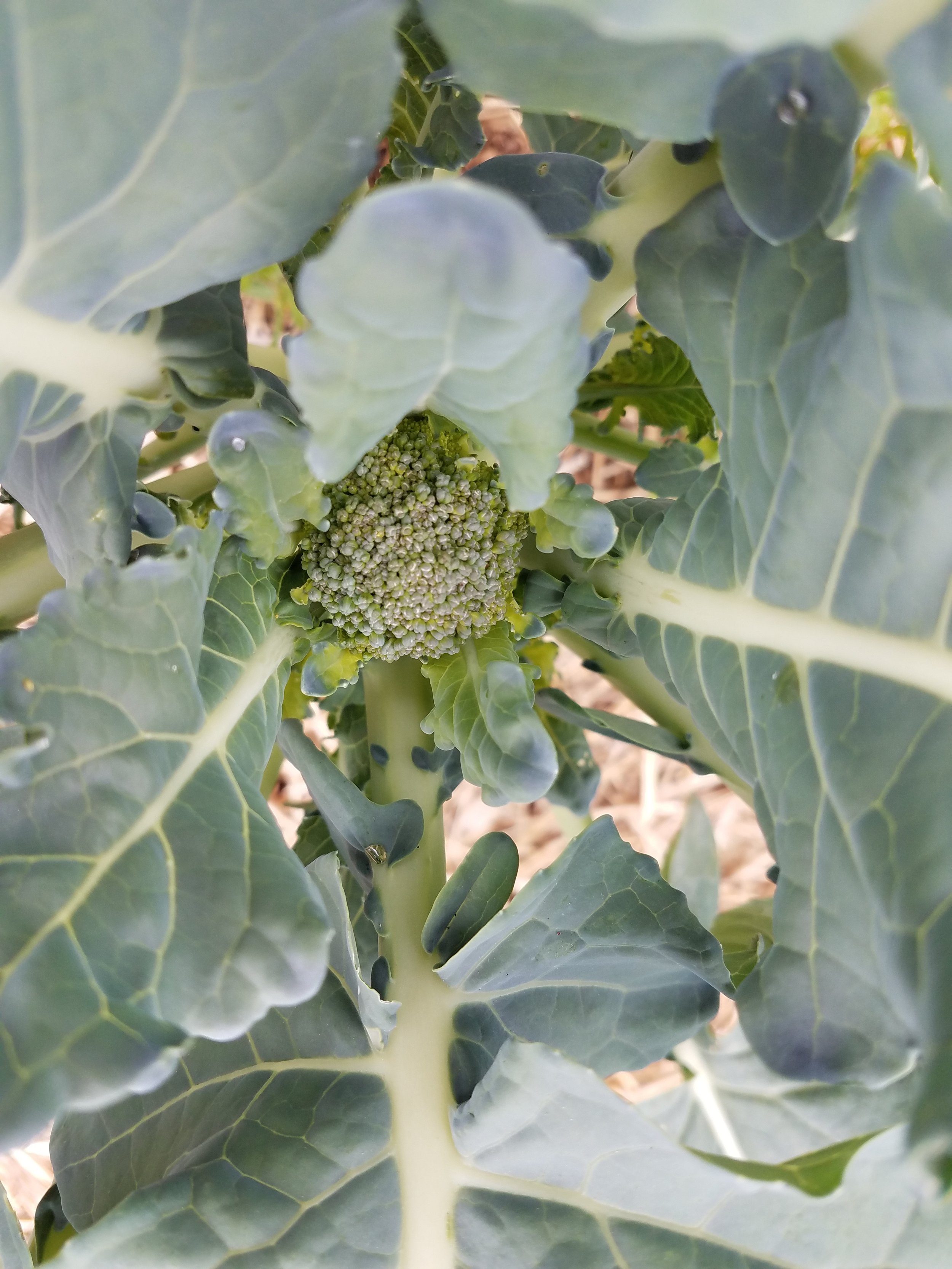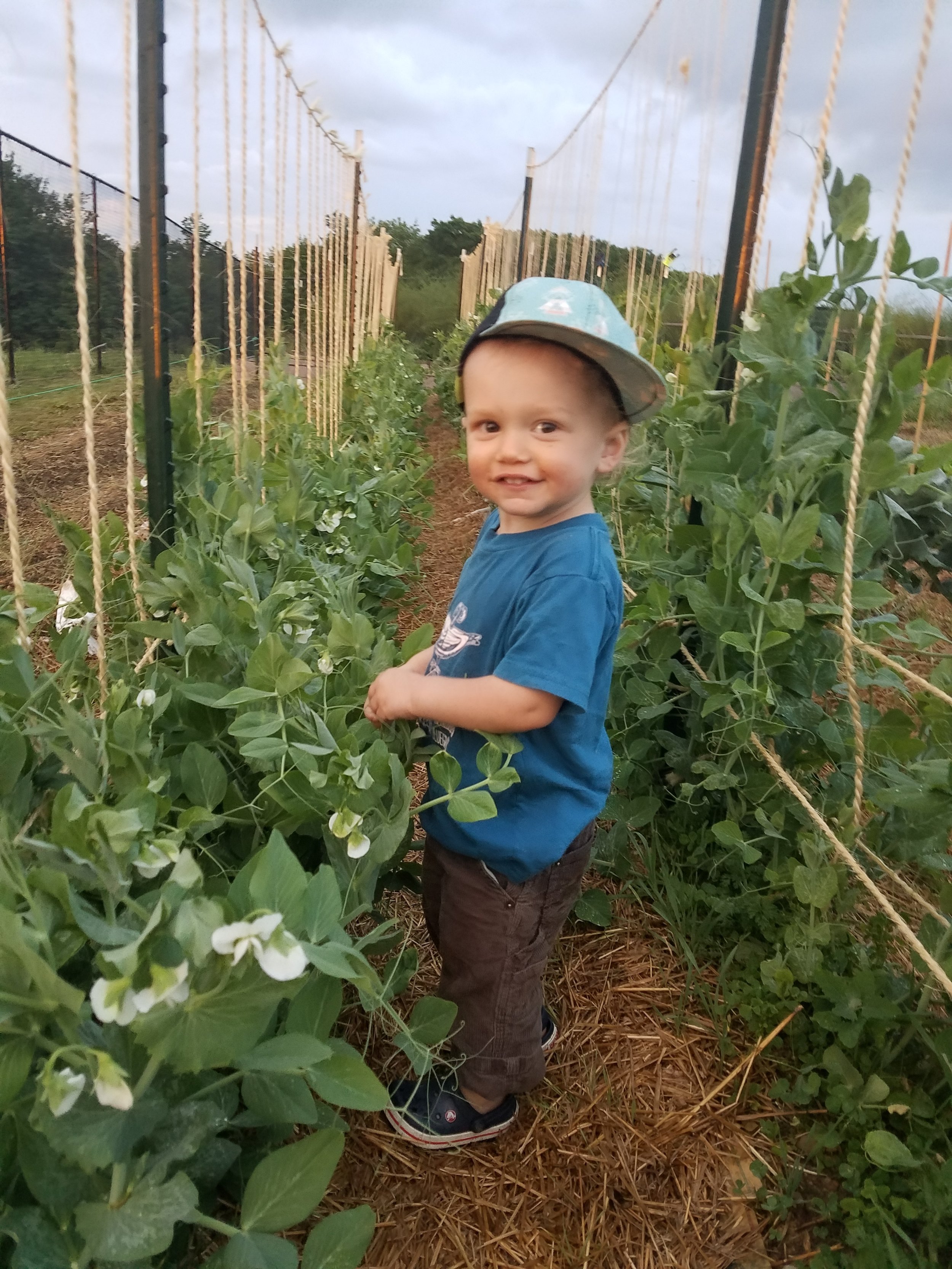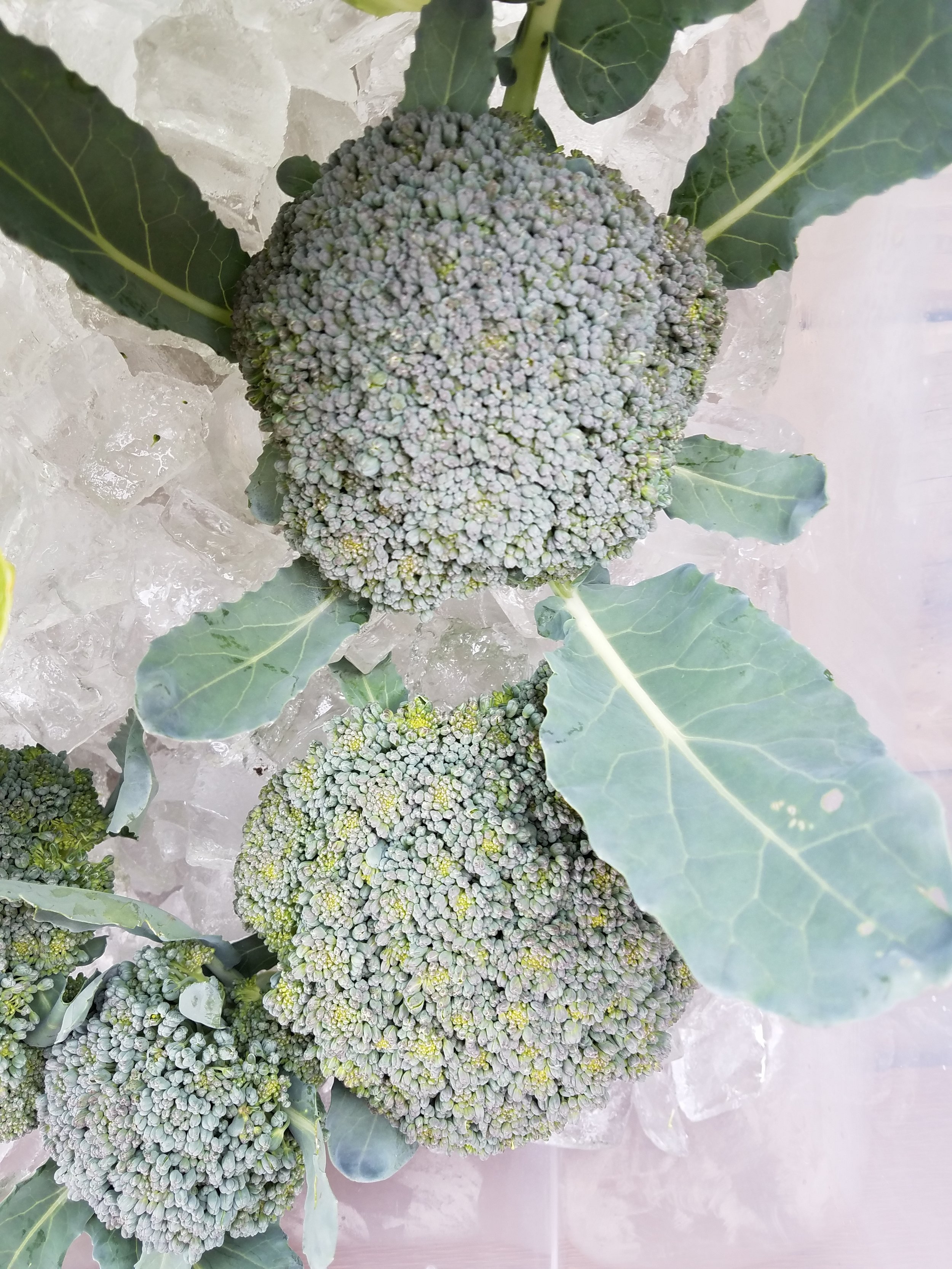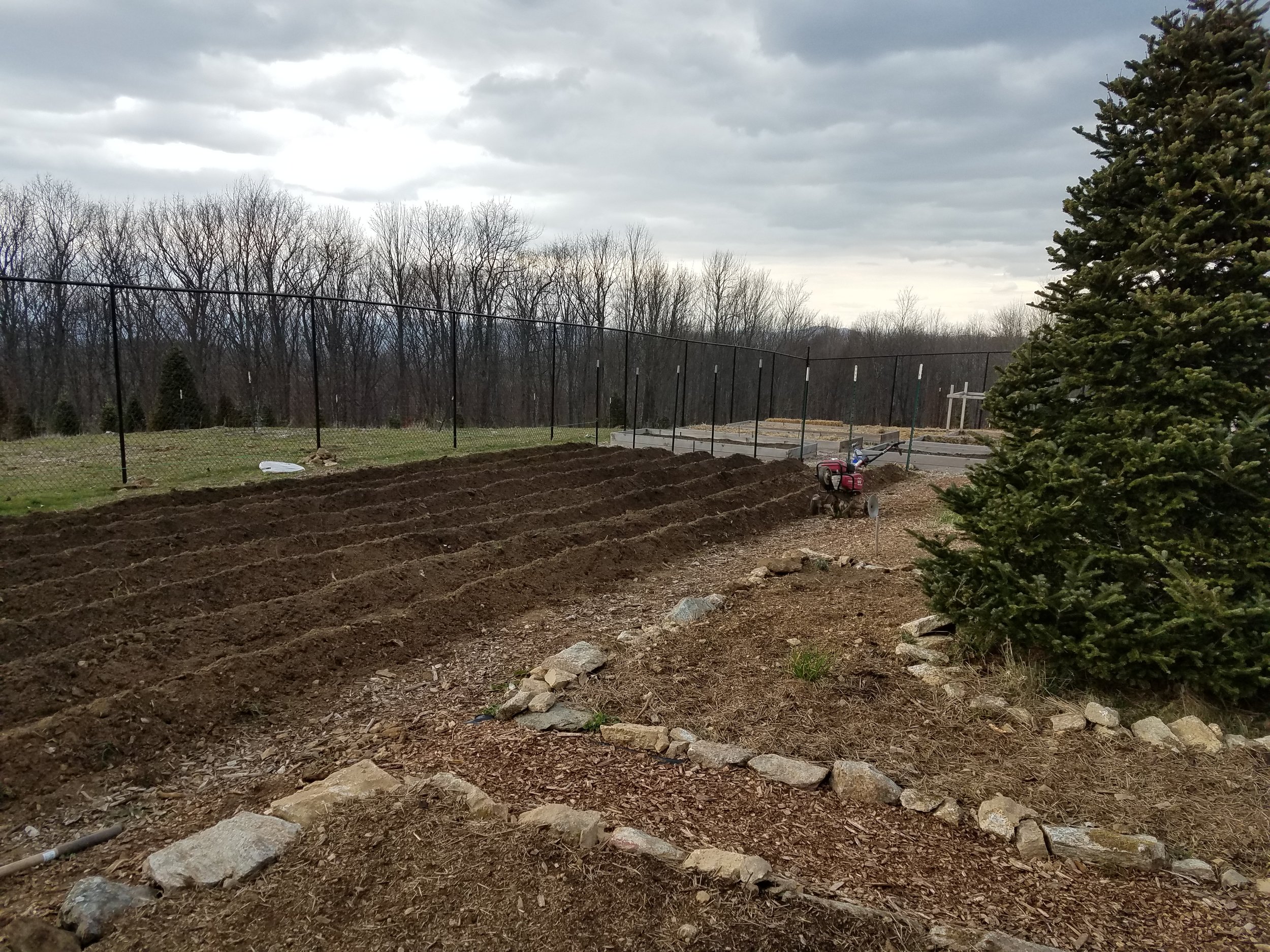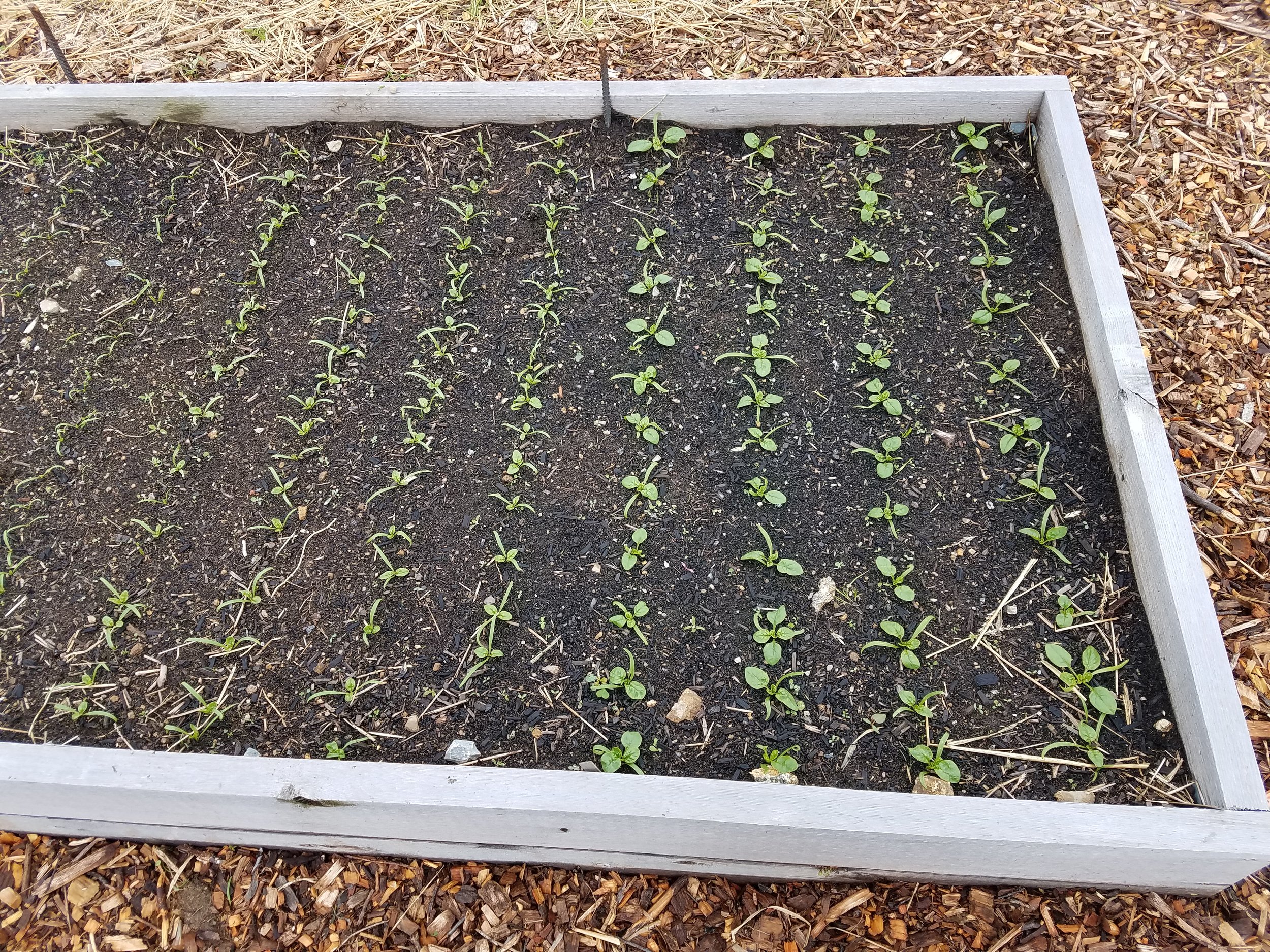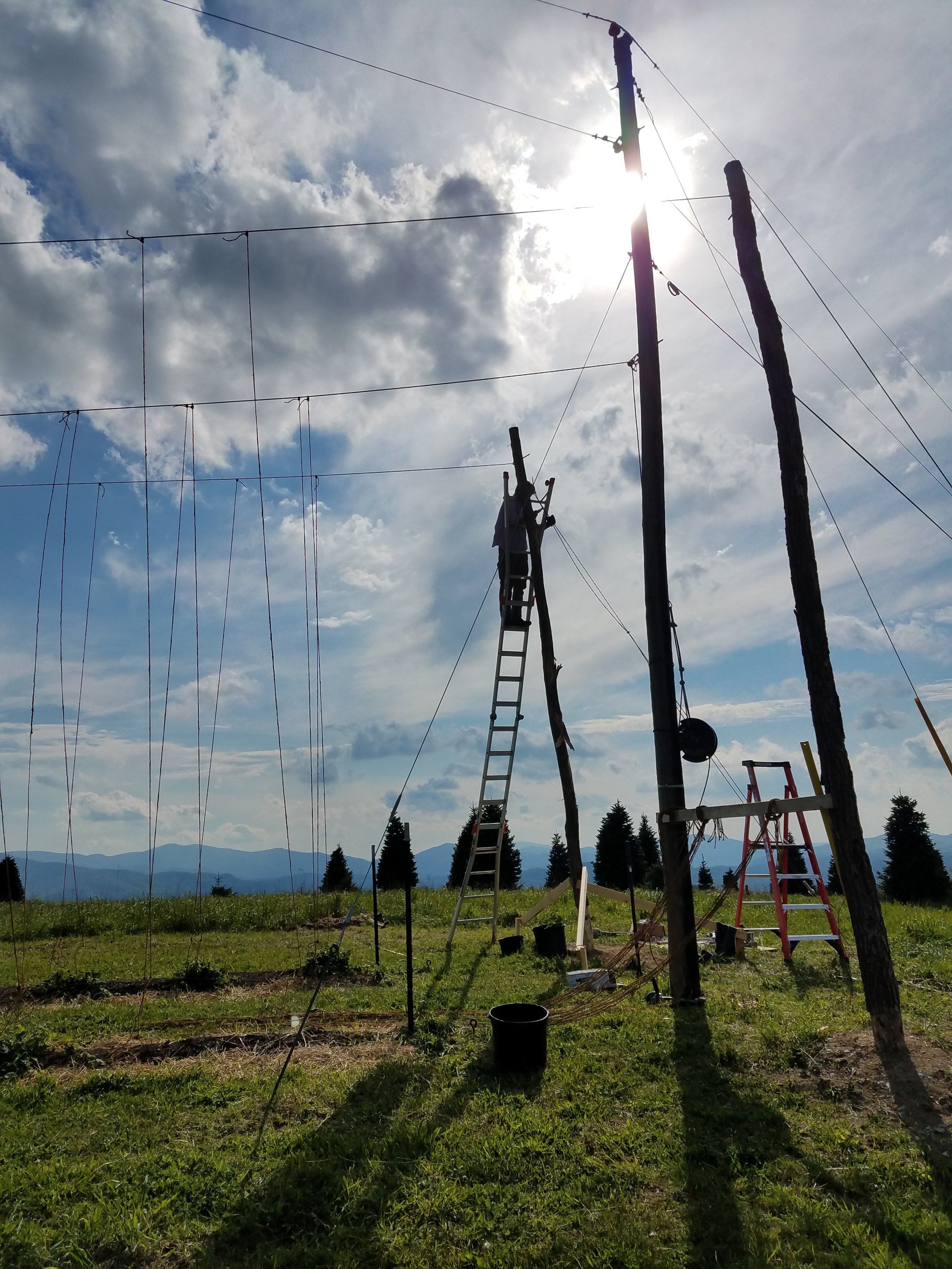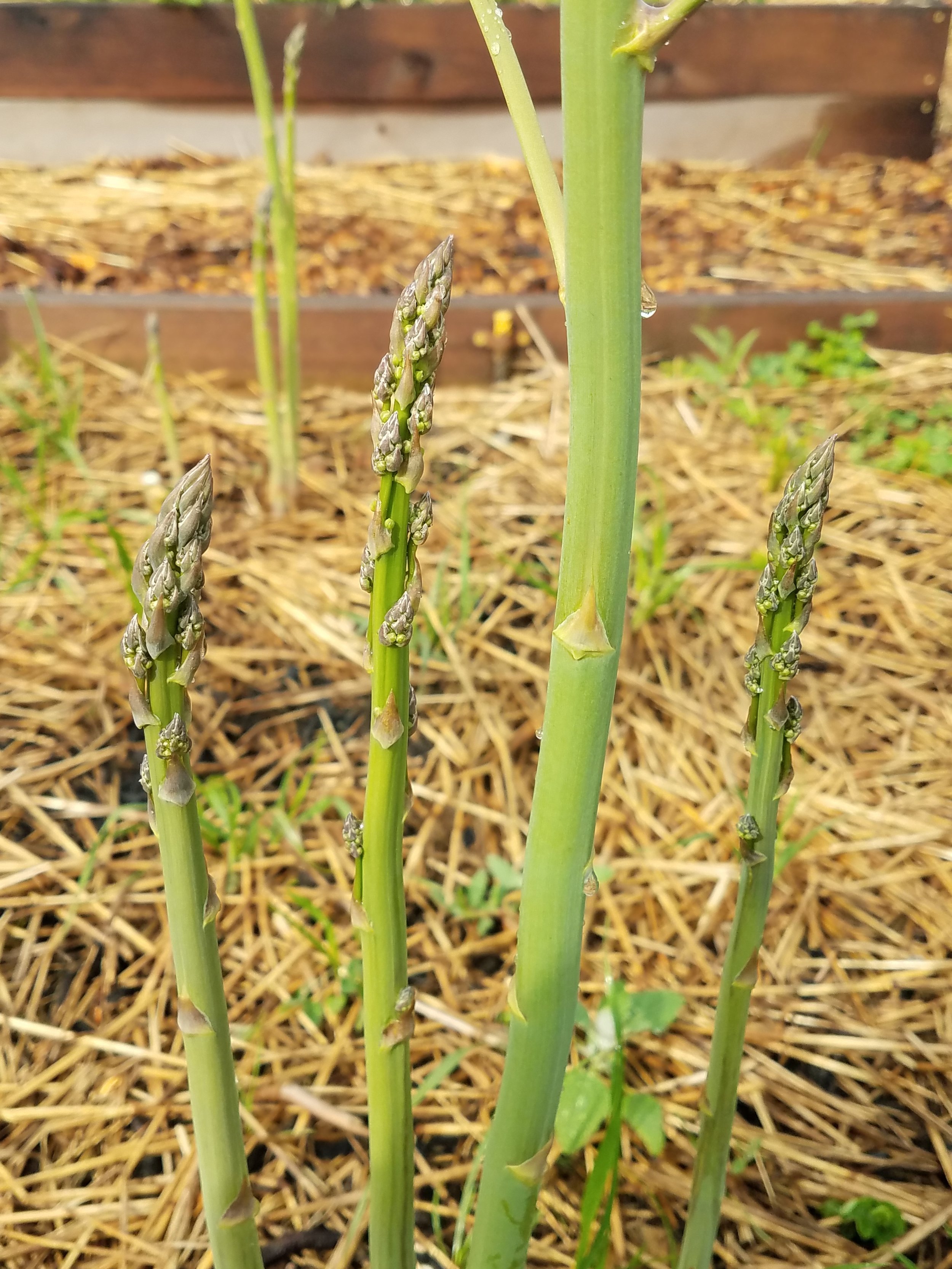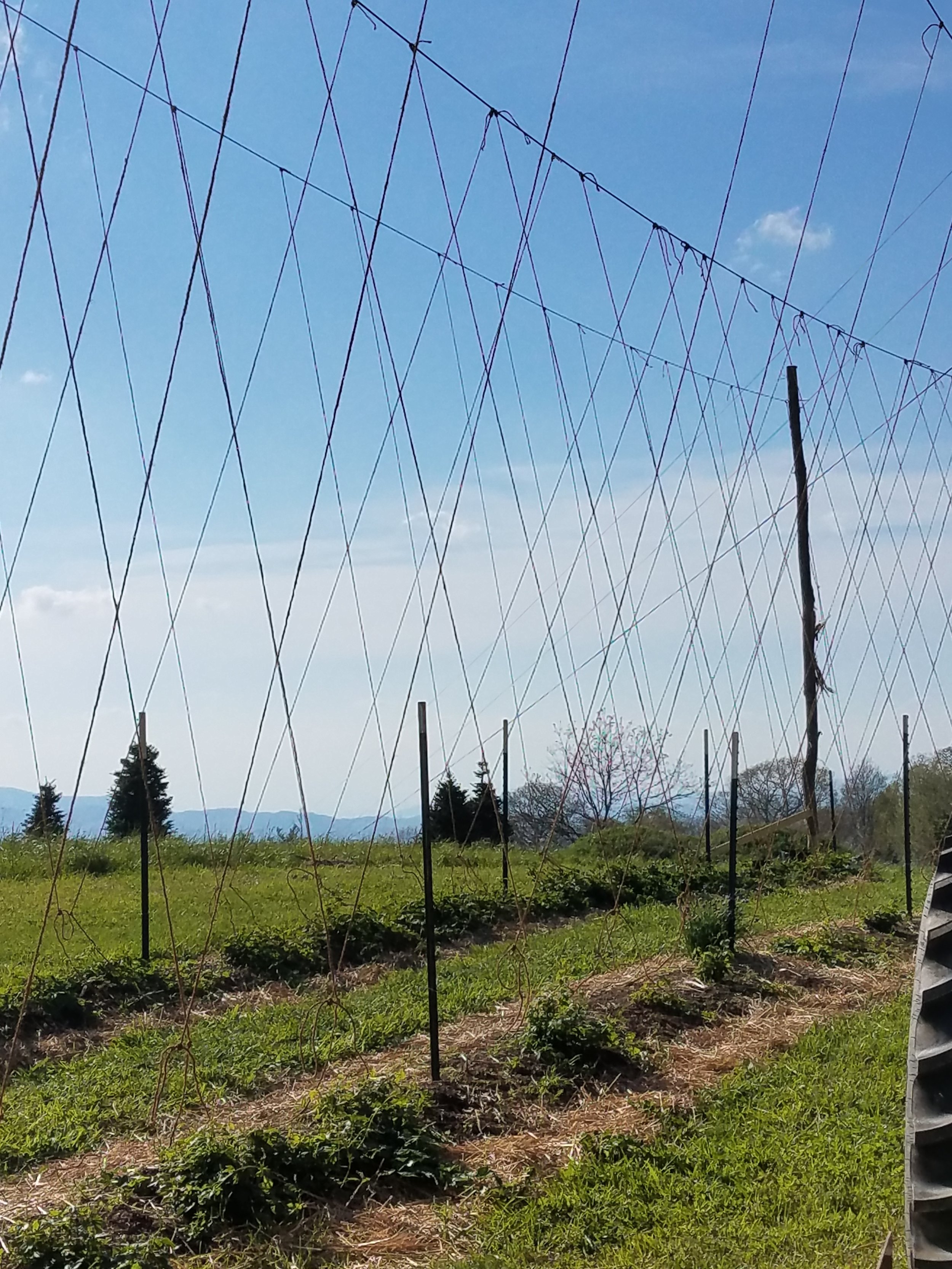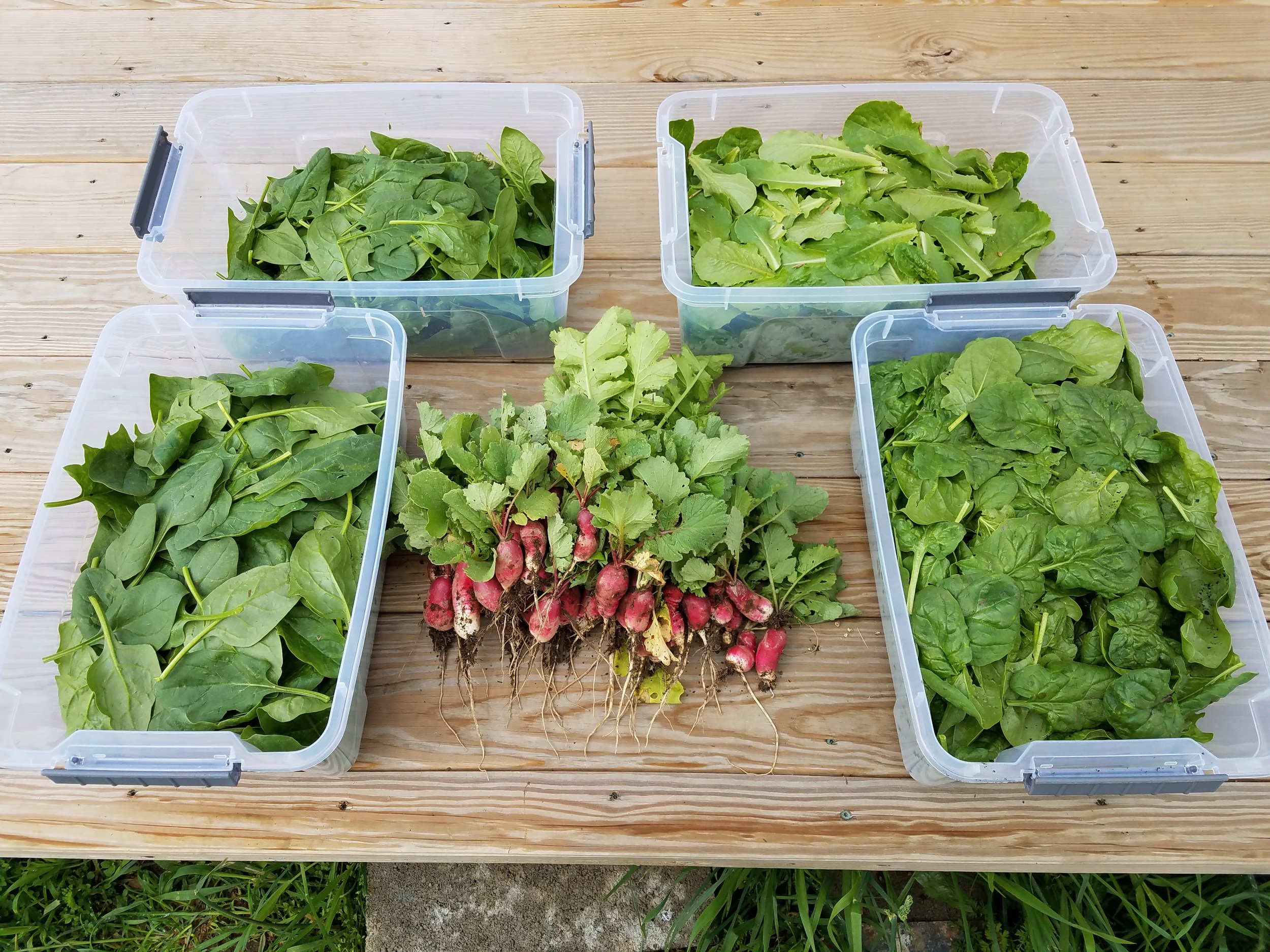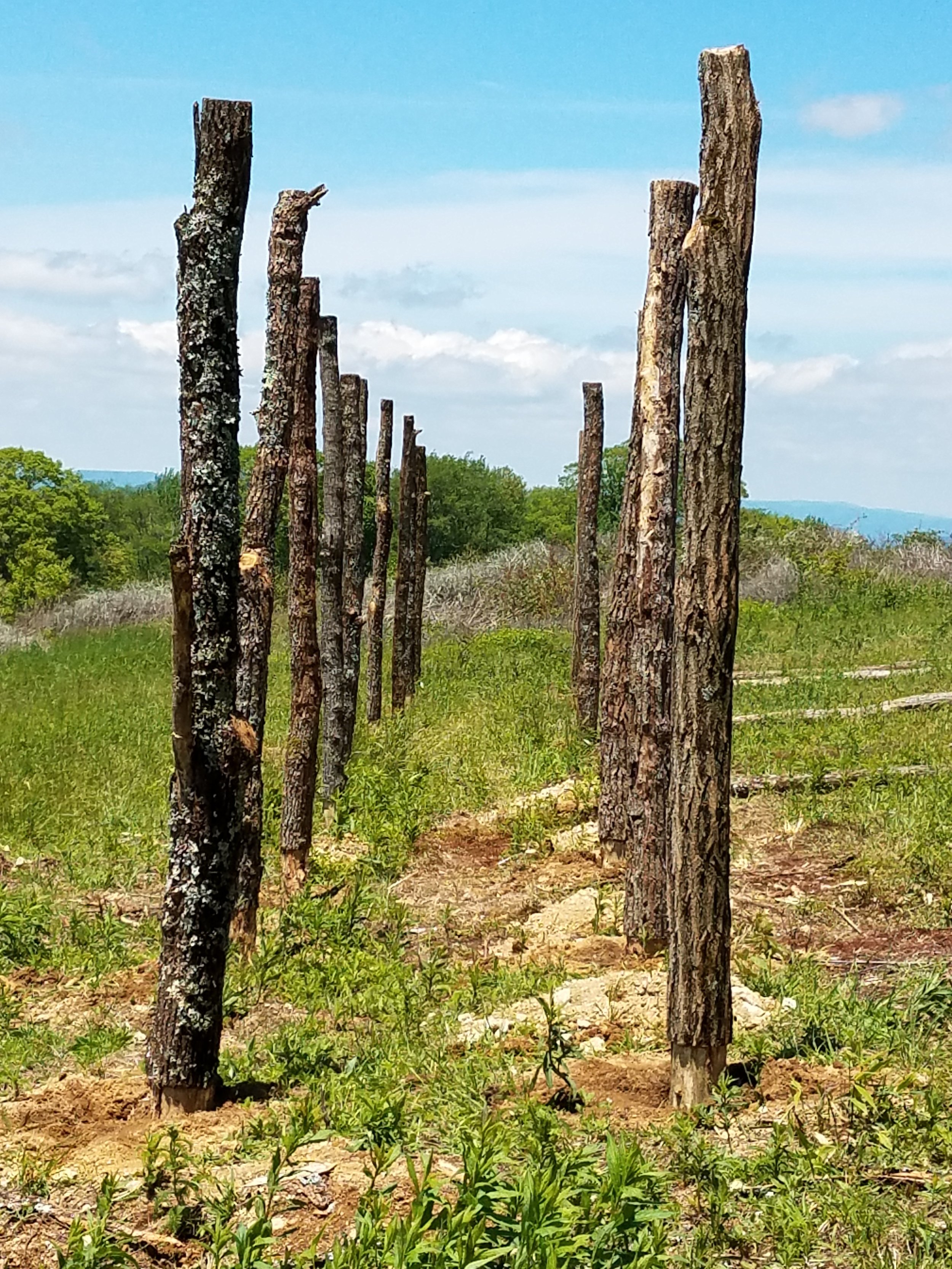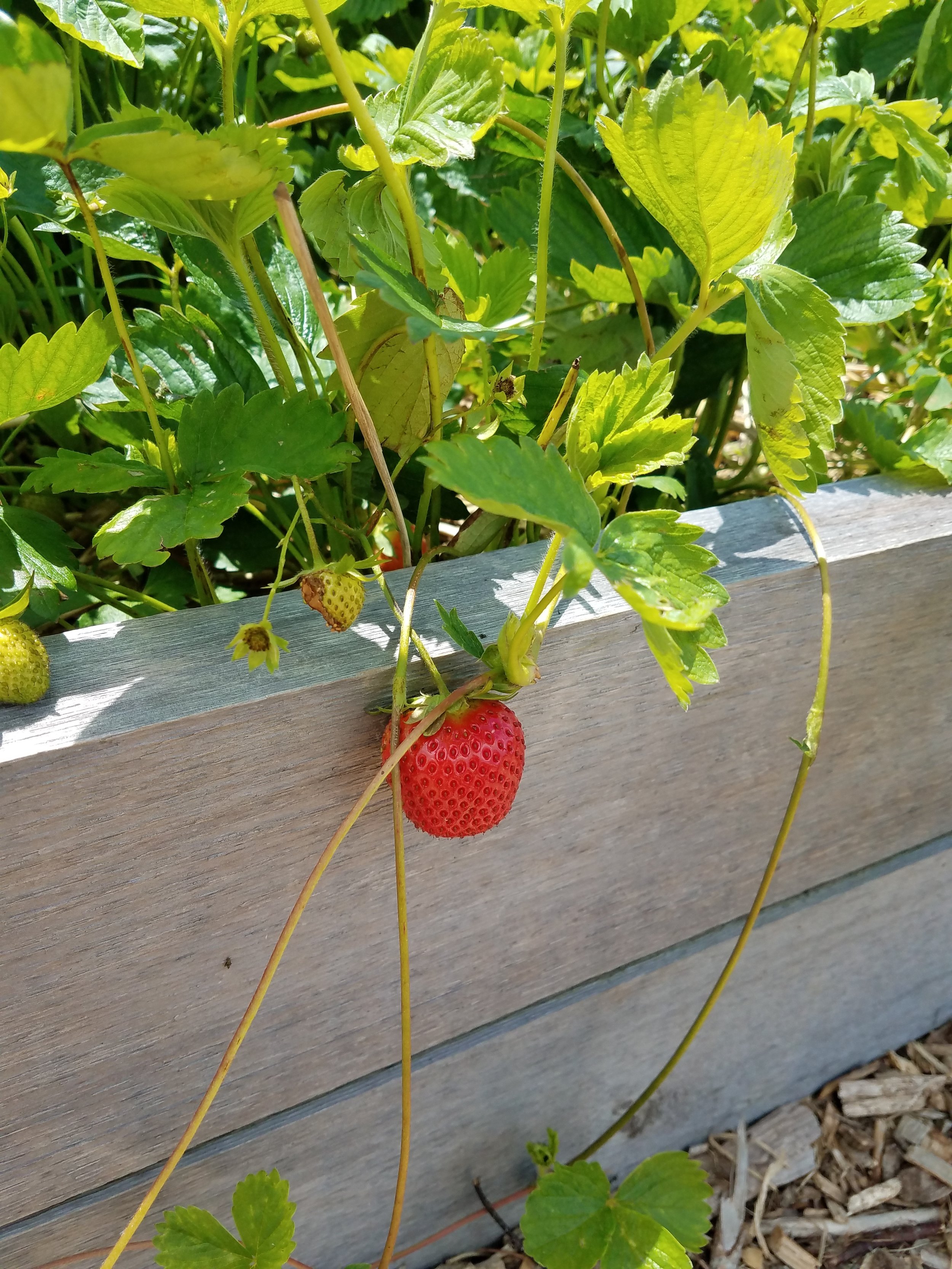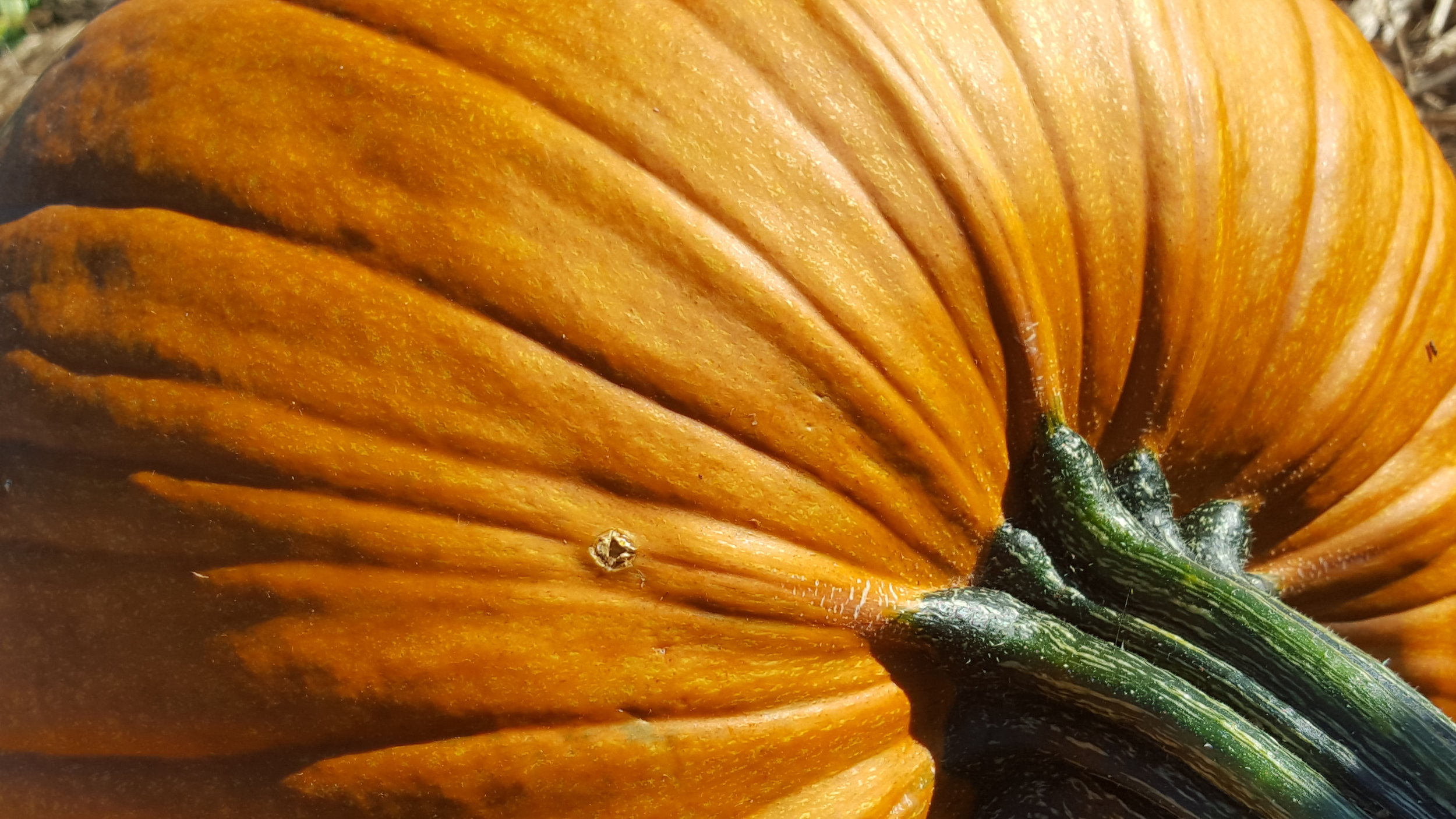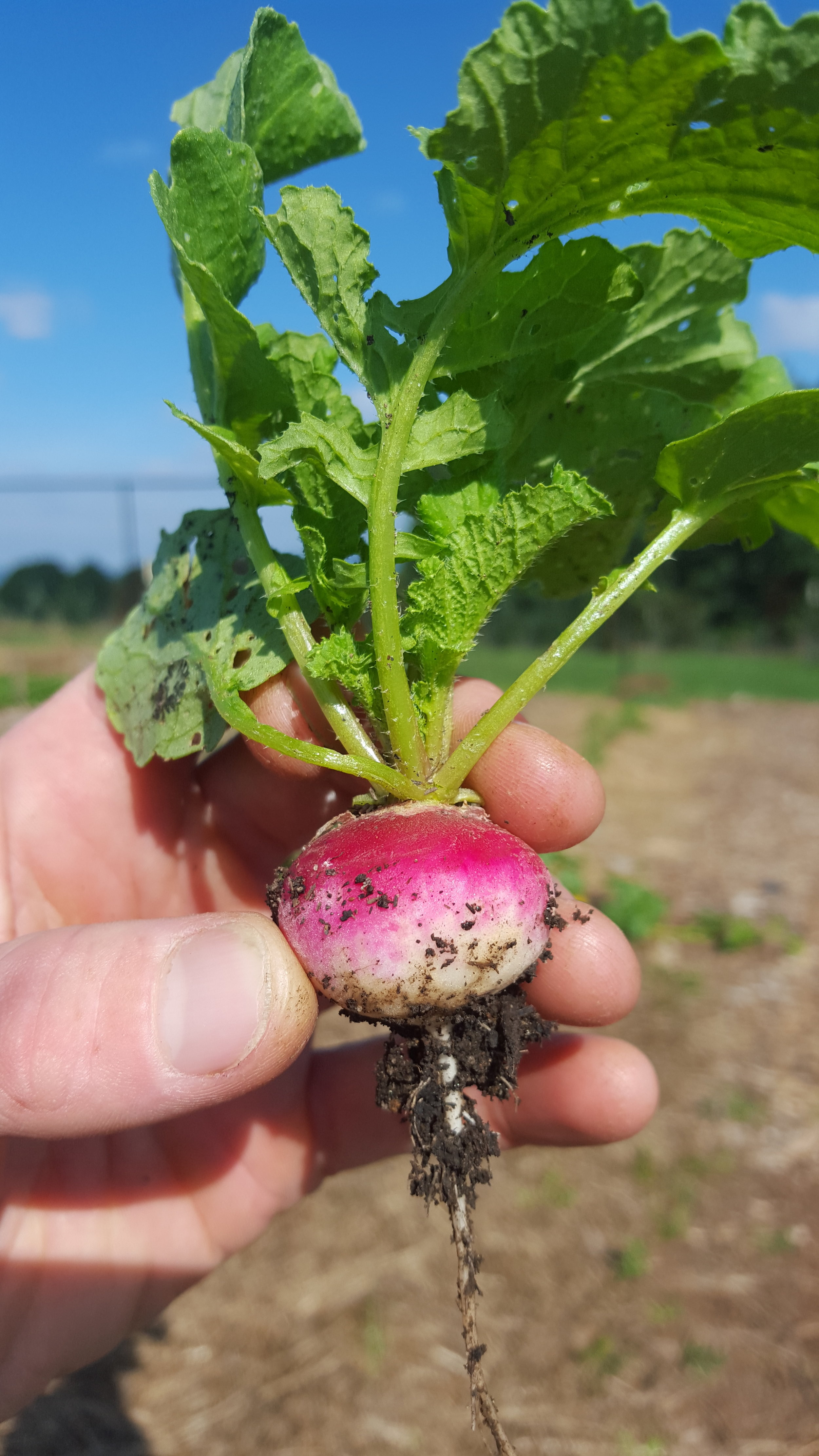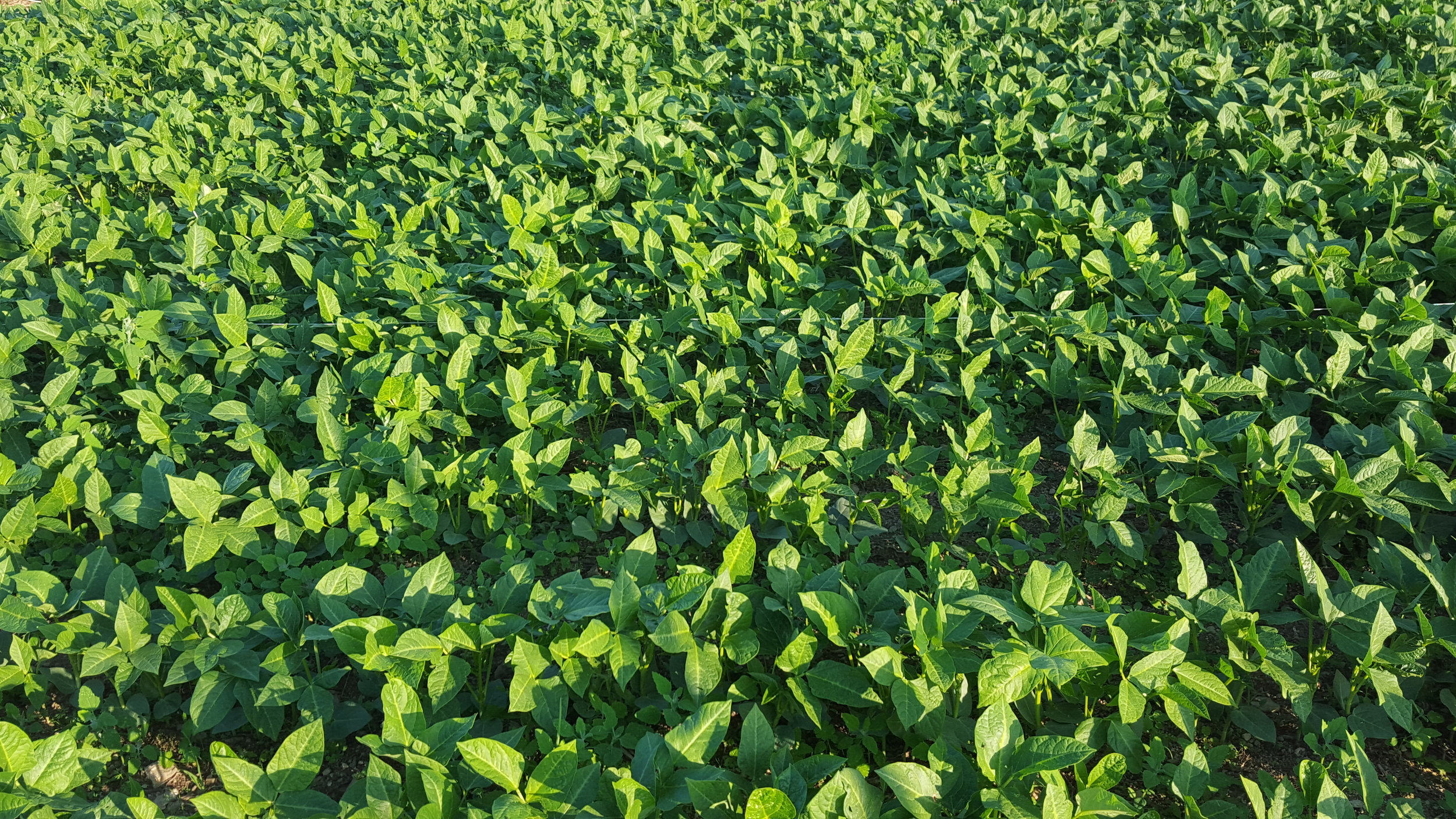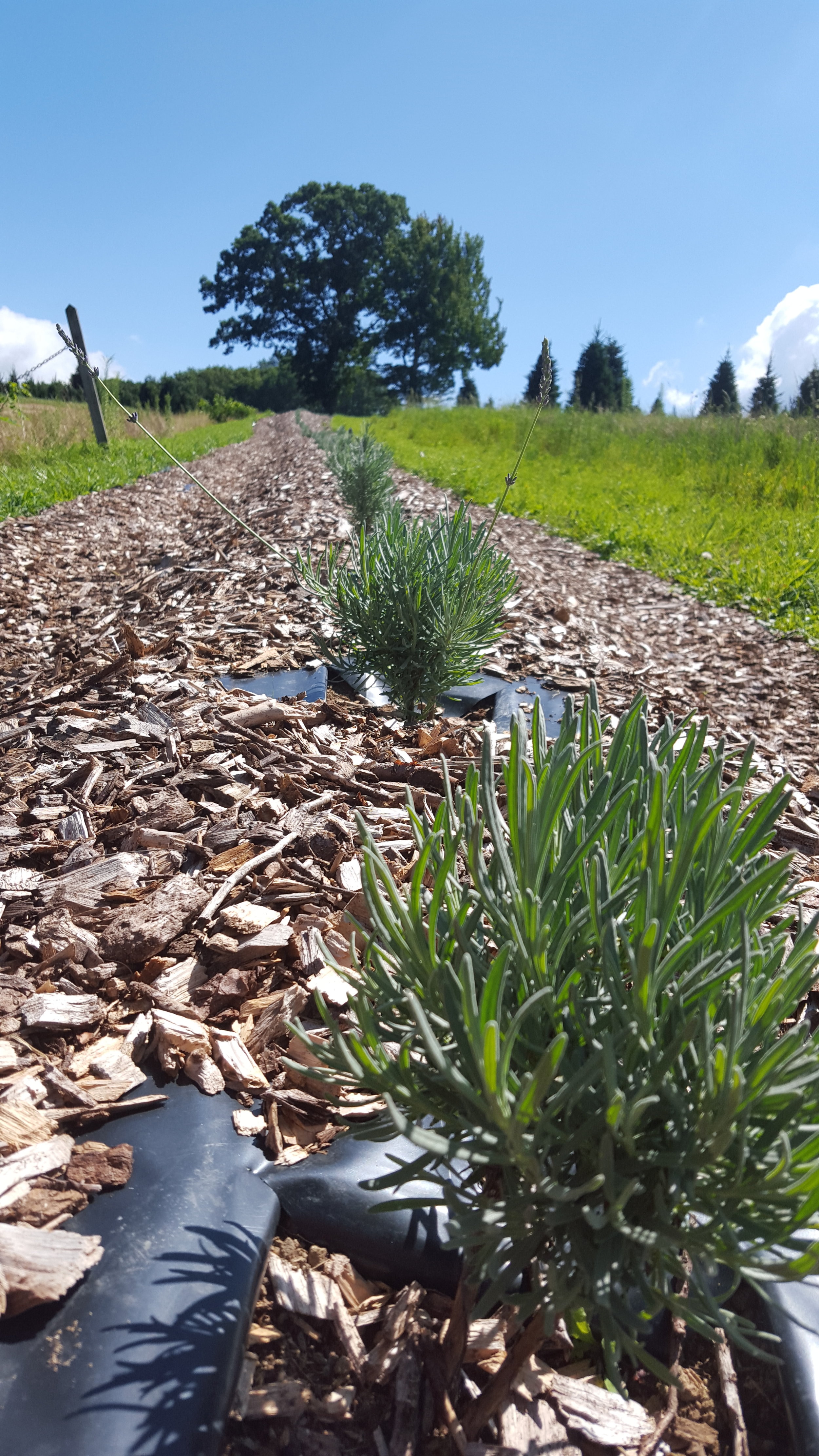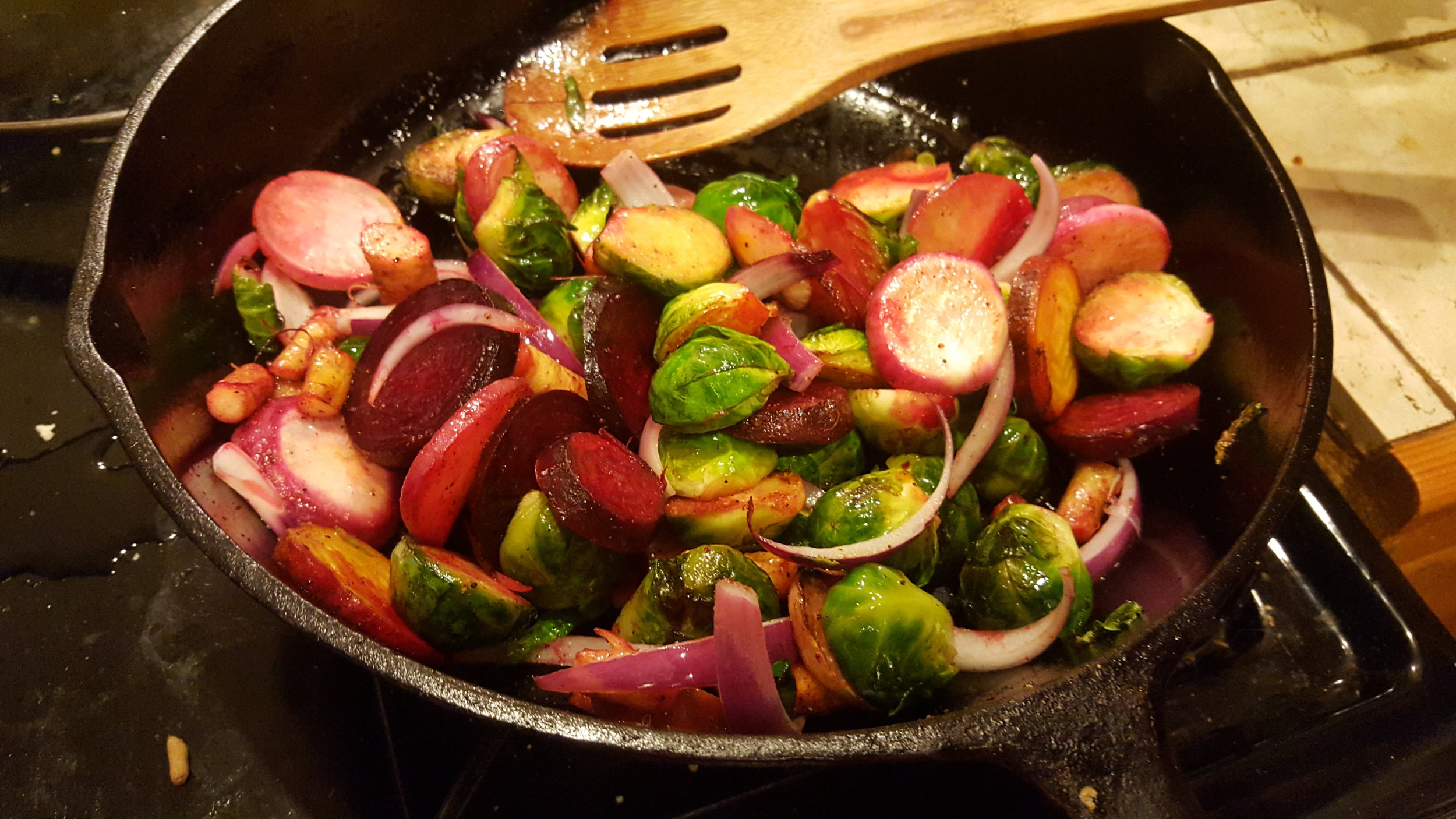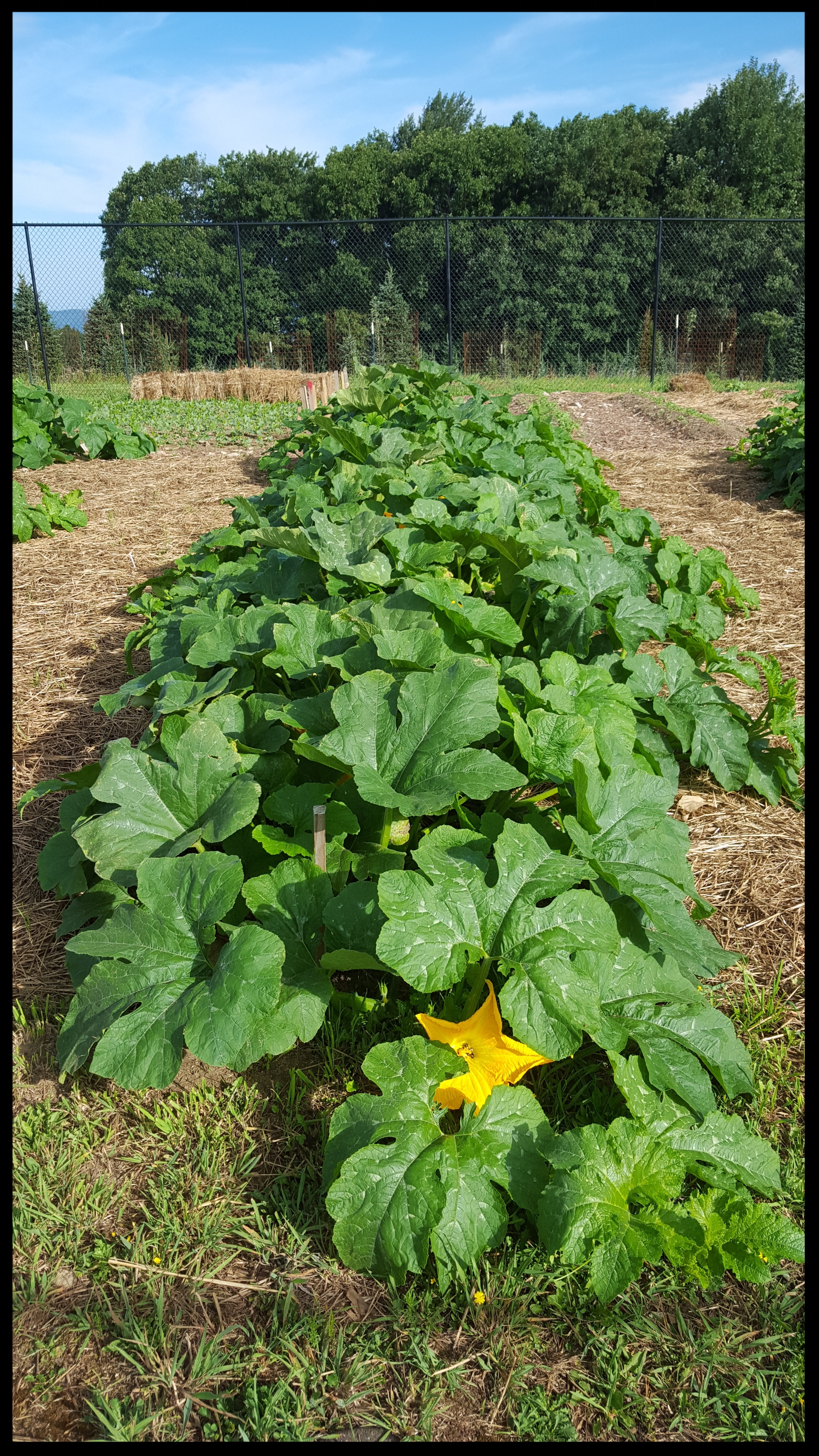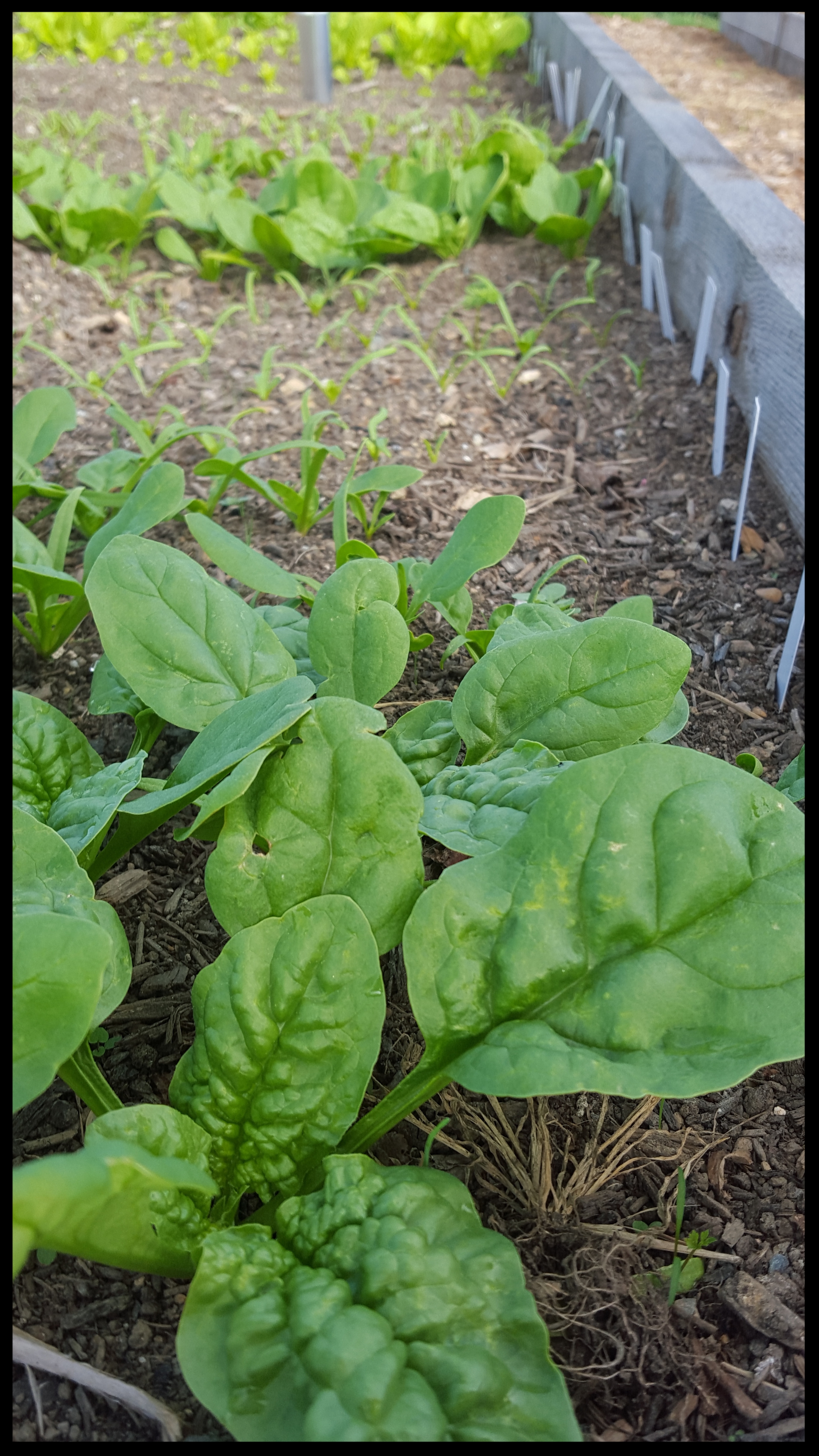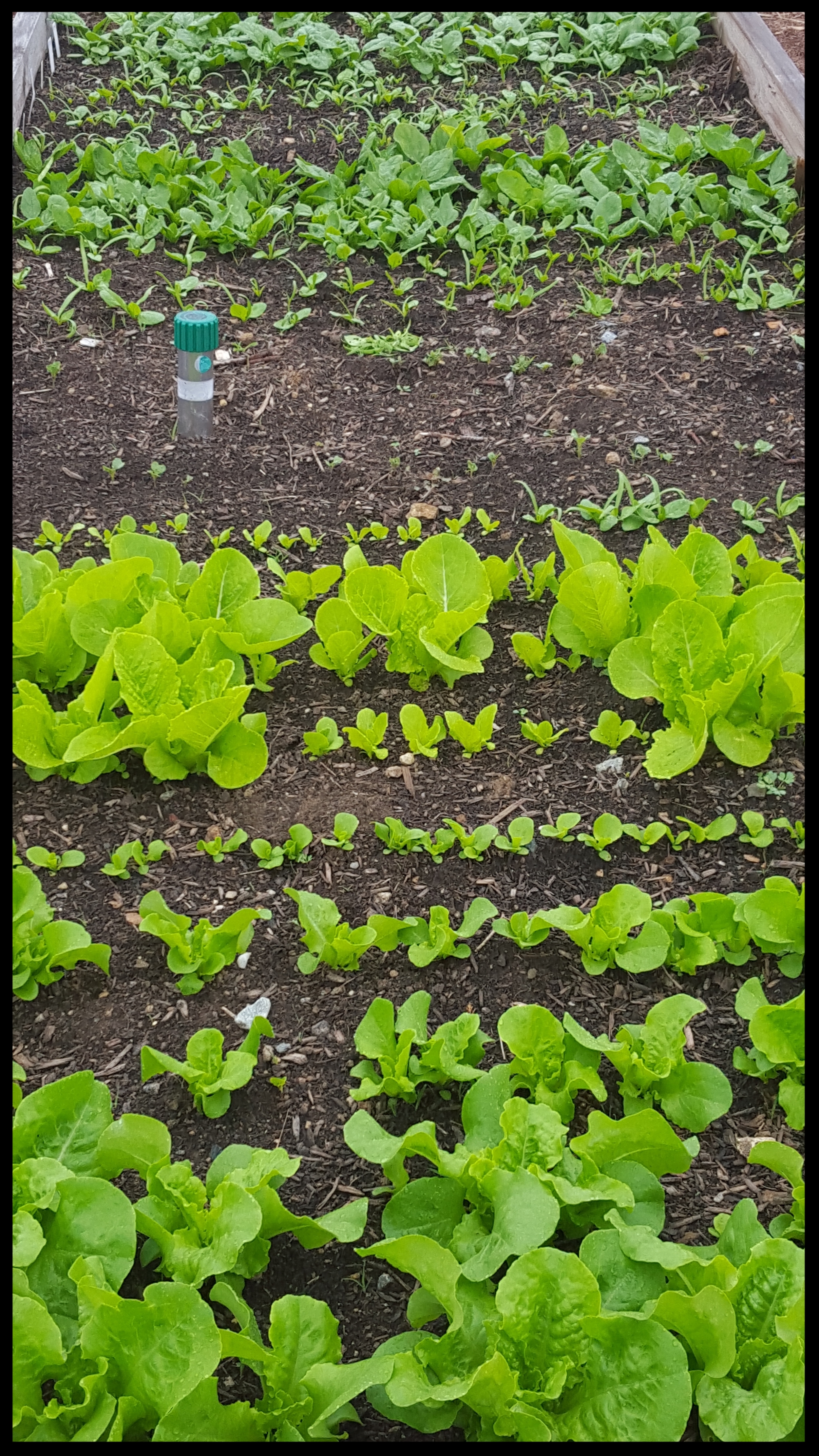Life is good at SKYe2 Farm! As vaccinations inch our way back to normality, the land has emerged from its hibernation. After a cold and very snowy winter, the farm is now in full spring splendor. As the days vacillate between picture perfect and windy harsh, the meadows are green with a sea of clover, mayapple, grasses, violets and dandelions.
As of May 1st, this is a brief write-up of SKYe2 Farm and its vibrant activity. We always welcome your visit because it’s our best way to show organic practices and for you to touch an incredible array of plants. Your day will be rewarded with breathtaking mountain views as you learn from this very unique farm. Please let us know before you come and register on our website. We promise to have you dazzled with the natural beauty of our farm and the high country.
When SKYe2 Farm began, our guiding precepts were sustainability, organic and experimental. Diversity also became another building block as we strived to plant anything that would grow in our climate zone. At altitudes of 4200’ to 4400’, our growing season is short but full sunlight from dawn to dusk is one key to our growing success. Initially, trees and perennials were our initial focus and now there are hundreds of dozens of varieties in the ground.
One obvious attribute of SKYe2 Farm is its mountain beauty. Panoramic long-range views feature Roan Mountain to the west and other spectacular views in each direction. The dramatic views are to landscapes that are currently undeveloped. However, the ongoing development by Eagle’s Nest has almost encircled this 38-acre mountaintop refuge.
In January we received an AgOptions grant to extend our electrical service to a drying trailer and to a new greenhouse. We are grateful to this program and for their support to expand our drying capabilities of lavender, hemp, garlic, mints, chamomile, calendula, hops and miscellaneous herbs. The grant will also underwrite a portion of the cost to run underground electrical cable to our greenhouse now under construction.
And speaking about our new greenhouse, I’d like to thank Preston, Jim, Billy and many other friends for their help with erecting the frame over the winter. The 30’ x 60’ x 12’ project turned out to quite significant. As farming time became more precious and because we lacked dependable electricity, lifts, tools and clear winter work days, we have decided to have the manufacturer complete the project.
Small Farmer’s Week was held March 21 to 27, 2021 and featured three farms in Avery County. Bill Hoffman, Avery County’s Extension Agent, asked our farm to participate and we were flattered. NCA&T sent its film crew out on a blustery March day to interview both Charles and me. They made a four-minute video that can be watched by requesting a link (gst.ocr@gmail.com). My hope is that the crew returns in July and films a second video when the farm has come to life.
Two years ago, the farm was the site for the Boone-in-Blossom festival. In 2020, the event was canceled due to the covid19 virus. Plans are underway by Gati Productions to host this event in mid to late August; the farm is in discussions as its likely venue. Attendees will see our hops ready for harvest and at their peak growth.
Yesterday I attended the Asheville Spring Herb Festival. This was my first expo and the hall was jammed with plants for sale and endless herbal products. My reason for attending was to make contacts with sellers that use plants common at our farm. One attendee was giving a seminar on goldenseal and related botanicals; he was most informed about local medicinal plants. Other attendees were selling tinctures and salves made from Appalachian plants. I promoted our farm as the highest in elevation on the east coast and that plants bathe in full sun and rest in cool evenings; it also has wooded areas face north and east. Several herbalists asked if we grew Arnica Montana but I was unfamiliar with this herbaceous flower. But in keeping with our experimental passions, seeds were ordered on my way home. By next year, we’ll know if wolf’s bane grows in the high country!
It’s fortunate to work with an individual that is well organized and that can implement our many ideas. My nephew Charles is just that person. Plus, he is a star kayaker; if his sport used golfing handicaps, he would have a negative number! Anyway, he is the pivotal driver behind the development of SKYe2 Farm since it inception in 2016. This season our plans are to complete our greenhouse, run electrical power throughout the farm, finish our grape trellis, expand the asparagus area with a purple variety, transplant experimental hops into the ground from cloth pots, create a fourth new garden area for garlic, grow more flowers and vegetables and to have lots of fun.
Our biggest plantings to date have been asparagus, garlic, lavender, calendula, hemp, mushrooms, chamomile, and hops. Because of this diversity, it has been a challenge to match viable markets with what we produce. Ideally, a single buyer will take our entire production. And once successful, we scale our production accordingly.
Here is a partial update of some of the plants in the ground.
New tip growth is just beginning on our 500+ large Fraser Fir trees. Because spraying was stopped five years ago, the fragrant light-colored tips are sought by brewers and tea makers. Since new growth is only visible for about a week, everyone must harvest so that we can fill open orders. Of all the items that we dry, fir tips have the best fragrance.
At the end of last year, we purchased fifteen Hewes Crab trees to plant this season. Our research concluded that it was the leading variety in favor with cider makers. By next year we will have planted fifty Hewes Crab trees and these are in addition to our baking and eating apple varieties. Combined, we have planted one hundred apple, pear, pawpaw, persimmon and cherry trees.
We learned from tea makers that calendula, chamomile, elderberry and more items that we can grow are used in their blends. Our areas for both calendula and chamomile production were expanded last year and again this season. So far, these flowers have not been eaten by the deer or require a fenced area. However, to deter the steady hoof traffic when we are away, motion sensitive water sprayers have been installed along the perimeter. They definitely squirt anything that moves.
Charles continues to experiment with new varieties of garden flowers and vegetables. Three of our favorite flowers are peony, gladiolas and dahlias and more will be added once our greenhouse is complete. We have an unusual tomato and a wonderful pepper that local restaurants order more than we have grown. Again, the greenhouse should solve this imbalance. Hundreds of plants grow inside the garden; nasturtiums and other vines grow along the fence. In the back, we have three productive rows of raspberry bushes. These have been pruned and the soil has been amended. And we have surprising demand for dried raspberry leaves too. One interesting raspberry fact is that they don’t co-exist well with blueberries and blackberries; consequently, the three berries are separated by hundreds of yards “to keep the peace.”
Over our first three seasons, Charles inoculated 4’, mostly sweetgum logs with mycelium. These logs were placed in a very shady, evergreen tree area that remained cool and was protected from the sun. We now harvest regular flushes of Shiitake and Oyster mushrooms and sell them either fresh or dried. One incredible fact is that mushrooms can exponentially absorb the suns vitamin D. If fresh harvested mushrooms are placed gill side up, in direct sunlight, for 6 hours daily, for two consecutive days, the vitamin D content will increase 460 times!
Our lavender is in a battle with meadow grasses. We have finished the entrance area and are slowly weeding and mulching our labyrinth circles with disgarded Avery Times newspapers and gravel. We hope these efforts will tip our fight against Mother Nature. Soon we will transplant dozens of potted plants in areas that need replanting. In July, stalks will be harvested and hung to dry the flowers for 3-4 weeks.
Several years ago we started a grape trellis with locust poles from Elk Park. Our attempt to grow Concord and Niagara grapes lacked proper attention and our efforts resulted in failure. Thanks to the generosity of a friend with downed locust trees, we added eleven cross beams and completed the trellis. Charles strung support cables thru the structure and will plant more varieties in the near future.
Our thirty blueberry plants look healthy and have not required too much attention. More pine bark nuggets will be placed on the raised beds. Longer hoops will be attached to improve the bird protection netting. Once taller, it will be easier to harvest blueberries and to pick the calendula that also grows in the beds. Three rows of thornless blackberries grow along Old Beech Mountain Rd. and these look very healthy too. The trellis system installed last year seems to be adequate and has kept the vines off the ground.
On a sad note, the bears wrecked our three honey bee hives over the winter. That was after it happened the year before and after we relocated the hives. We’ll try bees again but not this season. In the interim, we hope to partner with a beekeeper and to let them locate their hives at the farm; especially before the lavender is in bloom. Our bee platform is sufficient for seven hives.
Last but certainly least, is our hops yard. Hops are a fun plant to watch as they climb an 18’ trellis. But like an adolescent, hops require constant attention … mildews, insects, soil deficiencies and nitrogen demands can thwart their productivity. Plus, hops require gound mulch, ongoing weeding, selective thinning and hand binding. Fairly soon our plants will race at 3-4” per day up the coir ropes. Hopefully they will complete their journey before the summer solstice. After June 20th the plants begin expending their energy outward to grow sidearms. Our yard includes 400 Cascades and 30 of an experimental variety from the NC State farm in Mill Rivers. Downy Mildew can be a major problem and samples have been submitted to NCSU for testing.
In conclusion, life is good at SKYe2 Farm. We are always busy and have something interesting going on and so Please come to visit!





